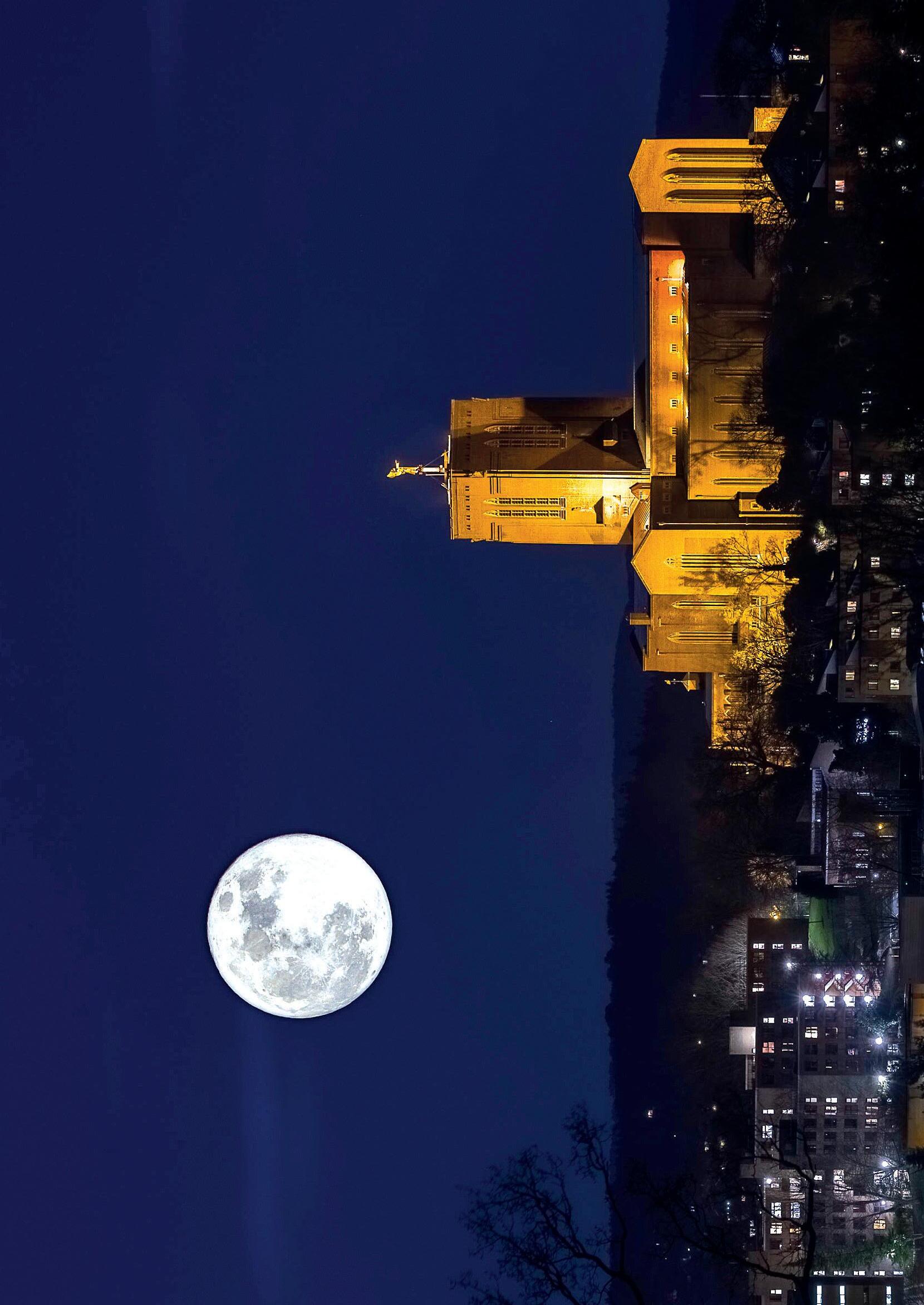CATHEDRAL MUSIC



Rodgers is proud to present the next generation of home and church organs from our Inspire Series. Born from the dream of enhancing spiritual experiences at churches all over the world… Born from the dream of homes filled with exquisite musical sounds... Born from the dream of bringing this experience within reach of anyone... All created because we believe in that dream.
Rodgers is proud to present the next generation of home and church organs from our Inspire Series. Born from the dream of enhancing spiritual experiences at churches all over the world… Born from the dream of homes filled with exquisite musical sounds... Born from the dream of bringing this experience within reach of anyone... All created because we believe in that dream.
The Rodgers Inspire 233 and the smaller 227 are designed for those who believe in dreams.
The Rodgers Inspire Series 227 and 233 organs are designed for those who believe in dreams. www.rodgersinstruments.com

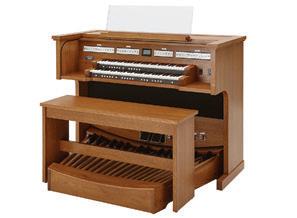
CATHEDRAL MUSIC is published twice a year, in May and November.
ISSN 1363-6960 NOVEMBER 2018
Editor Mrs Sooty Asquith, 8 Colinette Road, London SW15 6QQ editor@fcm.org.uk
Editorial Advisers
David Flood & Matthew Owens
Production Manager Graham Hermon pm@fcm.org.uk
FCM Email info@fcm.org.uk
Website www.fcm.org.uk
The views expressed in articles are those of the contributor and do not necessarily represent any official policy of Friends of Cathedral Music. Likewise, advertisements are printed in good faith. Their inclusion does not imply endorsement by FCM.
All communications regarding advertising should be addressed to:
DT Design, 1 St Wilfrids Road, Ripon HG4 2AF 07828 851458
d.trewhitt@sky.com
All communications regarding membership should be addressed to:
FCM Membership, 27 Old Gloucester Street, London WC1N 3AX
Tel: 020 3637 2172
International: +44 20 3637 2172 info@fcm.org.uk
Every effort has been made to determine copyright on illustrations used. We apologise for any mistakes we may have made. The Editor would be glad to correct any omissions.
Designed and produced by:
DT Design, 1 St Wilfrids Road, Ripon HG4 2AF 07828 851458
d.trewhitt@sky.com
Cover photographs
Front Cover
Interior of Hereford Cathedral showing the corona
Photo: Doug Betts
Back Cover
Guildford Cathedral
Photo: David O Photo






Most CM readers know that 2018 marks the centenary of the death of Hubert Parry, an outstanding figure in the musical world, an inspiration to his students and a free-thinker of some note. His outlook, remarks Michael Trott, a lifelong enthusiast and author of Hubert Parry: A Life in Photographs, was characterised by a perpetual quest to ‘understand life in its complexity and a sense of the spiritual beyond orthodox religion’. This calls to mind another composer featured in these pages, James MacMillan, whose 60th birthday approaches next year. Phillip Cooke, himself an important composer and most likely familiar to many from recordings made of his music by the college choirs of Selwyn (Cambridge) and Queen’s (Oxford), looks at MacMillan’s early life and at his prodigious choral output. As with Parry, MacMillan’s secular works are as numerous and important as his sacred compositions, though it has to be said that no piece of Parry’s was ever live-streamed from the Sistine Chapel, as happened to MacMillan’s Stabat Mater
One of the Gatherings planned for 2020 is to be in Dublin, and it is hoped that a myriad FCM members will make the journey to the Fair City and enjoy St Patrick’s and Christ Church cathedrals, the surrounding Georgian architecture and the brilliant museums and libraries. Stuart Nicholson, Master of the Music at St Patrick’s, discusses the joys of musicmaking in Dublin, the lusty singing of his boy (and girl) choristers, and the different tunes for Hark! the herald Angels
sing... (Whilst writing about Christmas, may I remind you to buy your FCM Christmas cards now – one of the designs is of St Patrick’s Cathedral in Dublin – all proceeds from sales of the cards will, as always, help to support choirs and cathedrals in need.)
Greg Morris, Associate Organist at Temple Church, has recently been entertaining London audiences with his series of 28 concerts in some of the capital’s most iconic ecclesiastical buildings. Entitled ‘Complete Bach’, the concerts have encompassed all the surviving music written by the great composer for the organ. Read how Greg decided what pieces to include, what to play with what and which organ would best suit which music. Which would be the most suitable churches to choose...? Temple was the base, of course, even though the organ only dates back to the 1920s, but thanks to Harrison & Harrison it copes with Bach remarkably well. Other churches included Southwark Cathedral, St Martin-in-the-Fields, St Paul’s and the relatively tiny St Matthew’s Westminster.
In September I went to marvel at an extraordinary library of books and manuscripts gathered over the years by a great enthusiast of such things, Gervase Duffield. Amongst the literary tomes of a recent purchase were collections of various canticles for morning and evening services specially bound many years ago for use by the choir at St Asaph’s Cathedral. Their condition could be described as ‘used’, but since one of the library’s specialities is rebinding old and valuable books, any parties interested in purchasing these volumes could take advantage of this option at a favourable price. Email editor@fcm.org.uk if you would like to know more; there are approximately 50 identical volumes, with composers ranging from Jeremiah Clark to Stainer.
Enjoy the magazine.
Sooty AsquithLog onto www.fcm.org.uk and fill in the form, or write to/email the address given on p3.
Member benefits include:
•welcome pack
•twice-yearly colour magazine and twice-yearly colour newsletter
•‘Singing in Cathedrals’: a pocket-sized guide to useful information on cathedrals in England, Ireland, Scotland and Wales
Opportunities to:
•attend gatherings in magnificent cathedrals
•meet others with a shared interest in cathedral music
•enjoy talks, master-classes, choral and organ performances etc.
UK members are asked to contribute at least £20 per year (£25 sterling for European members and £35 sterling for overseas members). UK choristers and full-time UK students under 21 qualify for a reduced rate of £10. New members subscribing at least £30 (standing order) or £50 (single payment) will receive a free fulllength CD of cathedral music, specially compiled for FCM members.
FCM’s purpose is to safeguard our priceless heritage of cathedral music and support this living tradition. We strive to increase public awareness and appreciation of cathedral music, and encourage high standards in choral and organ music. Money is raised by subscriptions, donations and legacies for choirs in need.
Since 1956 we have given over £4 million to Anglican and Roman Catholic cathedral, church and collegiate chapel choirs in the UK and overseas; endowed many choristerships; ensured the continued existence of a choir school, and worked to maintain the cathedral tradition. Please join now and help us to keep up this excellent work.


Amajor anniversary seems as good a reason as any to assess the life and work of a composer, with a 60th anniversary perhaps the most auspicious celebration: it is not bound up with youth, nor early promise, nor is it the grand retrospective that comes with much later birthdays. James MacMillan, who will be 60 in July 2019 and who holds an enviable position at the forefront of British music, is one of our most successful, most recognisable and most gifted composers. It seems an appropriate time to evaluate his career, his oeuvre and his impact on the wider world.
MacMillan was born in Kilwinning, Ayrshire, in south-west Scotland on 16 July 1959 to a teacher and a carpenter, with the family moving to the larger nearby town of Cumnock in 1963. Music was always present in the MacMillan household, largely because of James’s maternal grandfather, the young composer’s first musical influence, who took MacMillan to brass band rehearsals and bought him his first instrument, a cornet, in 1968. There was a wide variety of music-making taking place in Cumnock which MacMillan was directly or indirectly involved with, ranging from visiting professional ensembles (such as the Berlin Octet) to local amateur operatic and oratorio societies which gave performances of Handel and Gilbert & Sullivan, amongst other standard fare. MacMillan attended St John’s Roman Catholic primary school in the centre of the town before moving to Cumnock Academy for secondary education in 1973, and it was at this latter school that his musical abilities began to take shape. Under the watchful eye of the Head of Music, Bert Richardson, MacMillan began to flourish as a composer, drinking in Richardson’s own interests in Renaissance church music as well as his teacher’s espousal of the leading Anglican composer of the time, Kenneth Leighton (who was a friend of Richardson). It was whilst at secondary school that MacMillan’s first choral work was performed, the Sanctus from the Missa Brevis of 1977, with a more public performance at Paisley Abbey by the choir and their legendary director of music, George McPhee, coming shortly after.
MacMillan’s interest in Leighton took him to Edinburgh University in 1977 to study for a bachelor’s degree, and during his study there numerous choral works began to appear. Many of these early pieces (which the composer has recently rediscovered and had published) show his commitment to the Catholic faith, one of the most significant influences on his life and works, and something that has become synonymous with him as his career has progressed. However, like many composers studying at the time, choral music was not the primary concern, and MacMillan’s chamber and instrumental works of the period show the influence of Peter Maxwell Davies and Harrison Birtwistle, then at the vanguard of British contemporary music.
Following his time in Edinburgh, MacMillan ventured south of the border to study for a PhD with John Casken at Durham University, Casken being one of the foremost composition teachers of his generation and a strong influence on MacMillan’s future works.
Perhaps the most pivotal moment in MacMillan’s career was in 1988 when, following PhD success and a short tenure as a part-time lecturer at Manchester University, he returned to his homeland and to married life in Glasgow. Soon after his return to Scotland some of his most exciting early
works came into being, including Into the Ferment, Tryst, Búsqueda and Cantos Sagrados (one of the first mature works of MacMillan’s to feature a choir). He began to form strong links with Scottish orchestras and ensembles, gaining his ‘big break’ from a commission from the BBC Scottish Symphony Orchestra for the 1990 Proms. The work which thrust him into the compositional spotlight was The Confession of Isobel Gowdie, a piece which is still his calling card to this day. The mix of dramatic and violent orchestral eruptions with softly unfolding modal lines, all carrying the influence of Scottish traditional music, was an instant hit with audiences, and this mixture has characterised MacMillan’s music ever since. He followed Isobel Gowdie with other notable pieces, such as The Berserking (a piano concerto inspired by a Glasgow Celtic match, football being one of his great passions), Tuireadh (dedicated to the victims of the Piper Alpha disaster in 1988), and the percussion concerto Veni, Veni, Emmanuel, his most performed orchestral work. By the mid-1990s MacMillan was one of the most prominent composers in the UK, with major commission following major commission for many of the country’s top orchestras and ensembles.
It is a work from 1993 that has perhaps had the greatest impact on his future compositions and which is a rival to Isobel Gowdie for the composer’s most significant piece: his cantata Seven Last Words from the Cross that was commissioned by BBC Television for Holy Week in 1994. Recognised by many to be MacMillan’s masterpiece, Seven Last Words has long since outlived its initial broadcast to be one of the most enduring of the composer’s works, constantly finding new admirers and devotees on both sides of the Atlantic, and further afield. MacMillan’s combination of the traditional gospel texts that form Jesus’s last words with specially chosen passages (largely from the Good Friday liturgy) to emphasise and comment is a masterstroke, and gives the work a greater depth and nuance than other settings. From the plangent opening chords to the declamatory outbursts of the second movement, to the violence of the sixth and the ultimate redemption through an instrumental threnody in the final movement, Seven Last Words from the Cross is MacMillan at his finest, and it is rightly lauded as one of his best pieces.
MacMillan’s Catholicism has influenced all aspects of his composition from the smallest choral work to the largest orchestral statement, with the grandest potentially being the Triduum: three inter-connected orchestral works relating to the narrative of the Easter sequence that was written between 1995 and 1997. Maundy Thursday is expressed through a concertante cor anglais work, The World’s Ransoming, where this
MacMillan is somewhat unusual in the British music scene for having success and respect across different genres, from intense chamber works to heartfelt songs to vivid orchestral tableaux.
melancholy woodwind instrument weaves its way to a forceful denouement. Good Friday is represented by a spiky cello concerto with echoes of Shostakovich, and Easter Sunday sees MacMillan embracing symphonic form for the first time in a bold and powerful end to the triptych. Further large-scale works followed, including the oratorio Quickening (1999, with shades of Britten’s War Requiem), a Second Symphony (also 1999) and the dazzling tone-poem for orchestra and optional chorus The Birds of Rhiannon for the 2001 Proms.
The new millennium found MacMillan beginning to explore choral music in earnest for the first time since his Edinburgh days, the result of this being an outpouring of works for choir. There are some colourful and dramatic liturgical works, including a through-composed Mass for Westminster Cathedral choir from 2000, and a set of evening canticles that was commissioned for the first Choral Evensong of the new century. There are two books of The Strathclyde Motets that MacMillan composed between 2005 and 2010, which are mainly settings of communion motets for choirs of differing abilities but feature also one of his most easily achievable choral works, O Radiant Dawn. Much of the groundwork for the motets took place during MacMillan’s time as director of music at St Columba’s Church in Maryhill, Glasgow, where he worked with singers of little or no musical training to bring new and beautiful music to the weekly liturgy. His most popular works for choir are a trio of pieces from before this choral epiphany which represent some of his most successful and heartfelt offerings in the medium: Christus Vincit (1994), A Child’s Prayer (1996) and A New Song (1997). These three works show MacMillan at his most intimate and direct, from the long, floating lines of Christus Vincit to the poignant memorial that is A Child’s Prayer (it was written in memory of the victims of the Dunblane Massacre) to the unleashing of heavenly glory at the end of A New Song: all three works have
found a place in the repertoire of both church and chamber choirs and will no doubt remain there.

MacMillan’s works for choir haven’t been solely reserved for smaller-scale, unaccompanied pieces – he has also written a succession of oratorios and other grand choral works in the past 15 years. Perhaps the most celebrated are his two Passion settings, St John (2007) and St Luke (2013), which have carried on the dramatic and visceral world of Seven Last Words with no less energy or impact. The St John is more traditional and bigboned, with a baritone soloist pitted against semi-chorus, large choir and orchestra in a colourful narrative. The St Luke is more concise; the soloist of its predecessor is replaced with an ethereal children’s choir and a reduced orchestra, reflecting the composer’s desire for the work to appeal to amateur choirs and societies. It is MacMillan’s intention to complete the quartet of gospels in his later years with a St Mark for choir and organ, and a St Matthew for unaccompanied voices. But his oratorios haven’t been reserved for Passion settings only. A highly acclaimed Stabat Mater, using the same forces as Seven Last Words and beginning to garner some of the same praise as its predecessor, received its premiere in 2016. The piece recently had the accolade of being the first work to be ‘live-streamed’ from the Sistine Chapel in the Vatican, in a spell-binding performance by The Sixteen and the Britten Sinfonia.
MacMillan is somewhat unusual in the British music scene for having success and respect across different genres, from intense chamber works to heartfelt songs to vivid orchestral tableaux. Recent successes, aside from those for choral forces, have included the grand opera The Sacrifice (a Welsh National Opera commission from 2007), the more intimate retelling of Abraham and Sarah in the chamber opera Clemency (2010), and a host of characterful concertos for violin, viola, oboe,
trombone, saxophone and percussion that have appeared in the past ten years. His works (all issued by MacMillan’s longterm publisher, Boosey & Hawkes) range from the purely abstract to the vividly programmatic, with multiple recordings and broadcasts accompanying each one.
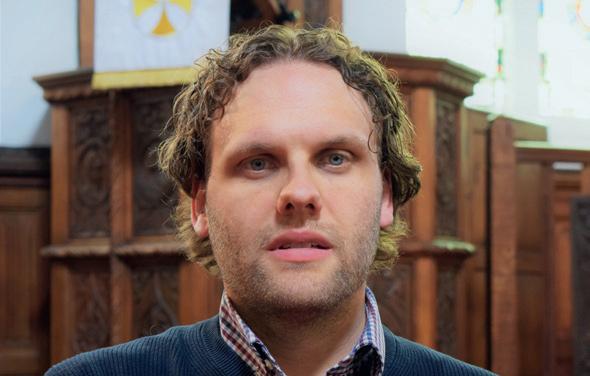
Much of the composer’s recent energies have been directed towards the foundation of The Cumnock Tryst, a music festival taking place in and around his home town which began in 2014. This has also led to MacMillan returning to south-west Scotland to live. The festival has brought many of the world’s leading performers to this unheralded part of the country to give performances of pieces old and new, including works by composers from the area supported by MacMillan. Naturally there are concerts of MacMillan’s work aplenty too, performed by, amongst others, Nicola Benedetti, The Sixteen and Westminster Cathedral choir, who have all recently given highly memorable performances.
As he reaches his 60 birthday, plaudits will no doubt appear from around the globe to celebrate MacMillan and his

continued success on the compositional stage, both at home and abroad. He is a visible presence not just as a composer but as a conductor, an educator, an artistic director and a powerful voice on the arts and faith in the wider media. Perhaps the greatest accolade that can be given to MacMillan is that he is someone who people actually listen to, not just as a successful composer but as an important voice in society, who holds the political classes to account and supports injustices in equal measure. In a world where contemporary classical music becomes more and more marginalised, it is important to recognise the achievements of those individuals who make a difference, and in this regard, as in so many others, James MacMillan is a composer of true importance. Dr Phillip Cooke is active as a
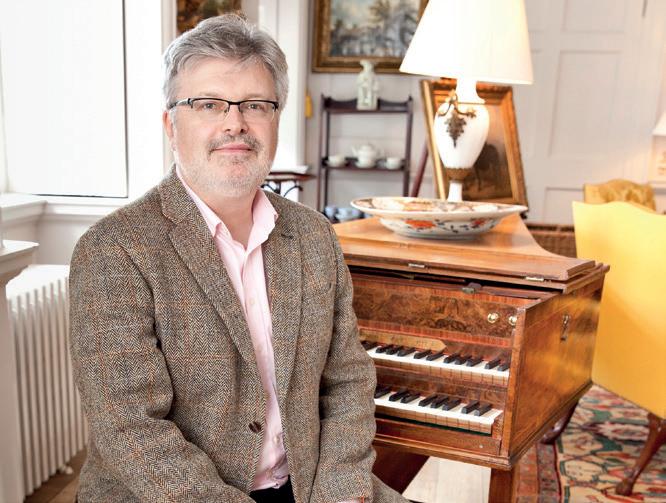
regular
Sixteen, the
Singers
many
St Andrew’s Cathedral in Aberdeen is the seat of the Bishop of Aberdeen and Orkney and is one of seven cathedrals in the Province of the Scottish Episcopal Church. The current building (the nave of the cathedral) was completed in 1817. The roots of the present congregation go back to the time when they were forced out of the two ancient churches, the Borough Church of St Nicholas and the Cathedral Church of St Machar, for their loyalty to the deposed King James VII (James II of England). A number of meeting houses were used before John Skinner built a house in the Long Acre in 1776, the upper room of which was used as a secret chapel. It was in Aberdeen on 14 November 1784 that Samuel Seabury of Connecticut was consecrated Bishop for America, the first bishop outside the British Isles of what we now call the Anglican Communion. St Andrew’s became the cathedral church of the diocese in 1914.
There has always been a strong musical tradition in the cathedral but as the Scottish Episcopal Church is only the third largest church after the Presbyterians and the Roman Catholics, funding has always been tight. There are modest salaries and honoraria for myself as Organist and Master of the Choristers, the Organ Scholar or Assistant Organist and choral scholars, and pocket money for the choristers. Funding for new music is agreed by the cathedral trustees on an ad hoc basis. Other than this, the choir is run by unpaid volunteers and helpers, keeping the entire annual budget (excluding tours) to under £10,000.
The pinnacle in recent times was when John Cullen was Director of Music in the 1960s. John was Head of Music at Aberdeen Grammar School and therefore had a ready supply
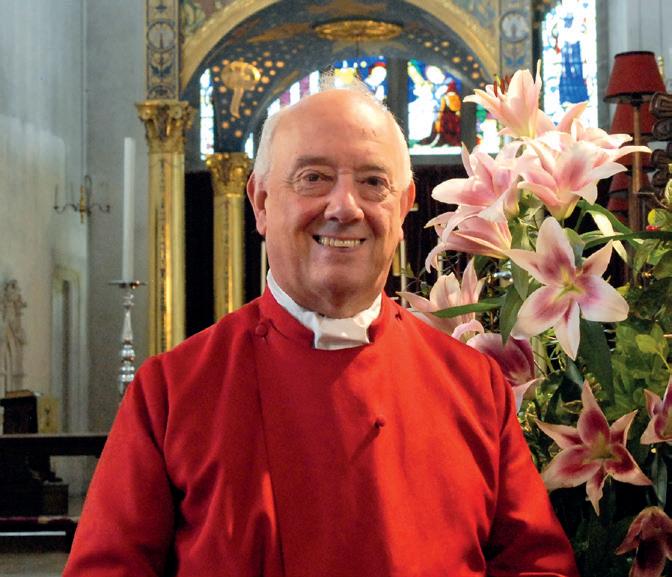 Morrisson
Morrisson
of boy choristers. He was given excellent support by the then Provost Patrick Shannon, and elements such as the use of Russian Orthodox liturgical music and the very popular Advent carol service were introduced for the first time. There are a number of excellent recordings of music for upper voices from that era.
After John Cullen’s departure a few organists came and went, and the choir waned somewhat. It was given a new lease of life by my predecessor Geoffrey Pearce, and it was Geoffrey who invited me to become his assistant. I had studied the organ with Dr Edgar Brice at Brentwood School in Essex where there was a fine 2-manual Willis organ. Music took a back seat while I studied for a chemistry degree at Imperial College. A plan to stay on for a doctorate took an unlikely turn when my supervisor announced he had accepted a new appointment in Aberdeen. A quick consultation of the atlas revealed that Aberdeen was on the north-east coast of Scotland, quite a long way north of Edinburgh. I followed him to do my doctorate, but a proposed three-year stay in the Granite City has lasted slightly longer!
When Geoffrey moved to Bridlington Priory in 1983, I was appointed to take over as Organist and Master of the Choristers. By careful befriending of those in charge of the lecture timetable I was able to combine lecturing in chemistry at Robert Gordon’s Institute of Technology (now Robert Gordon University) with my role at the cathedral. The choral pattern was two trebles practices during the week and a Sung Eucharist and a Choral Evensong on a Sunday. Midweek sung services were confined to major feast days. This pattern has remained largely constant over the years but has expanded as resources have allowed. Additional Wednesday Choral Evensongs and Friday Sung plainsong Complines have been a feature recently.
During the 1990s the choir thrived as a boys’ and men’s choir with over two dozen choristers and a full back row. This was a golden age for cathedral music in Scotland with fine boys’ and men’s choirs also in Dundee, Perth and Inverness, the flagship being St Mary’s Edinburgh where daily services are the pattern. The Scottish cathedral organists were given great support by Dr Dennis Townhill from St Mary’s who met us regularly and arranged joint services in Edinburgh.
After 2000, the number of boy choristers began to decline. The usual pattern of school recruitment visits continued to
engender enthusiasm, but without parental backing this effort proved increasingly fruitless. Help was around the corner when a link was established with a local private school with the support of the charismatic head of music, Adam Kirkcaldy. I took weekly evening rehearsals at the school and he bussed the choristers in on a Sunday. There were some excellent singers and this worked well until he moved on.
I had always fought to maintain the traditional boys and men set-up, but it was clear that there were a number of girls eager to become involved. It was agreed that they should be given an opportunity, and a girls’ choir was formed in 2003. Initially one or two services a month were designated for girls’ voices, but as they became more proficient this increased.
A decline in the number of boys meant that to maintain standards, the boys and girls were combined in 2007. Although this was a reluctant move on my part, it has proved a successful strategy. Numbers are buoyant, the balance of boys to girls has been largely maintained and the quality has seen a step change in achievement.
One interesting feature resulting from Aberdeen’s oil industry has been the increasing population of West Africans in the city. Many of these come from an Anglican background and they form a significant proportion of the cathedral congregation. It means that recruitment of choristers now comes almost exclusively from the congregation. Parental support is strong,

although their concept of timekeeping can be a little different from mine!
When I was appointed there was a thriving music department in Aberdeen University run by Reginald Barrett-Ayres. For ten years I was spoiled with assistant organists of high calibre, two of whom are now directors of music in English cathedrals in their own right. The university’s music department subsequently closed due to cutbacks in funding, which meant more unaccompanied music was required, and willing members of the back row conducted while I played.
Happily, the music department has reopened and has even seen a resurgence in recent years. I have had some excellent organ scholars/assistant organists who have moved on to greater things. The acclaimed composer Paul Mealor is a strong supporter and his music features widely in the repertoire. This includes his Seabury Mass written for the choir which is a strong favourite with the trebles and congregation and can be heard on YouTube.
A highlight of the choir year throughout my tenure has been the tours. These focus mainly on singing the week’s services at cathedrals across the UK. Over the years we have sung in more than 40 cathedrals in the British Isles as far afield as Truro, St Davids and Canterbury. We have just returned from a most enjoyable week at Christ Church Cathedral in Oxford. We are very grateful to the FCM Diamond Fund for Choristers for
financial assistance for some of our choristers to participate in this tour. The tours serve a number of functions. As we do not meet daily, they perform a vital role in team-building among the trebles and help to integrate the newer members. They also serve as an alumni event, allowing former members to either join the singing or attend the services. Tours abroad to the United States, Germany, Holland and Sweden have also taken place but cost has limited these opportunities.
The organ is modest in proportions but is one of the oldest in Scotland in regular use for worship. It was built by Muir, Wood & Co. of Edinburgh and opened on 30 August 1818. It has since been rebuilt and enlarged, most recently by Hill, Norman & Beard in 1983. We are in the middle of a series of recitals to commemorate the bicentenary.
Over 15 years ago my then assistant proposed a series of lunchtime recitals on Saturdays at noon. Although I was sceptical at first, after these had been running for a few weeks it became apparent that there was an appetite for such events. The series was extended and now runs every Saturday of the year (including Christmas Day if it falls on a Saturday!). The concerts’ main aim is to give performing opportunities to students, and they feature a variety of performers focusing mainly on organ and vocal music.
waiting list for next summer’s visits. We are again grateful to the FCM Diamond Fund for Choristers for financial support towards our chorister outreach.

Over time, the choir’s repertoire has changed. In the early years, settings by old favourites prevailed: Stanford, Noble, Sumsion, Harwood. In more recent years, my tastes have altered, and you are just as likely to hear Byrd, Gibbons, Weelkes and Tomkins with anthems by Victoria, Palestrina or Lobo. Also, many contemporary works are performed, as opportunities are given to students to showcase their compositions.
Aberdeen University recently moved its main weekly Chapel service from Sundays to Wednesdays. This has meant that university students are now available to sing at the cathedral on Sundays. Three years ago, the cathedral agreed to fund six choral scholarships and we have benefited enormously from the choral scholars’ input.
One feature that has been introduced in the last few years is the use of the RSCM Voice for Life training scheme for the trebles. Optional drop-in sessions are held prior to trebles practices where help is available as the choristers track their way through the Voice for Life workbooks. This is also good preparation for choristers wishing to take the RSCM bronze, silver and gold awards. We have recently received a grant from FCM’s Diamond Fund for Choristers which will enable us to provide additional vocal tuition for the choristers.
Another recent innovation has been to take Evensong into the diocese during the summer months. On every Sunday for five or six weeks we sing a Choral Evensong in one of the country churches. Congregations are large and enthusiastic, and the singers are rewarded richly with tea and cake. There is even a
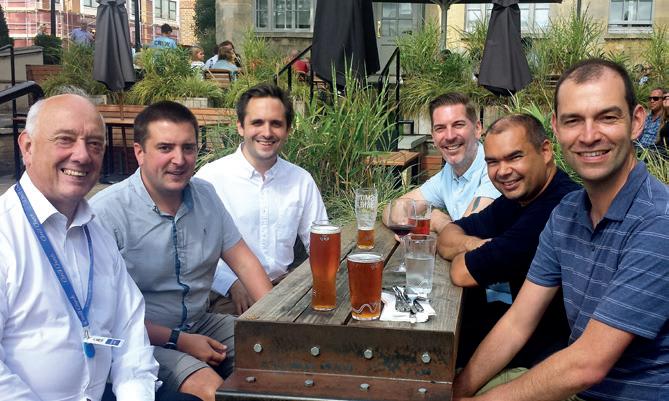
The lay clerks are all voluntary and there is a long list of deputies that I draw from to try to ensure that the back row is full. Countertenors are few and far between in the area and about ten years ago the decision was taken to invite ladies to sing alto. This has been a very positive move and they have integrated well, both musically and socially. As with most cathedral choirs, beer is an essential ingredient, both to restore the vocal cords and also socially – lay clerks’ ‘meetings’ are held after every Evensong in the Old Blackfriars across the Castlegate from the cathedral.
Our Head Chorister, Lewa Olaosebikan, has immensely enjoyed participating in the FCM Cathedral Choir of Britain events: the concert and subsequent recording in St Paul’s Cathedral, under the directorship of Andrew Carwood. Being so far from other cathedrals with treble choirs, it was an excellent opportunity to meet other choristers and compare notes.
In recognition of the importance of music in the cathedral, an outbuilding which was previously leased as a visual arts studio has been designated as a new Song School. The building requires significant work to upgrade the heating, electrics and the decoration and we are desperately trying to raise money towards it. I am particularly grateful to FCM and also choir alumni for their financial support in this venture.
As I complete 35 years in post, I look to the future and to my potential successor. We are grateful to FCM and anonymous benefactors for three years of bridge funding to enable the cathedral to increase the salary of the Director of Music post for my successor. Being Organist and Master of the Choristers has been a most fulfilling experience with endless opportunities and I have received excellent support from the clergy and congregation. I hope that the cathedral music will thrive for decades to come.


George Dyson (1883-1964) was a highly influential composer, educator and administrator whose work touched the lives of millions. Yet today, apart from his Canterbury Pilgrims and two sets of canticles for Evensong, his music is little known. He rose from humble beginnings to become the voice of public school music in Britain and, while a scholarship student at the RCM, he met and studied with some of the leading musicians of the day, including Charles Villiers Stanford and Hubert Parry. He went on to work in some of the country’s greatest schools, where he established his reputation as a composer, particularly of choral and orchestral works, of which Quo Vadis (a choral cycle of poems) was his most ambitious. A member of the BBC Brains Trust panel, Dyson was also the ‘voice of music’ on the radio for a number of years and helped to educate the nation through his regular broadcasts.
A fascinating, controversial man, George Dyson touched almost every sphere of musical life in Britain and helped to change the face of music performance and education in this country.
Dyson was born in Halifax in 1883 and was one of the most important British musicians of his day. Coming from a solidly working-class family (his father was a blacksmith carrying out his trade in one of the great Halifax engineering companies), George had his first musical experiences at the local Baptist church where his parents were regular members. His early talent was quickly recognised and he won a Foundation Scholarship to the Royal College of Music in London aged only 16 to study organ, first, and composition later (with Stanford). After this he returned to the college as the first alumnus to become its director (1938-1952).
Following a highly formative Mendelssohn Scholarship period in Italy and Germany, he came back to England to begin a long career as a school teacher. Sir Hubert Parry recommended him for his first appointment at the Royal Naval College, Osborne, which had been founded to double
the number of cadets entering the Navy in prevision – though this was not known at the time – of the world hostilities to come. Dyson’s appointment was something of an experiment as music was the last thing on most people’s minds in such an establishment. In reality, he had quite a lot of time to himself and he determined to use it profitably. He knew that if he wanted to progress to the greater public schools he would need a degree in music, preferably from Oxford or Cambridge, so he enrolled as a non-collegiate student at Oxford and took his BMus successfully in 1909, moving straight on to the DMus which was conferred in 1917. It was for this examination that his Choral Symphony was written. The work was unknown before the research I undertook for his biography, and it was a remarkable and exciting discovery in the Bodleian Library at Oxford (see review on p62).
Dyson called the symphony Psalm CVII Symphony (for solo, chorus and orchestra) and Overture. Psalm 107 is a dramatic telling of the expulsion of the Jews from Israel by the Babylonians. The Jews had been imprisoned for 70 years before being able to return home. The psalm tells the story of their wrongdoing, their prayers for forgiveness, God’s mercy, their treacherous journey home by sea, their rehabilitation in their homeland, and their praise to God for safe deliverance.
What is remarkable in this work is Dyson’s obvious command of a really large-scale structure. In all likelihood he chose Psalm 107 because of its variety of dramatic images and its suitability for breaking down into a four-movement format. The first movement opens with a lengthy orchestral overture which sets the scene and presents the thematic material for the whole first movement. The main choral movement follows without break. Here he presents some of the trademarks which make his later works so attractive: the sense of musical line; the Parry-like use of strongly contrapuntal interplay between voices; an inherent sense of drama, especially his ability to work a long paragraph up to an exciting climax, often using constantly increasing tempi to build tension;
and his ingenious use of imaginative harmony at key points. There are extended sections scored for double choir in two formations: SSAATTBB and SATB/SATB.
The last movement begins as a seascape, taking its cue from the words: ‘They that go down to the sea in ships, and occupy their business in great waters; these men see the works of the Lord, and his wonders in the deep.’
Dyson so often came into his own when setting sea-related texts, as can be seen in another work of his, St Paul’s Voyage to Melita. In this last movement he sets out with a figure instantly recognisable as a ‘turbulent sea’ motif and closely related to the third movement of Debussy’s La Mer – Dialogue du vent et de la mer. The movement builds to an incandescent climax close to the end with a wonderful breadth of expression, and ends emphatically with two linked but declamatory orchestral chords.
The second movement is in C minor, which is a big aural leap from the E major ending which precedes it. It is an uneasy Allegro agitato ma no troppo in 6/8 which takes its cue from the text (verses 4-8): ‘They went astray in the wilderness out of the way, and found no city to dwell in.’

The third movement moves to A minor and is marked Largo. It begins with a plangent theme for violins which play in unison for the first 16 bars, pianissimo or ppp. The music reflects the darkness of the image: ‘Such as sit in darkness and in the shadow of death’. The final section is a remarkable transformation into a broad, triumphant progression in the major before subsiding into a quiet ending.
By the 1930s Dyson had enjoyed considerable success with two very different choral works: In Honour of the City and The Canterbury Pilgrims. This last, hugely enjoyable work was performed all over the world and was conducted at least 35 times by Dyson himself. It was inevitable that after these successes the Three Choirs Festival would ask Dyson to compose a new work for them. He responded with St Paul’s Voyage to Melita for the 1933 Festival at Hereford and conducted the performance himself. Dyson chose the dramatic story from chapter 27 of the Acts of the Apostles which tells of St Paul’s remarkable journey to Rome up to the point of his shipwreck on the island of Malta (Melita). Paul had been warned about possible trouble if he visited Jerusalem, but he insisted on going, even if it led to his death. On his arrival, word had spread that he preached to both Gentiles and Jews, which led to a riot which caused his arrest. Paul invoked his right to be judged by Caesar himself in Rome, and so his long journey began. The irony was that King Agrippa had had a mind to release him had Paul not appealed to Caesar in this way. But the die was cast and so began the journey which ended in shipwreck but the miraculous saving of all hands.
These two major choral works show Dyson’s originality and mastery of the form. In following this path he gave us a whole series of dramatic choral and orchestral works including Nebuchadnezzar, The Blacksmiths, Agincourt, Sweet Thames run softly, Hierusalem, and biggest of all, Quo Vadis?Royal College of Music, Photo: Jeffery Johnson
Here, then, was another dramatic text for Dyson to set. The critics were bemused by Dyson’s choice and The Times noted that, ‘His music is neither oratorio in the accepted English sense of the term nor anthem, but narrative without comment.’ Audiences at these festivals were used to oratorios with a moral to be preached rather than simple drama for its own sake. They found the new approach difficult to understand or accept. But Dyson, who was not a religious man, loved vivid texts from which he could conjure Technicolor musical images. Also, as found in the early Choral Symphony, he could create large-scale structures which unfolded seamlessly through a rare ability to navigate long paragraphs with great strength of purpose. Additionally, his imagination as an orchestrator was second to none (his Oxford doctoral orchestration exercise was returned to him by the professor of music because it was so highly regarded) and is put to the greatest test in this work.

St Paul’s Voyage is scored for normal symphony orchestra with wind doublings, tenor solo and chorus. Ominous brass chords open the work and a semi-chorus delivers a choral recitative which begins the story: ‘And when it was determined that we should sail into Italy, they delivered Paul and certain other prisoners unto one named Julius, a centurion of Augustus’s band.’
Mournful seagull calls set a bleak scene and seem to be a portent of disaster to come. But the unexpected warmth of the arrival at Fair Havens, a harbour on the south coast of Crete, is reflected in Dyson’s richly coloured harmony. The weather was now becoming increasingly uncertain as it was late in the season, but the decision was taken to sail on and soon the dreaded name of the north-easterly hurricane-force wind, Euroclydon, was on everyone’s lips. The storm music begins – violent waves, eddies, troughs and peaks. The ship begins to break up, and ropes are passed underneath to bind it together. Dyson very effectively uses augmented chords to describe the crew’s sense of panic. Paul assures them, in a passage of dramatic recitative, that all will be well and that no one will be lost. Land nears, and in an almost imperceptible change of rhythm from 3/4 into 9/8, Paul urges them to eat so that they have energy for the final scene. The ship is run aground but the guards want to kill the prisoners in case they escape. Dyson’s use of jagged, stuttering chords mirrors the terror of the moment. Finally, the centurion orders everyone to save themselves and the choir rises to an exultant, climactic moment in the phrase, ‘And so it came to pass that they escaped all’, and the music subsides to end on a unison C for strings and bells.
These two major choral works show Dyson’s originality and mastery of the form. In following this path he gave us a whole series of dramatic choral and orchestral works including Nebuchadnezzar, The Blacksmiths, Agincourt, Sweet Thames run softly, Hierusalem, and biggest of all, Quo Vadis? All deserve to be reinvestigated and to become once more an important part of our choral landscape. More than this, the Choral Symphony should be widely taken up and performed as an alternative to the other great maritime work of the period, Vaughan Williams’s A Sea Symphony
The CD of these two pieces, sung the Bach Choir and soloists, with the Bournemouth Symphony Orchestra and David Hill, is available on the Naxos label.
Paul Spicer was a composition student of Herbert Howells, whose biography he wrote in 1998. He is well known as a choral conductor especially of British music of the 20th century onwards, a writer, composer, teacher, and producer. He is a regular guest conductor with the BBC Singers and he taught at the Royal College of Music until 2008. He now teaches choral conducting at the Royal Birmingham Conservatoire, and at Oxford and Durham universities. He runs choral workshops all over the world and is in considerable demand as a composer and recording producer. His biographies of Howells and Dyson were received to great acclaim, and he is now working on a biography of Sir Arthur Bliss.

From the very beginning, the church had a fine musical tradition. It had an ambitious parish choir directed by excellent professional organists, and an in-house orchestra (comprised mostly of nuns!). There were up to 12 Masses per weekend, of which at least three were choral. Early music lists show that as well as Gregorian chant, music by composers such as Haydn, Mozart, Gounod, and Spohr were standard fare. Music clearly mattered to the church, and over time some of the many boys serving at the Masses were developed into a choir. By the 1940s the boys were singing alone, and had a developing local reputation for excellence.
St Paul’s Church in Harvard Square was finished in 1923. Designed by T P Graham in opulent Siena and Travertine marble, it is an architectural homage to San Zeno Maggiore Verona, T S Eliot’s favourite church. Although now standing in the middle of modern-day Harvard, the church was built with funds raised in door-to-door collections from members of the immigrant Irish community who originally lived around this area. By good fortune it is now at the confluence of the ‘Red Line’ (part of Boston’s underground rail network), the ‘No. 1 Bus’, and the River Charles, and has always been a meeting point for tourists, students and parishioners alike. Today it is perhaps best known as the home of St Paul’s Choir School, the only Catholic boys’ choir school in America.
That St Paul’s came to have a fully-functioning choir school singing at daily services in the church is surprising. The year of the choir school’s foundation, 1963, came right at the start of the Second Vatican Council, the outworkings of which in the USA were to have a significant (and at least temporarily chaotic) effect on Catholic church music. The roll-out of the Council in the USA often saw the wholesale jettisoning of Gregorian chant and polyphony at parish level, and a struggle with setting texts to English with not enough time, experience or training to do so effectively. Rancorous arguments about the nature of ‘congregational participation’ and about what constitutes ‘musical excellence’ were probably an echo of 1540s England, to some extent! Several years earlier in
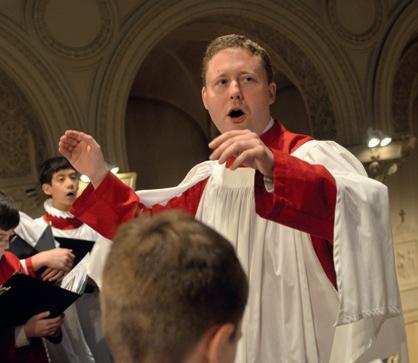


Harvard Square, however, the decision had been made to launch a choir school, in answer to the 1947 encyclical ‘Mediator Dei’. This message from the Vatican had suggested that all major city-centre churches should have their own singing schools, and though few places took this suggestion seriously, St Paul’s was one of them. By this time, Theodore Marier had become Director of Music, and he undertook the extremely complex work of planning the transformation of the existing parish school into a choir school. It’s worth mentioning that Marier was very much part of ‘the resistance’ against losing the church’s musical heritage. He made sure that the congregation continued to sing Gregorian chants, and he was able to use his new choir school intake to sing polyphonic church music. It is said that at times he was the only person keeping Catholic music alive in America.
Having toured to the US with various cathedral choirs, and as an organ soloist, I was very excited to see what I could do with so much choral potential. It was not at all easy to leave Canterbury, where I was Assistant, particularly as I loved the daily routine of Evensong in that magnificent building, and had so much fun and great music-making working with Dr David Flood, but the St Paul’s job seemed so unique an opportunity that I nevertheless went ahead.
In the early days the school was tuition-free since the academic staff were all nuns, and the costs of employing a Director of Music, Assistant Director, and purchasing music were all covered by the parish. Things got off to an excellent start, with local schools sending promising boys into the choir school to audition. After a relatively short period of development the boys were singing to a high standard in the church, and able to provide the boys’ parts in orchestral repertoire with the Boston Symphony Orchestra. The men of the choir were paid, and included both Harvard students and singers from local music colleges (of which there are at least three nationally renowned examples). Theodore Marier continued to direct the choir until 1986, over 50 years after he had first arrived as Assistant Organist in 1934. At the same time, he built a national reputation as a devotee of Gregorian chant, and was president of the Church Music Association of America. He was good friends with Jean Langlais and, through him, brought a number of Parisian organists to Boston over the years. Though recordings were made of the choir, revealing some very fine treble soloists, (especially Dennis Crowley, who went on to sing boys’ roles in several Britten opera US premieres,) the reputation of the choir remained relatively local. The long-time Assistant Director of Music, John Dunn, took over as Director in 1986.
When I saw the job of Director of Music advertised in 2010, I was greatly attracted by the prospect of directing a boys’ choir with a choir school, in a beautiful acoustic, in the US.
By the time I arrived, a number of factors had developed which created major challenges for the school. Recruitment had changed greatly towards the end of the 20th century, so that schools which once had been proud to get a boy into the choir were now closely guarding pupils for fear of losing revenue. My challenge was to find ways to reach new demographics, while also maintaining ties with historically supportive communities. Then discussions about the size of the choir were long overdue. In a situation where every boy is a chorister, it’s very tempting for those managing the accounts to make the school too big for the choir, unless non-singing pupils are admitted. So work was needed to help people understand why the size of the choir really needs to take into account the size of the building, and of course the repertoire being sung, if there is to be an excellent result. Another challenge was that, in the north-east of the USA, boys’ voices are breaking well over a year earlier than they were 20 years ago, so whilst in 1963 it was very unusual for an 8th grader (boy in Year 9) to have a broken voice, by 2010 I was seeing most boys in 7th grade experience ‘voice change’ during the year, and even some in 6th grade. In response to these factors, a number of developments were essential. We began to recruit in different ways: we used each of our concerts as a recruitment event, encouraged our parents to run ‘at homes’, partnered with local children’s choirs and engaged the media as much as possible, following recordings. We brought in ‘rolling admissions’ with a very flexible and streamlined approach to voice trials, and academic testing to suit the candidates and their families. We brought in two new grades at the bottom of the school. In addition, to help balance the competing claims of the economics of the school with the need to regulate the size of the choir, instead of taking ‘non-singers’ the choir school has formed a track for trebles who want a lesser singing commitment but the same excellent academic experience of the choir school. This works very well for the boys whose voices are breaking too, as the ‘Chorus’ (as it’s known) serves the additional purpose of helping the older boys start to find baritone/tenor ranges in preparation for high school choirs. The Chorus sings in the church twice monthly, while rehearsing a couple of times each week. At the same time, I introduced probationer training, run by the Assistant Director of Music. The probationers gain experience singing with the school Chorus initially before they are worked into the choir. Of course, the boys come from all over the spectrum of singing/musical experience, so this training period is essential to help teach the basics of sight-reading, posture and vocal technique. All the boys are prepared for ABRSM Theory and Piano exams. The Theory course is part of a general ‘musicianship’ course that includes some conducting, sight-singing and rhythmic components, especially early on. The ABRSM, with its long-established use in choir schools, is the perfect counterpart to choir rehearsals.
The school has always included the usual range of academic subjects, and for many parents this is probably more
We received an impressive amount of media interest in TV specials, news reports and radio (including Classic FM, which made the CD one of their recommended Christmas albums), which not only raised the profile of the choir in the US but helped greatly with our recruitment.St Paul’s choir
important than the music. Admission to excellent high schools is much prized in the vicinity. We have boys from every social background, including those whose parents work at Harvard, so there is a certain sense of academic aspiration which is valued by all. My work in the rehearsal room is made much easier because of the strong ethos and the firm sense of discipline in the school, although there are few discipline issues: the boys tend to be fascinated, and pretty engaged.
The choristers now sing six services a week: daily Mass on Tuesday to Friday, Vespers on Thursdays, and Mass on Sunday. The men of the choir are only present at weekends and for a mid-week rehearsal, so most of the repertoire is for treble voices. This has been an eye-opener to me, as it results in a very secure treble line that is extremely happy on its own. It’s certainly true that we miss the sense of cohesion with the men that comes from daily singing together, but having assembled an excellent group of men from local music colleges such as New England Conservatory, Boston Conservatory and Longy, it is no trouble to put things together for weekends and concerts. Repertoire selection has been another voyage of discovery, since we are mostly singing Mass. Vespers on Thursdays has been easy enough to find magnificats for, with classics such as Dyson in C Minor, Stanford in D, and the Sumsions, but Masses have been more challenging. Once the Britten, Fauré and Langlais had been done, I wasn’t sure where to go next, initially. But it turns out there are some amazing Rheinberger
Masses for 3-part treble choir, as well as effective Mass settings by Flor Peeters, Sauget, Chaminade, Andrew Carter and many more. At weekends anything is do-able, and this year we’ve been able to sing Byrd’s Laudibus in Sanctis and Bach’s Komm, Jesu, Komm for the first time. And having been able to extend our outreach with media appearances and recordings, we’ve had more families travelling across the USA to join the school. This year we had three fluent German-speaking boys, two from Germany, and so we scheduled a concert of German choral music at our spring concert.
Over my time at St Paul’s there have been many memorable musical moments. Making recordings for Decca and Sony Classical by AimHigher recordings was certainly a real high for all involved, and we knew they would be really well promoted by the brilliant Monica Fitzgibbons. We received an impressive amount of media interest in TV specials, news reports and radio (including Classic FM, which made the CD one of their recommended Christmas albums), which not only raised the profile of the choir in the US but helped greatly with our recruitment. Other recent highlights have included rekindling our relationship with the Boston Symphony Orchestra. This last year the boys were able to sing the ‘boys’ choir’ parts in Berlioz’s The Damnation of Faust, and in Bernstein’s Kaddish Symphony. These were both amazing experiences; to be on stage with one of the world’s great orchestras, sublime soloists (Susan Graham’s ‘Marguerite’ was something to remember) and a well-known Maestro at age 10 is pretty special. And our

boys sang solos with the Boston Pops Orchestra at Christmas time, as well as performing concerts all around the area. Our now annual tradition of singing Britten’s Ceremony of Carols continues to grow each year, and this last year we paired it with John Rutter’s Dancing Day
When the boys leave St Paul’s they go on to a range of high schools, including ‘historic’ American schools such as Roxbury Latin and Andover. Wherever they go, they are greatly in demand for their singing and their academic preparedness. We have so far produced a number of professional organists, and in my time we’ve encouraged some highly talented organ scholars, the most recent of whom (Blake Chen) was head chorister at St John’s Cambridge until last year, so he’s still
very young. Our alumni miss the choir so much that we have created a range of options for them – an alumni chorus that sings weekly, and choral scholarships with the men and boys. Having been raised as a chorister myself in Roy Massey’s fabulous choir at Hereford, I’m so glad I have helped bring something of this tradition to the USA. Hearing the way in which the choir has changed so many lives makes my job perpetually rewarding and fulfilling, and I’m especially grateful to all the singers who have passed through the choir at St Paul’s during my time.
The choir’s two CDs, ‘Christmas in Harvard Square’ and ‘Ave Maria’, can be obtained from Amazon.
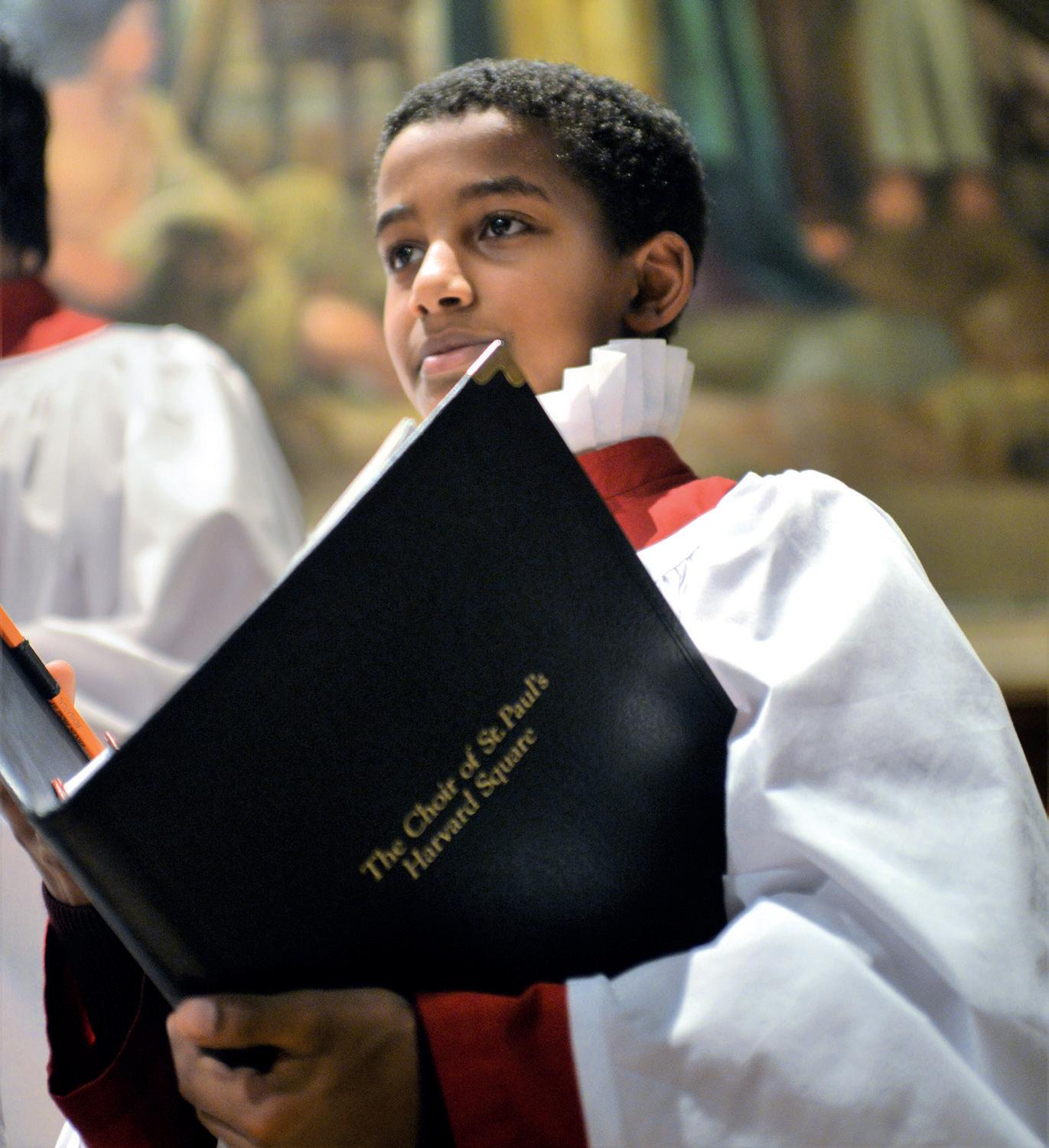
became friends, as George later recalled: ‘I was invited to visit the church of St Anne, Chingford Hatch on behalf of the Royal School of Church Music …. The music sung on that occasion was of a standard seldom attained in cathedrals let alone parish churches, and it became immediately clear that it was being accompanied by an instinctive director, one who, whilst having the utmost regard to technique, was at the same time able to bring the music to life by the subtlety of his interpretations.’
Ifirst met Barry Rose in about 1965, as a small child. I was taken out of lessons at my primary school one day by my mother, much to my excitement and the jealousy of the other children, and delivered to a strange young man in a strange building and asked to sing to him. I now know that the man was Barry Rose, and that I was auditioning for a place in the treble line of his recently established Guildford Cathedral choir. Being rather young at the time, I was invited back for another audition and also a school entrance exam the following year; I was later admitted into the choir and the de facto choir school, Lanesborough.
Just ten years before these events, my parents were not yet married, Guildford Cathedral was still being built, with no date set for its consecration, and Barry Rose was working in insurance in London. Up to then his church music experience consisted of accompanying the singers at his local Sunday school in Chingford and playing the Compton electronic organ in the newly built church of St Anne’s, Chingford Hatch. It was at Chingford that he and George Guest, Director of Music at St John’s Cambridge,
In 1956 Barry joined Martindale Sidwell’s choir at Hampstead Parish Church, an experience he later would say was the most influential of his early musical life (at this time the Hampstead choir was widely regarded as the finest church choir in the country). After nearly two years at Hampstead he was appointed Organist and Choirmaster of St Andrew’s Kingsbury, a church with an already strong choral tradition, whilst also setting up his own chamber choir, The Jacobean Singers, around the same time. He was also the accompanist for Bruno Turner’s Pro Musica Sacra chamber choir. Barry and Bruno shared a flat, and years later Bruno recalled, ‘I always felt that of the two of us Barry was the gifted instinctive musician. He knew what he liked and how he wanted it.’
Both Barry and Bruno were influenced by Michael Howard’s pioneering Renaissance Singers, and Barry was also much taken by Boris Ord’s choir at King’s College Cambridge, Stanley Vann’s choir at Peterborough Cathedral, and most of all George Guest’s St John’s College Cambridge choir. Barry used to go to Ely Cathedral to watch Michael Howard training the boys. In Michael’s obituary in the Guardian in 2002, it was reported that Howard ‘concentrated on the

Over the next 14 years, with a lot of hard work and a slowly growing repertoire, Barry led the Guildford choir to the forefront of choral music singing of the time, and the choir achieved widespread recognition through its several bestselling recordings for EMI.
production of pure, open, Italianate vowels consistent from the bottom to the top notes … Diction was perhaps Howard’s greatest preoccupation, and his legacy of recordings demonstrates the extent to which he demanded that his singers project their consonants. He was a hard taskmaster and, after a few months, the “Ely sound” began to develop, making itself heard with increasing regularity on the BBC Third Programme.’ This, to a Barry chorister, sounds a familiar narrative.
On the recommendation of Felix Aprahamian, then music critic of the Sunday Times, Barry auditioned for a place at the Royal Academy of Music to study organ with C H Trevor. Despite not possessing any of the required entry qualifications, he was offered a place by the college principal, Sir Thomas Armstrong, in March 1958. Whilst there, he spotted an advertisement for an organist for the new cathedral at Guildford, and was one of the 140 or so who applied. He hitched a lift to the interview on the back of a friend’s
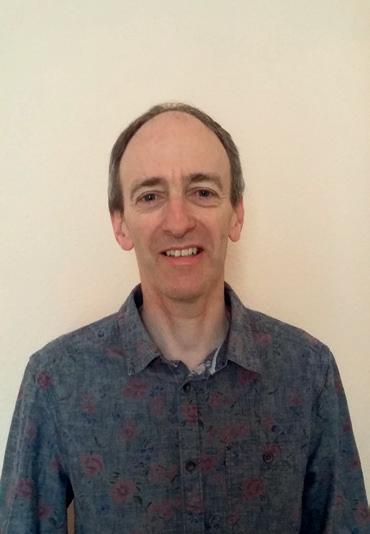
motorbike and took with him a tape recorder so he could play the panel some recordings of his St Andrew’s choir.
Against all the odds he was appointed, and aged 25 in September 1960 he became the youngest cathedral organist in the country. He moved down to Guildford and started putting a new choir together. A supply of boy singers was the priority, and he looked at various local prep schools, eventually settling on Lanesborough. Barry auditioned the boys there and chose 16. He was, however, keen that membership of the choir should be open to any local boy with talent, so he also set up what he termed the Town Boys Choir. This was unfortunately short-lived. The plan was that these boys would sing Evensong on Friday and Sunday evenings, but this idealistic ambition did not survive to the end of the summer term. However, once assembled, all the recruited boys started rehearsing for the Consecration service, which was to be attended by the Queen, the Duke of Edinburgh and other members of the Royal Family – the date had been set for 17 May 1961. The day after,

however, was probably the more significant day in the choir’s history as it was then that the first daily Evensong took place. The canticles were sung to chants and the anthem was Charles Wood’s God omnipotent reigneth.
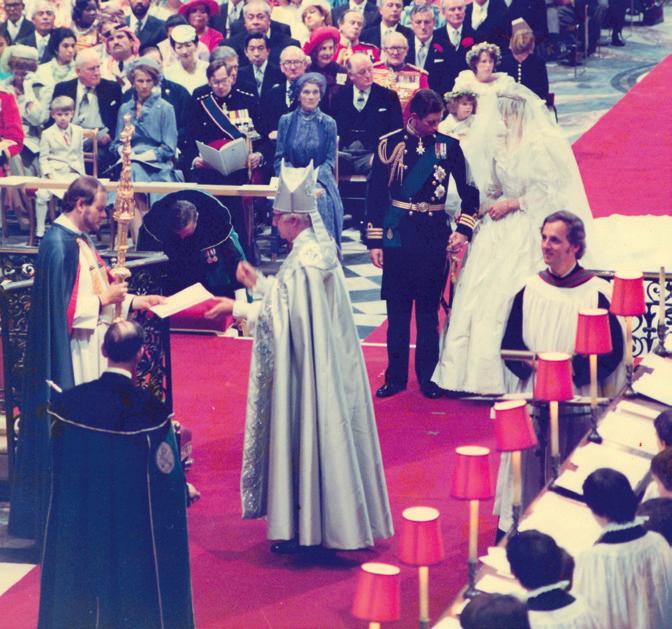
After a bit of to-ing and fro-ing, Barry had been offered No 1 Cathedral Cottage to live in. This was one of a pair of small houses designed by the cathedral architect Sir Edward Maufe, at the foot of Stag Hill. It also became home to some of the early men of the choir. At various times up to Barry’s marriage to Elizabeth (Buffie) Ware in 1965, Colin Wykes, Roger Lowman, Robert Hammersley, Michael Barry and Clifford Mould all lived there. Much of the choir’s life and humour originated in this bachelor pad, described years later by a visiting Alan Ridout: ‘I have never seen anything quite like it before or since and it reminded me somewhat of those drawings of the way Beethoven lived. The mess was from floor to ceiling, as if a bomb had just gone off.’ A lot of the choir’s early humour emerged from this set-up and its inhabitants, from any food found in the kitchen being fair game for anyone to consume, to any letters likewise being read by anyone. Clifford Mould later recalled, ‘I had a girlfriend who used to come and stay for weekends and she really became most upset when she discovered that her letters to me had obviously been read by everybody else, and she caused a tremendous sensation by writing a letter saying that since I had been in the cottage, it was as if a black cloud had descended over our life. This became known as the “black cloud” letter. When anyone else’s girlfriend complained, everyone would chorus “black cloud, black cloud!”’
Over the next 14 years, with a lot of hard work and a slowly growing repertoire, Barry led the Guildford choir to the forefront of choral music singing of the time, and the choir achieved widespread recognition through its several bestselling recordings for EMI. These now iconic (if you are an Old Guildfordian) recordings led to the choir being awarded a platinum, a gold and two silver discs. In addition, the choir acted as a backing group for a Peter Skellern track and on a couple of other ‘pop’ recordings, the link to these being through one of Barry’s former St Andrew’s choristers, Andrew Jackman, who became a freelance arranger and conductor. Barry and his brother-in-law, Nicolas Ware, a professional sound engineer, set up a recording company, Guild Records, recording and releasing several discs of the choir. Over the years they recorded the choir on numerous other occasions, these recordings now being available on the YouTube channel Archives of Sound.
Some of the choir’s sound attributes remained constant throughout the whole of Barry’s time, in particular the diction, the exuberance of the top notes, the moments of tender beauty and the overwhelming musicality. But other characteristics evolved.
During the first few years the confidence and skill of the initial batch of ten- and eleven-year-olds chosen to start the choir from Lanesborough had grown steadily, although ‘the blend was achieved by some breathy sounds – anyone with vocal clarity would stand out,’ as Barry later acknowledged. However, there was then a mass exodus in 1963 when nine boys left, including six of the originals.

By the time the next generation had bedded in, a more musical and less breathy sound was evident, from 1965

onwards. The choir was at its most ensemble-like from 1967, but soon after, around 1970, a little of that character had been sacrificed to an increase in vocal power. Three years further on, the choir sounded almost ‘continental’, with a thinner, more ‘romantic’ sound with more vibrato than would have been permitted earlier. The final generation of boys, from 1974, had a mellow, fluid sound with much less vibrato and no ‘edge’, a much more positive sound. By the time Barry left in 1974 the choir had become much more characterful and emotional than it had been for some years. The changes were partly to do with Barry’s changing tastes but were also prompted by the boys themselves, because the trick at a place like Guildford was to work with what you had, and Barry was not afraid to do this.
In May 1973 Barry was approached about a possible move to St Paul’s Cathedral. Two years earlier he had been appointed to the BBC as Music Adviser to the Head of Religious Broadcasting, in succession to George Thalben-Ball. This involved directing the BBC Singers and playing the organ in the live broadcast of the BBC Radio 4 Daily Service each weekday from All Soul’s Langham Place, as well as editing and often producing the weekly Choral Evensong broadcasts. After about a year of doing this alongside his Guildford responsibilities, it became clear that the arrangement would not be sustainable in the long run, and the possibility of a move to London looked attractive.

The post at St Paul’s was officially that of sub-organist and had become available through the retirement of Dr Harry Gabb. Barry auditioned in November 1973. It was agreed that he would stay at Guildford until July 1974, and in September of that year Philip Moore, then Allan Wicks’s assistant at Canterbury Cathedral, was given the unenviable job of taking over from Barry.
Barry started at St Paul’s in September 1974, and was to stay until an acrimonious and much publicised departure in July 1984. To start with, the signs were encouraging. He had been
brought in so that Christopher Dearnley, who was planning the 1977 rebuild of the cathedral organ, could have a full-time assistant. The unwritten agenda was that Barry would, in time, take over the training of the boys, and three years later he was formally appointed to the specially created post of Master of the Choir in time for the Queen’s Silver Jubilee service on 3 June 1977. Over the next seven years he led the choir through several State occasions and also a highly successful tour of the USA and Canada in 1980. However, much to the chapter’s displeasure and also that of Christopher Dearnley, he introduced the choristers to the world of pop music, just as he had at Guildford. Following a highly acclaimed appearance on the BBC Television Arena programme, the choristers made a Gold Disc recording of My Way, a Christmas single with another of Barry’s former St Andrew’s choristers (Chris Squire of the band Yes), together with several backing tracks and solos for other songs of a similar style, including Paul McCartney’s Rupert and the Frog Song. Boy soloists from the choir were also featured on television and radio; these included Paul Phoenix (Geoffrey Burgon’s Nunc Dimittis for Tinker, Tailor, Soldier, Spy) and Peter Auty (the original recording of We’re walking in the air for Howard Blake’s The Snowman).
Another point of conflict was the proposal by the cathedral to re-draw the employment contracts in order to assign various musical responsibilities to the Dean and Chapter. This was totally unacceptable to Barry (and also to the vicars choral) and, with no solution in sight, Barry was asked to resign as from July 1984. The anthems during his last week consisted of several settings of There is no Rose
From St Paul’s, Barry moved to Canterbury and took up the post of Master of the Choirs at the King’s School. This was a role specially created for him by the headmaster Canon Peter Pilkington. He was to stay there for three years. In April 1988 he was approached by the Dean of St Albans, Peter Moore, seeking advice on recruiting a successor to Colin Walsh who had just been appointed to Lincoln Cathedral. As a result,
Barry came away from St Albans having been persuaded to consider an offer to become the Abbey’s Master of Music. It was a difficult decision to leave Canterbury, but in the end Barry accepted and he, Elizabeth, and their three children moved to St Albans in August 1988.
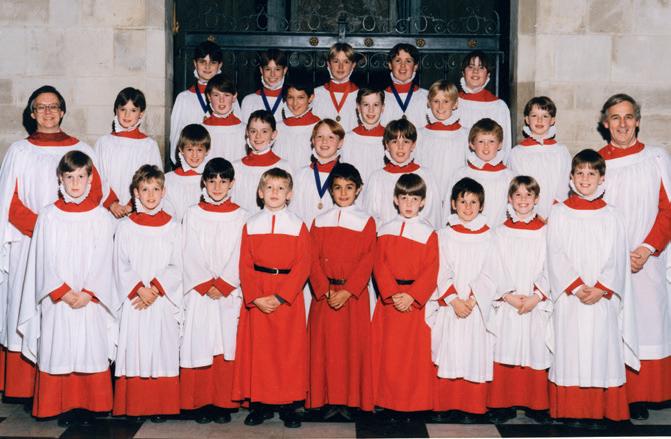
Since then, apart from a brief spell at Chelmsford Cathedral between Graham Elliott’s departure and Peter Nardone’s arrival, he has officially been retired. However, he is still much in demand as a freelance musician and has links with several choirs in the United States.
To be reminded of and to listen to Barry’s legacy, and that of Michael Howard, Boris Ord and the others referred to in this article, one only has to search on YouTube. Within this vast archive, for Barry’s time at Guildford, the Archives of Sound channel as mentioned above is the definitive source, and for a more general look at cathedral and Anglican church music the Archive of Recorded Church Music channel is wideranging and fascinating.
Barry was to stay at St Albans for nine very happy and productive years before retiring in 1997. His role was to maintain and develop a choir that had already made its name through the work of Peter Hurford and Stephen Darlington. Throughout his time at the Abbey Barry worked alongside his colleague Andrew Parnell, and led the choir in several radio and television broadcasts, CD recordings and no fewer than five visits to the USA.
Barry was awarded the OBE in 1998 for ‘services to cathedral music’.

So what was new has now become a tradition. Peter Wright, who arrived at Guildford as Assistant Organist in 1977, 20 years later wrote: ‘No tradition can survive in aspic, and it is right that each successive director should bring a new facet to the music of Guildford Cathedral. The legacy of Barry Rose lives on but it is constantly evolving. The excitement of newness has now been replaced by a sense of tradition and continuity, and perhaps the greatest compliment to the pioneering days is that Guildford has now taken its place in the mainstream of cathedral music.’
As well as having a full-time job with the NHS, Simon Carpenter is also a part-time student of the University of Gloucestershire researching for an MA on Herbert Brewer of Gloucester Cathedral and his pupils.
as well as including stimulating features, a wealth of educational material and reviews of organrelated music, CDs, DVDs, books and much, much more.





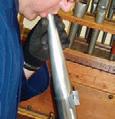

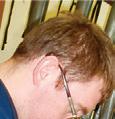




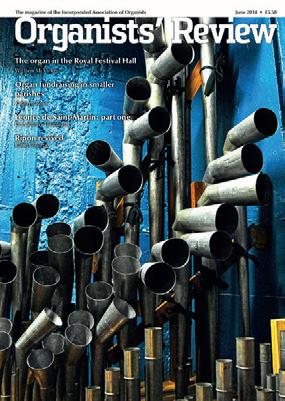
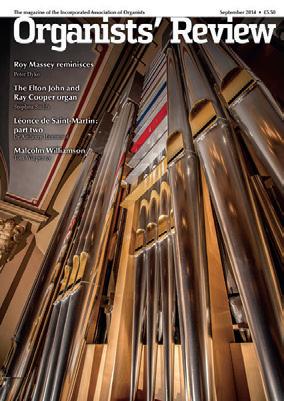
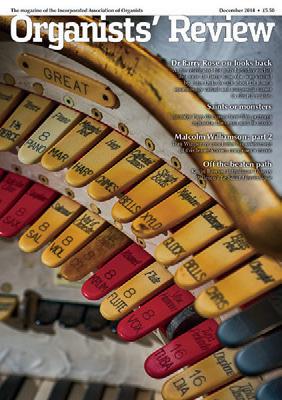



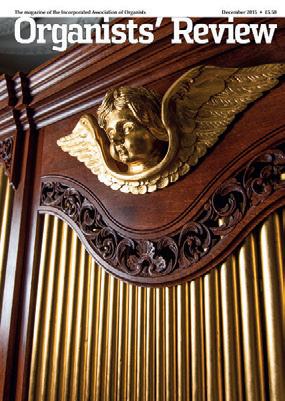

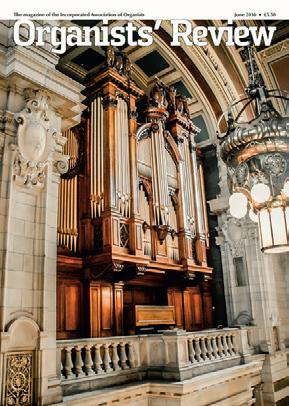

TO



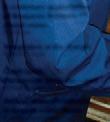
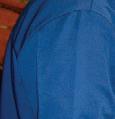
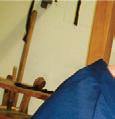













St Patrick’s Cathedral, or the National Cathedral and Collegiate Church of St Patrick, Dublin, to give it its full title, has been part of Dublin life since 1191. One of three cathedrals in the city, St Patrick’s serves as the national cathedral for the Church of Ireland. Our neighbouring Christ Church Cathedral (also Protestant – much to the bewilderment of many of our visitors) serves as the diocesan cathedral for Dublin & Glendalough, and St Mary’s pro cathedral on the north side of the city serves the Roman Catholic archdiocese of Dublin.
Following years of neglect, St Patrick’s was lovingly restored by Sir Benjamin Lee Guinness (of brewing fame) in the late 19th century and today, though primarily a house of prayer, it is also one of Dublin’s top tourist attractions with over 600,000 visitors a year. Those visiting are charged an entrance fee and it is from this revenue that the cathedral continues to be kept in the best possible health, thus ensuring its survival for both worshippers and visitors alike for centuries to come. It also means that thanks to the continuing support of the cathedral board, the music department is well resourced, and quite a department it is too: 21 boy choristers, 18 girl choristers (also aged 8-13), 14 girl scholars (aged 14-18), 4 Martin Scholars (aged 16-18), 4 choral scholars (male and female – all in tertiary education), an organ scholar, an organist & assistant master of the music, eight lay vicars, two Sunday men, five visiting instrumental staff, one singing coach, two music theory tutors, four chorister supervisors, a Keeper and Assistant Keeper of the Music, a music archivist, a cook, and of course the Master of the Music.
The offices of Mattins & Evensong are sung daily (Monday to Friday in termtime), making us somewhat unique in these
islands, along with either Eucharist or Mattins and Evensong on Sundays. Thanks to the ever-increasing numbers of visitors as well as a resurgence of popularity in the Anglican choral tradition, especially in cathedrals, numbers in the congregation are well above average and continue to grow. Of course, there will still be the odd wet and windy morning when the choristers sing the Office to an empty cathedral, but we are now also making the most of modern technology and broadcasting all our choral services via the cathedral website, and we have an ever-growing online congregation.
The biggest change to the choir in recent times is the introduction of girls to the front row of the choir stalls. Originally founded by Barbara Dagg and affectionately known as ‘the Daggetts’, the girls’ choir in its current form was re-established by Organist & Assistant Master of Music David Leigh in 2000. Over the last few years, the girls’ choir, or as
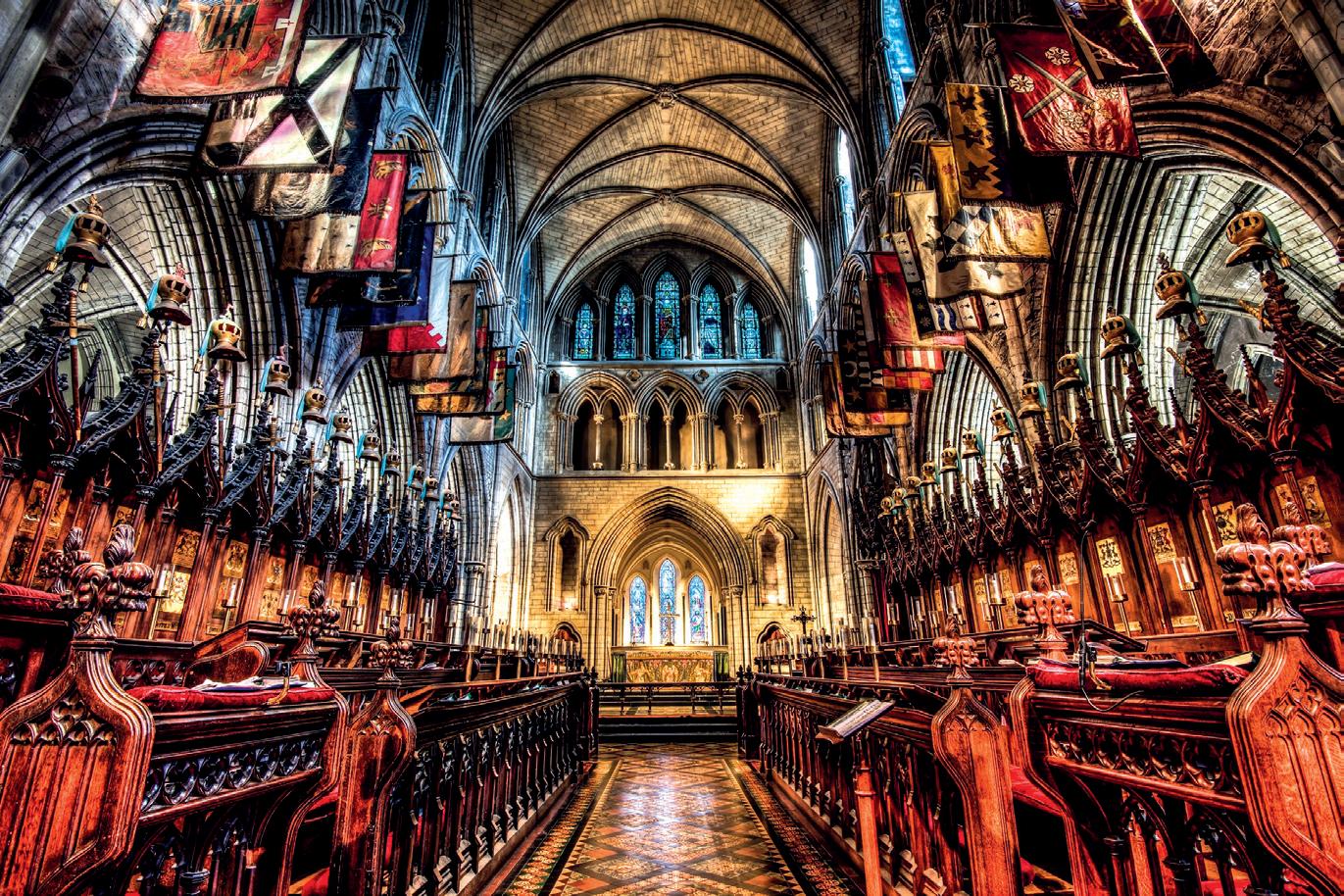

they are formally known, Schola Patricii, has become an integral part of the life of the cathedral. In addition to singing twice weekly for Evensong with the lay vicars, Schola, the members of which are all students at the cathedral grammar school, also sing a number of major services throughout the year including our Advent Procession, Evensong on Easter Day, the annual Act of Remembrance, and have made their own ‘new’ traditions of the now-annual liturgical performances of Britten’s Ceremony of Carols at Candlemass, and Bach’s St John Passion with orchestra on Palm Sunday.
In September 2016, another girls’ choir was established to cater for younger singers – ie those of a similar age to the boy choristers. Much like the boy choristers, these girls are all educated at the choir school, which – established in 1432 – is the oldest school in the country, as well as the last remaining choir school. Along with the boys, the younger girls also receive generous bursaries for instrumental lessons, and weekly singing and music theory tuition. Once a week the girls sing Mattins, and Evensong twice a month. Much like their older colleagues in Schola, we hope that as time goes on they will share more widely in the worship offered in the cathedral.
The boy choristers continue to go from strength to strength and still sing the lion’s share of the cathedral’s liturgical offering including a large portion of the 12 weekly choral services, regular broadcasts, termly concerts, recordings and annual tours – and all before their 13th birthday – or, God willing, their 14th or even their 15th. To the casual observer, and indeed to any prospective parents, this seems like an awful lot for such young singers – but it wasn’t that long ago when the boys would have been expected to sing the vast majority of the choral services throughout the school term (including those now sung by Schola and the girl choristers) and beyond,
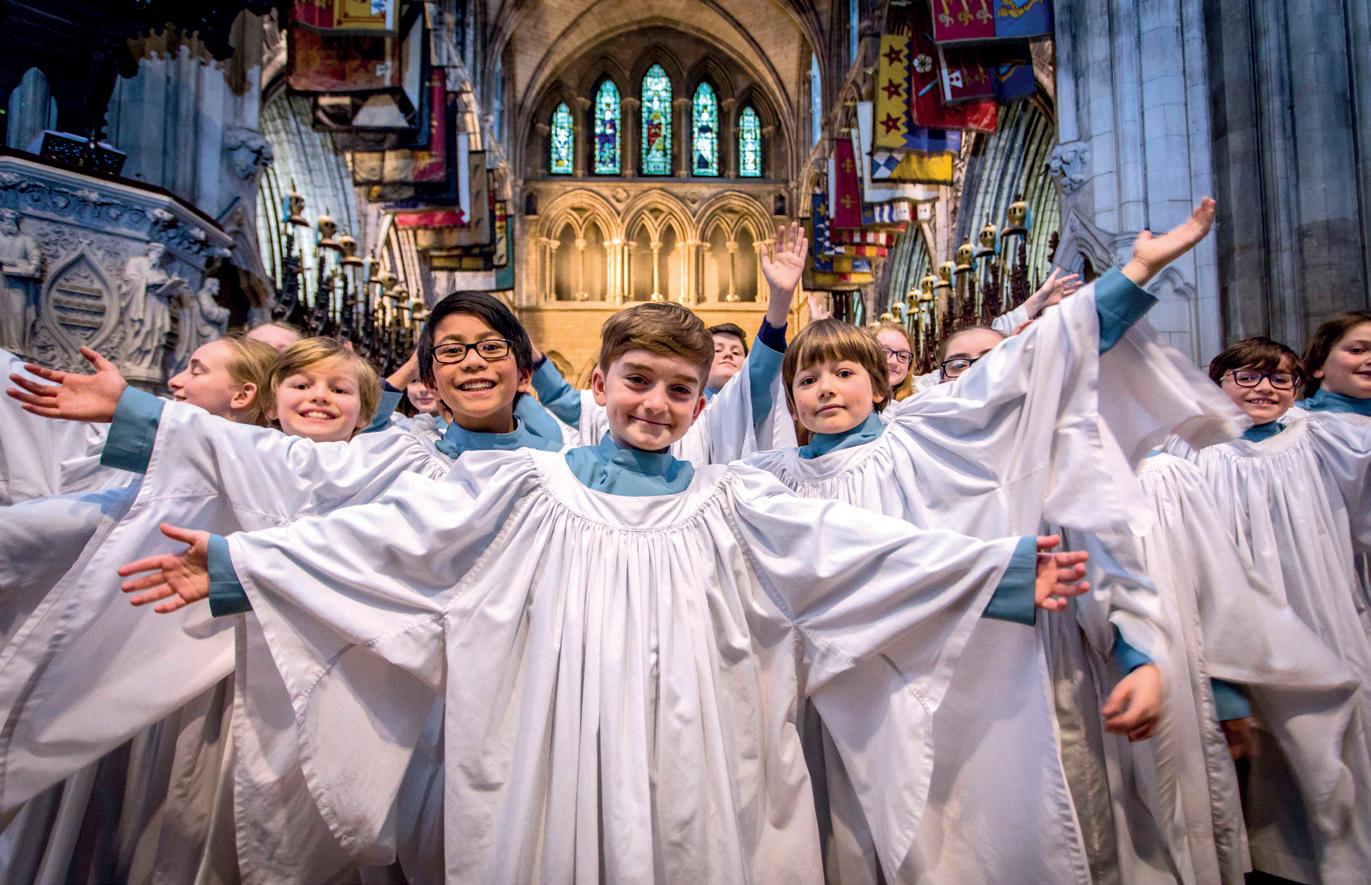
throughout the summer months rather than enjoying a much needed break from both school and cathedral during July and August. No peace for the wicked indeed, and very wicked they must have been. There’s a great story from by Charlie Reede, ex-chorister and former Tower Captain (sadly no longer with us) – he told me how during the long summer months he, along with his chorister cohorts, would slip past the Precentor after Mattins and escape onto the cathedral roof to while away the hours until called back in for Evensong. There are even (rather more alarmingly) stories concerning choristers shimmying up the spire – thankfully these days the choristers are properly supervised, and access up the tower is limited!
It would be remiss of me not to mention the back row – or more accurately, the middle row, the back row being reserved
Speaking of Christmas: the festive season and St Patrick’s, especially for those born and raised in Dublin, are very much synonymous with each other, largely due to our annual radio broadcast of Nine Lessons and Carols, the unbroken record of which dates back to the 1940s.Choristers at St Patrick’s, Dublin Photo: Tristan Hutchinson
for the members of the cathedral chapter. The ‘Gentlemen of the Cathedral Choir’ comprise eight lay vicars choral (recently increased from six), two ‘Sunday men’ (until recently both called Victor and affectionately known as the ‘lay Victors choral’) as well as several choral scholars. It wasn’t so long ago that the lay vicars would hold down ‘real’ jobs, i.e. the 9-5 variety, and Evensong was so timed as to allow a quick dash from office to stalls and then home to the family, via a swift pint in the ‘Frog and Loincloth’, of course – length of psalm permitting. These days most if not all of the lay vicars make their living from music, whether by teaching it, writing it or performing it, and we are fortunate to be able to attract such talented signers as and when a vacancy arises.
Recording has become a regular part of the choristers’ schedule. We have recently released our third and fourth CDs under the watchful eyes (and ears) of Gary Cole at Regent Records, the fourth of which marked the girl choristers’ recording debut (not bad for their first year). These recordings have not only helped raise a considerable amount of money, they have also contributed to raising the profile of both the cathedral and its choir well beyond the city limits via broadcasts and, I’m pleased (and a little relieved) to say, some very favourable reviews. To date my favourite was for our Christmas in Dublin disc released back in 2013 when the boys of St Patrick’s were likened to those of King’s College Cambridge but whilst the boys of King’s were described as ‘angelic’, ours were described as ‘lusty’, and I’m happy to take that as a compliment.
Speaking of Christmas: the festive season and St Patrick’s, especially for those born and raised in Dublin, are very much synonymous with each other, largely due to our annual radio broadcast of Nine Lessons and Carols, the unbroken record of which dates back to the 1940s. For those listening either from within the cathedral or those tuning in on RTÉ Radio (Ireland’s national broadcasting service), the format and content would be for the most part instantly recognisable until you reach the final carol. At this point the familiar text of Charles Wesley’s Hark! the Herald Angels sing is paired not with Mendelssohn’s familiar tune, as you might expect, but instead with Handel’s Judas Maccabeus, more often associated with Easter and ‘Thine be the glory’. My first experience of this unusual pairing reminded me somewhat of that Radio 4 classic I’m sorry I haven’t a clue and Willy Rushton attempting to sing Great balls of fire to the tune of The Blue Danube. The three verses we are all familiar with are split in two with refrains at the end of each verse –certainly long enough to cover the offertory collection in a full cathedral on Christmas Eve. Over the years though, the tempo had decreased to such a degree that this carol had become something of a Herculean task for the choir and could quite easily see us singing well beyond the offertory and, indeed, Christmas for that matter! Thankfully, with a little encouragement, the tempo has increased to a much more singable one and my initial reservations aside, I now couldn’t imagine Christmas without it – right from the first entry of the timpani (something which has scared generations of choristers) right up to the final chord some ten minutes later. If you are now attempting this unusual pairing for yourselves and struggling, just persevere... It’s a good deal easier than trying to sing ‘Thine be the glory’ to the Mendelssohn tune – even Messrs Rushton, Greene, Taylor and Cryer would draw the line there.
Accompanying us throughout the year in addition to the occasional trumpets, drums, harps and even the odd jazz trio, is the cathedral’s magnificent Willis organ – another Guinness family addition. The organ has been in daily use since its installation in 1902 with only a few exceptions –choral services were temporarily halted on three occasions, the Easter Rising of 1916, the occupation of the organ loft by Afghan asylum seekers in 2006 (ironically right in the middle of the Cathedral Organists’ Association last visit to Dublin) and, more recently, during last year’s storm Ophelia, at which point wind stopped play! During its working life, the organ has been overhauled several times and is now in the very capable hands of Organist David Leigh and organ-builder Trevor Crowe at Kenneth Jones Pipe Organs, and in their care many of the idiosyncrasies from previous rebuilds have been addressed, lost ranks reinstated and a new Nave division has been added.
At the time of writing, we are enjoying a much needed summer break – but the new term is never very far from our minds, especially with Remembrance Centennial Commemorations fast approaching. This year in addition to our annual Act of Remembrance, the girls and gentlemen are performing Brahms’s Requiem with the RTÉ Concert Orchestra in the cathedral whilst the boys perform Britten’s War Requiem with the National Symphony Orchestra in the National Concert Hall. Christmas won’t then be far behind nor will the annual hunt for the next generation of choristers. Thankfully, we already have five boys lined up for next September, but there’s plenty of work still to be done.
We look forward to the FCM’s visit in 2020, but in the meantime, if you find yourself Dublin-bound, do pop into St Patrick’s – we’ve plenty of services to choose from, we are also conveniently located next to Fallons, the preferred cathedral watering hole which is reputed to serve the best pint of Guinness in Dublin and continues to provide much needed restoration for the lay vicars on a daily basis. Sláinte!
Stuart’s interest in church music began at an early age whilst singing in his father’s church choir. He later studied at The Royal College of Music with John Birch and was awarded scholarships at St Paul’s Cathedral and the Temple Church. Following posts in the cathedrals of Edinburgh and Birmingham, Stuart was appointed Master of the Music at St Patrick’s Cathedral, Dublin where he lives with wife Victoria and their 8-month-old daughter Charlotte, who certainly has the mischievous potential (and lung capacity) to become a chorister.

Ifirst heard Olivia Hunt sing properly on the Sunday after Christmas in 2012 at St Asaph Cathedral. I’d convened an ad hoc choir to premiere a Mass setting I’d written, and she was one of the sopranos. I was immediately struck by her purity of sound, the colour in her voice and her confidence to come in and sing with a group of complete strangers. After hearing her sing a solo in a concert with a chamber choir she was a founder member of a couple of months later, I decided that this was definitely someone I wished to work with in the future.
with a rather difficult song cycle that I had written for her. From beginning to end, her singing was effortless, incredibly musical and flawless throughout.
Later that year, I was to have a setting of a Requiem I’d written premiered in the North Wales International Music Festival and Olivia kindly agreed to be the soprano soloist for this. As ever, her performance was of a first-class standard and she navigated a rather tricky part without any trouble at all. She later recorded this work with the choir of Selwyn College Cambridge, directed by Sarah MacDonald for the Regent label.
Church Cathedral interiorWe gave our first concert together – a very informal lunchtime affair in St Paul’s, Colwyn Bay – in June 2013. At this time, Olivia was an undergraduate at Manchester Metropolitan University, studying Biomedical Science. This concert consisted of a variety of music from Purcell through to Quilter, and finished
Having asked Olivia to be soloist at various other engagements following this, it was in the summer of 2016 that she suggested founding some sort of Early Music ensemble. I have to confess

that I hadn’t really investigated much music before the time of Bach, and the whole idea terrified me in some ways, but Olivia’s infectious enthusiasm for the genre was impossible to refuse and so we set about co-founding Ensemble 1677.

Ensemble 1677 was named after the Italian soprano and composer Barbara Strozzi, who died in 1677. Strozzi was a rather remarkable woman; born illegitimate, her ‘adopted’ father (in fact her real father, who adopted her to ensure she had a good start in life) had encouraged her musicianship and gave her many opportunities to perform in front of nobility. Strozzi had more works published in her lifetime than any other composer, with the determination to provide security for her children.
Experimenting with performances of a couple of smaller works at events at which Olivia had been booked as soloist, we set about forming our group. Olivia’s mantra was always to have fun; singing and performing had to be enjoyable, whilst still maintaining a very professional approach and always preparing works thoroughly. She once said to me: “You approach performances as a professional musician who does this for a living; I sing because it’s fun and I enjoy doing it,” and so I continually learn much from her about the whole ethos of performance. I’d never worked with someone who performs purely because music is a living, breathing part of them, and who feels the music so naturally, as if it runs through their veins.
Our working partnership ended up being naturally divided between Olivia making artistic choices and financial decisions (something I am not good at) and me covering administration and arranging scores where necessary. When I’ve had crazy ideas that were possibly a little too adventurous, Olivia would
rein me in; where Olivia may have been unsure about an idea working, I’ve sometimes given a gentle nudge. For me, our rehearsals have always been the most enjoyable part of working together; divided almost equally between attention to detail and laughter, it’s such a good example of how a strong friendship contributes to the success of the final result. Having formerly been Head Chorister at Chester Cathedral as well as a finalist in the BBC’s Young Chorister of the Year competition, Olivia had much exposure working as a soloist, but within the confines of the choir stalls. Her impressive list of solos included a live BBC1 broadcast on Christmas Day from Chester Cathedral, many Radio 4 Daily Service programmes and a Radio 3 Choral Evensong. Now that she was able to do her own thing, her overall priority was to take the elitist factor away from classical music and try to make it accessible to a wider range of people. After searching through lots of repertoire to gain ideas of what to start programming, we both felt very strongly about taking the Early Music message to as many people as possible, especially in areas where this genre of music may not have been heard before.
We were fortunate to be able to recruit some talented local musicians to join our project, all active at the time in cathedral music. Sarah Williams, a member of the St Asaph Cathedral voluntary choir, joined as our recorder player; Richard Griffiths and Francis Hills joined as countertenors who were also lay clerks at St Asaph and Chester Cathedrals respectively; Bethan Royles, at the time an alto in the Chester Cathedral nave choir, joined as a violinist, and we took on a young oboist, Grace Dixon, a chorister in the St Asaph Cathedral choir. Graham Eccles, who had formerly held the posts of Assistant Organist of Chester Cathedral and Organist of St Asaph and Bangor Cathedrals, also helped out from time to time, playing percussion or additional continuo parts where needed.
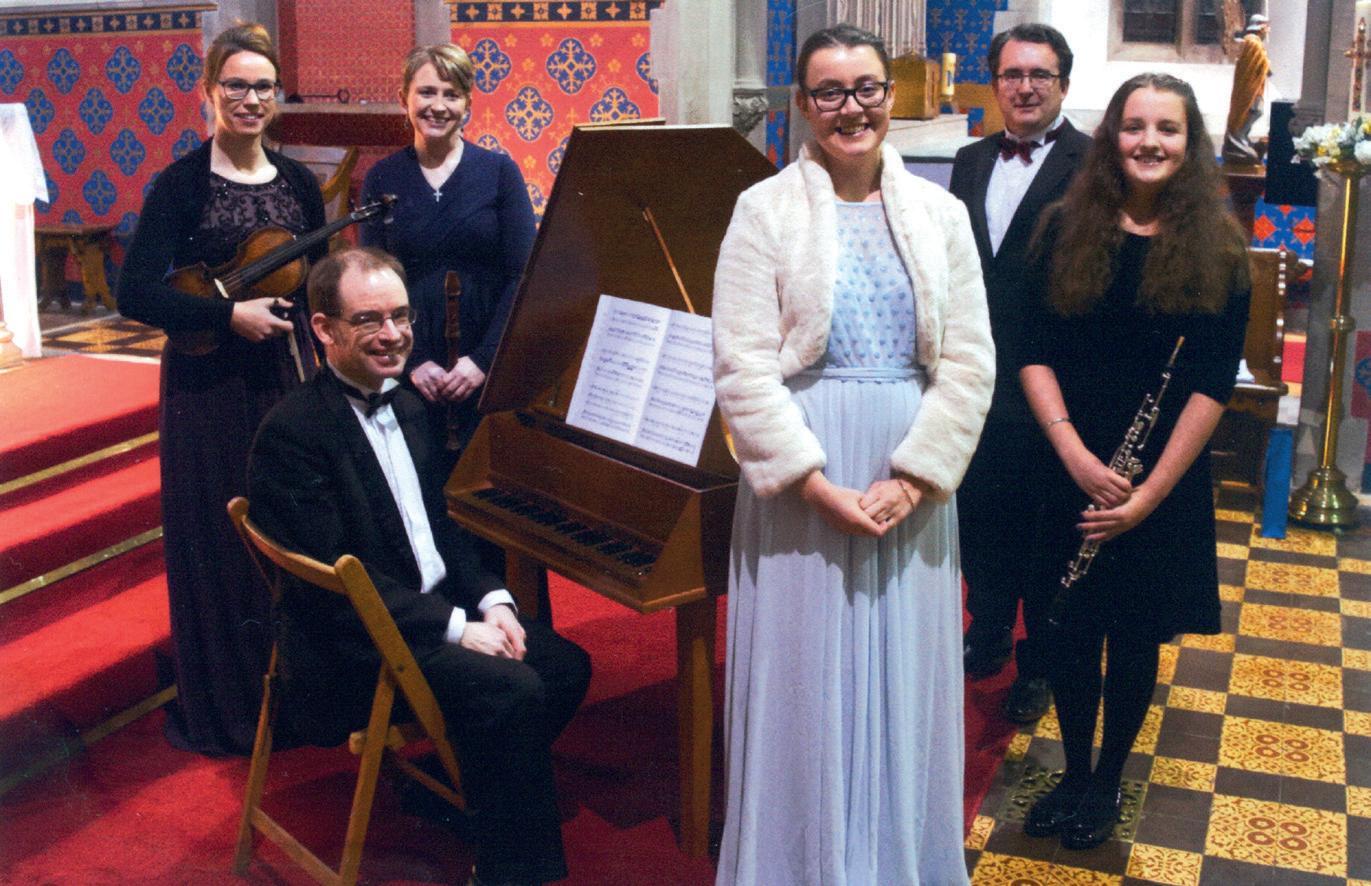
We decided that the easiest way to start off was by performing concerts in local churches, offering a 50% split of the takings between our group and church funds. Our launch concert took place at Pantasaph Friary in North Wales to an audience of around 60 people. Works ranged from Purcell, Strozzi and Sances through to Byrd, Monteverdi and the beautiful anonymous ‘Ninna Nanna’. Following this, we gave a total of 20 concerts in 2017 either with the ensemble or as a duo: these included the Conwy and Lincoln Festivals, parish churches in North Wales and Cheshire, staging Purcell’s Dido and Aeneas in conjunction with the St Asaph choral society with former cathedral choristers or current lay clerks at Chester Cathedral as soloists, and Olivia and I undertook a short tour of the south west, visiting venues such as Truro and Bristol Cathedrals and St Michael’s Mount. Our most popular concert was a postChristmas concert in St Asaph Cathedral which was so well attended we had to have extra seats put out!
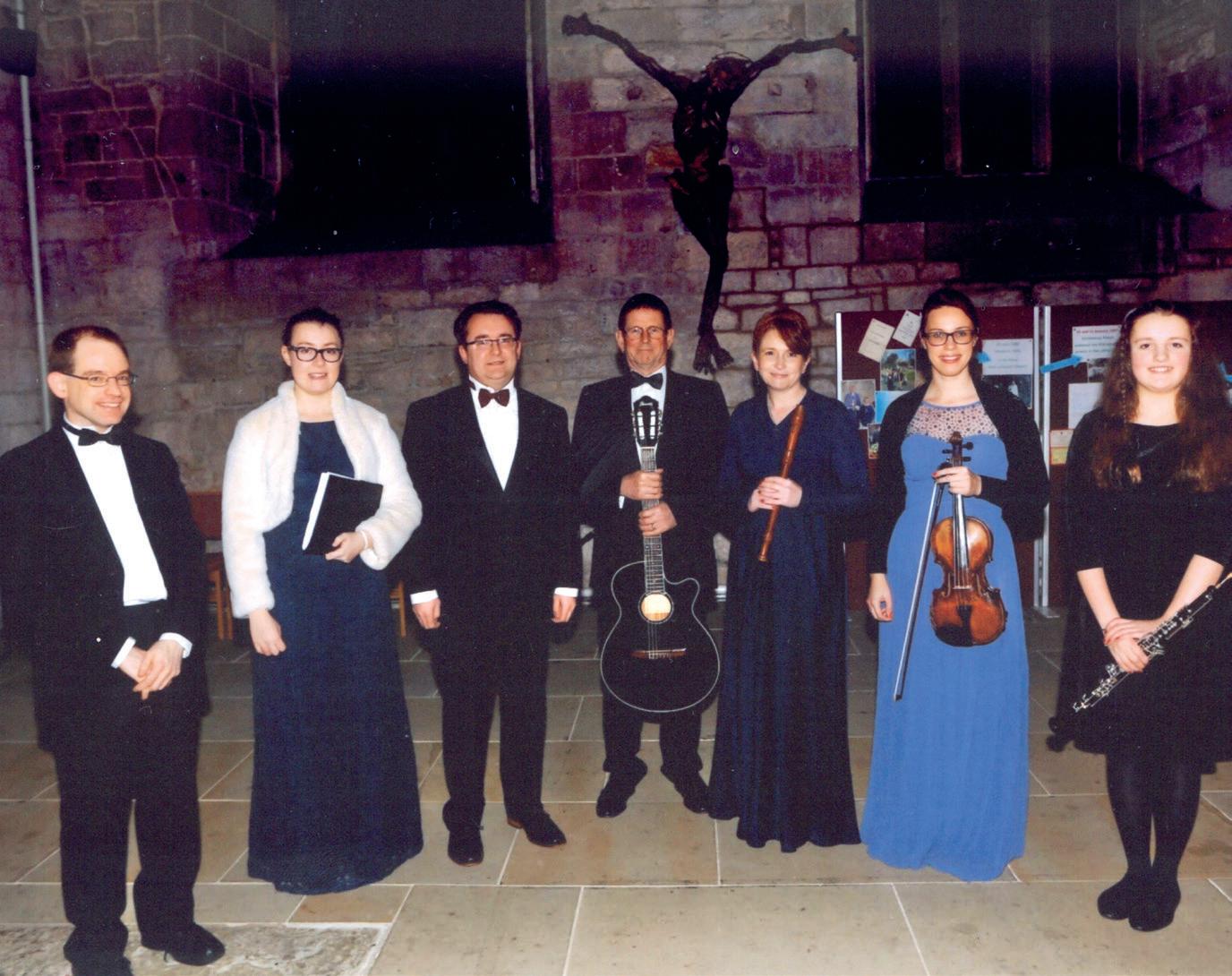
Olivia’s immense sight-reading ability, as well as her natural musical instinct to shape phrases exquisitely, meant that we were able to cover a massive repertoire throughout 2017.
Unfortunately, towards the end of 2017 we had to disband our ensemble as the other members had become so busy in other areas of life, but Olivia and I decided to continue working as a duo and see where that took us. We were lucky to have several broadcasts on the BBC’s ‘Introducing’ scheme, and it was towards the end of the summer of 2017 that a donation from two generous benefactors allowed us to start planning a CD recording which would be Olivia’s first solo disc.
Upon hearing about our plans, Willowhayne Records approached us and said that they would like our recording to be released on their label which would then be distributed internationally by Naxos Global Logistics. We elected to include a broad selection of music, starting with a focus on Early Music and culminating with later works by Vaughan Williams, Quilter, Gershwin and myself.
After much thought and discussion, we decided to record the tracks with organ and harpsichord accompaniment at Bangor University and to record the tracks with piano at the Wesley Centre in Chester. Both venues had superb instruments and
Our most popular concert was a post-Christmas concert in St Asaph Cathedral which was so well attended we had to have extra seats put out!Ensemble 1677 Christmas Concert at St Asaph Cathedral Photo: Nathaniel Ramanaden
acoustics and we felt they would easily do the works justice. Our disc, ‘Musick to heare’ is released this November and will be available as a digital download as well as in regular CD format. The title is taken from Shakespeare’s Sonnet No. 8, which I set to music for Olivia in 2014 and forms part of the CD programme.
At the time of writing, we’re not entirely sure what the future holds; we are looking at performing opportunities, always with the idea of discovering new repertoire and sharing our passion with audiences far and wide, and are currently sorting our concert diary for 2019.
I feel strongly about publicising our work in order to encourage any current choristers in cathedral choirs to consider ways of continuing their music once their chorister days end. Olivia has demonstrated that it is possible to continue singing at a high professional standard without studying at a conservatoire and whilst working in another field. She has continued singing lessons and studies with Damian O’Keefe, a bass lay clerk at Chester Cathedral, and has also received coaching from Dame Emma Kirkby. As the recipient of the 2018 Sickle Foundation Award from the Worshipful Livery Company of Wales for services to Welsh music, she has been able to gain financial support for these lessons whilst setting up her own successful business as an equine sports massage therapist. Olivia recently performed a commissioned work by myself at the Cardiff Senedd in a concert marking the silver jubilee of the Livery Company.
There is a current trend that singers must go to music college and must become opera singers, which then often means that they have voices not suitable for choral work. Olivia’s hard work and dedication have paid off and demonstrated that a solo career can be carved out without that sort of training and direction. It also means that she has a voice which still blends chorally and to this extent she often returns to where it all began, acting as a deputy lay clerk at Chester Cathedral.
As a former cathedral organist – and one who specialises very heavily in solo performances of Romantic music such as Reger, Karg-Elert and Vierne – this performing venture opened up a whole new world of music to me that I wouldn’t have otherwise discovered and now very much enjoy performing. I think our advice to any budding soloists would be to simply have fun and go for it; team up with a good accompanist, listen to lots of music, look through plenty of scores and plan programmes which are carefully balanced. Many churches are open to holding concerts, especially if they have some sort of appeal in place; start small and see where it takes you and use the experience to build up contacts and experience.
For further information, our website www.hhclassicalduo. weebly.com can be consulted, or we can be contacted via hhclassicalduo@gmail.com

John Hosking is a freelance organist, composer and conductor, having just completed 14 years as Assistant Director of Music at St Asaph Cathedral. He was educated at the Royal College of Music and previously held positions at Westminster Abbey and Truro Cathedral. He has had over 30 choral works published by the Chichester Music Press and his compositions appear on several commercial CDs. As a recitalist he has given over 20 recitals at Westminster Abbey as well as solo concerts in NotreDame Cathedral, Paris, and Washington National Cathedral.
We are very grateful to the late Nathaniel Ramanaden for taking many photos of our performances. Nathaniel was a keen supporter of our ventures as well as of cathedral music in general. Our gratitude must also be given to David Flanagan and Dr Jeremy Honeybun, who generously sponsored our CD recording.
Friday 23 November 2018 7.30pm St Margaret’s Church, Bodelwyddan (CD release date)
Wednesday 13 February 2019 12.30pm St. Mary in the Baum, Rochdale
Saturday 6 April 2019 7.30pm Christ Church United Church, Rhyl
Saturday 11 January 2020 7.30pm Edinburgh Society of Musicians

Ihave recently completed a series of 28 concerts in which I performed all the surviving music written by J S Bach for the organ. It has been quite a journey, and one in which I have relished every single concert.

The first question faced by anybody performing ‘The complete organ works of J S Bach’ is actually precisely what to perform! There are many pieces with BWV numbers that are definitely not by Bach, and many more where the authenticity is questionable, to varying degrees. I have not performed any of the former group, but my approach to the latter was slightly more flexible. My rule of thumb was that if I felt from the sources and quality of workmanship there was a chance it could be by Bach, the piece was then included.
The next question was how to arrange the music. I was certain that I wanted each recital to have a programme which was satisfying and complete in itself, but I also wanted an approach that would have a sense of progression through the whole series. Bach’s music divides naturally into pieces that are based on chorale melodies, and those ‘free’ pieces which are not, such as the preludes, toccatas, fugues and sonatas, and, with this in mind, I decided to include two strands in each concert. The free works were performed in approximately chronological order (insofar as that could be determined), which allowed me and, I hope, the audiences to follow the evolution of Bach’s musical language. The chorales were all performed in the appropriate liturgical season, which of course would have been an integral aspect of any performance Bach might have given. Thus collections such as the Orgelbüchlein and The Eighteen were broken up and heard side by side, allowing the widely differing responses Bach had to the same chorale to be directly compared.
The climax to both strands was reached in the final concert, a complete performance of Clavierübung III. This remarkable volume is the only substantial collection of organ music Bach actually published during his lifetime. Book-ended by the majestic ‘St Anne’ Prelude and Fugue in E flat, most of the pieces are chorale preludes on some of the oldest and most significant Lutheran chorales, which in the concert were beautifully sung by soprano Grace Davidson. Each chorale receives a largescale setting for full organ and a smaller, more intimate one for manuals only. The collection is full of compositional and technical virtuosity, the style of the music ranging from strict stile antico to some of the most rhythmically and motivically complex music Bach wrote for any instrument. It was clearly intended by Bach as a summation of his compositional art for his own instrument, published in 1739 when he was at the height of his compositional powers, and as such seemed an appropriate way to finish the series.
The series was based at my ‘home’ church at the Temple in London. The magnificent Harrison & Harrison organ, an English Romantic organ dating from the 1920s, is perhaps not the most obvious choice for such a task, but in fact, since the superb rebuilding completed in 2013, the instrument performs the music of Bach surprisingly well. It is helped by the acoustic, which adds a shimmer and bloom to the sound while still allowing the complex polyphony to be performed with real clarity. But the instrument itself is also definitely equal to the task. A new secondary chorus was added to the Great in 2013, giving a convincing smaller companion to the main chorus, and all the mixture work speaks with real clarity and brightness. For the softer pieces, there is a wealth of beautiful sounds, albeit often involving the judicious and completely inauthentic use of octave and unison off couplers!
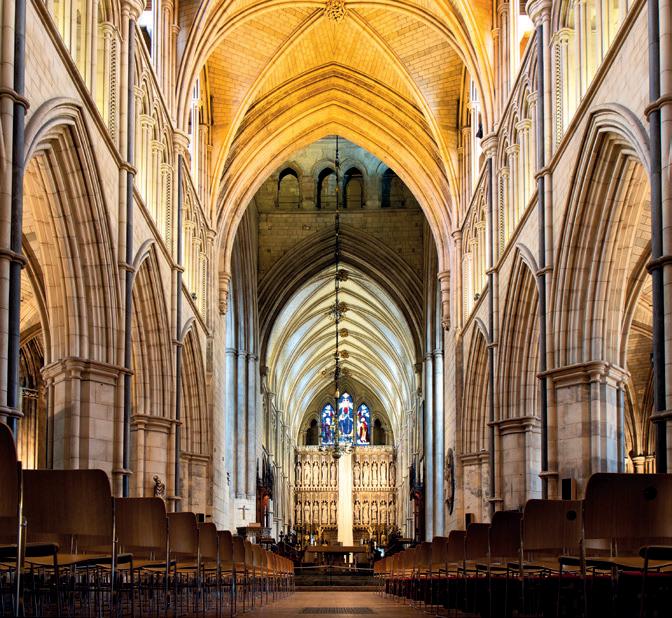
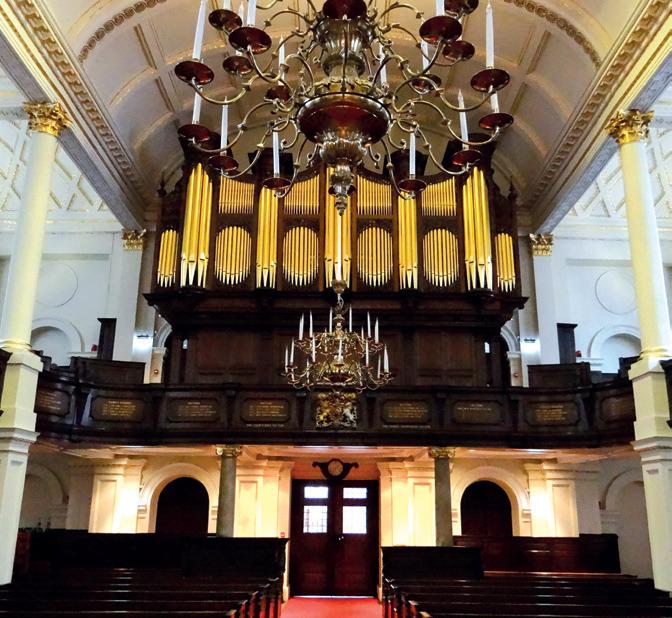
In addition to performing at Temple, I have been on my travels around London, taking in everything from the grandiose (St Paul’s, Westminster and Southwark Cathedrals, and Westminster Abbey), through large parish churches (Marylebone, St Martin-in-the-Fields, St George’s in Hanover Square) to the small and intimate (St Matthew’s Westminster, the Swiss Church). Some of these venues have organs which are much more obviously suited to the music of Bach than others, and making sure the music was suitable for a particular instrument and building was certainly another complicating factor in deciding what to perform when! For example, I decided to place the famous Toccata and Fugue in D minor somewhat out of its correct chronological position so that I could play it at St Paul’s Cathedral, as it seemed appropriate to perform it in that vast, resonant and dramatic building. But I think the fact that it is possible to conceive a series of the complete organ works taking in such vastly different buildings and instruments underscores one of the most crucial aspects of Bach’s organ music – that, perhaps to a greater degree than the music of any other composer for the instrument, the very essence of the music is such that it allows interpretation on widely differing instruments without any loss of integrity.

I have enjoyed playing Bach’s music since I first started learning the organ more than 25 years ago, and have long held an ambition to perform his works complete. Nevertheless, I have been taken aback by the extent to which the journey has refreshed and deepened my understanding, not only of the music itself, but also the man who composed and originally performed it. Bach’s music is legendary for its complexity and richness, the product of an extraordinary musical mind. As an organist, one naturally encounters and appreciates this on a regular basis in relation to individual pieces; but in preparing the work of this one composer so intensively, I have been struck by the myriad echoes across all his work, and the deftness with
which he bends identical motifs to his purpose in vastly different structures, from the jewel-like miniatures of the Orgelbüchlein to the monumental proportions of the large preludes and fugues. Above all, living with the music so closely for a year has allowed me to appreciate again how Bach assimilated ideas from musical traditions all over Europe and gradually absorbed them into his own distinctive musical language.
When faced with music of the ingenuity and integrity of the Canonic Variations or Clavierübung III, it is very easy to lose sight of the man who composed it, but performing this series has also encouraged me to think more about the personality behind the music. Bach’s music was known a little beyond his immediate musical circle in his own lifetime, and indeed the
Bach’s music was known a little beyond his immediate musical circle in his own lifetime, and indeed the debate as to whether his music was just too clever for its own good was already raging in the 1730s; but he was far better known by his contemporaries across Europe as one of the finest organ virtuosi of the day.St Marylebone organ pipes
debate as to whether his music was just too clever for its own good was already raging in the 1730s; but he was far better known by his contemporaries across Europe as one of the finest organ virtuosi of the day. His first professional musical post was as Organist of the Neukirche in Arnstadt, and he held further appointments as Organist in the towns of Muhlhausen and Weimar. On becoming Kantor at Leipzig, he continued to inspect organs throughout that part of Germany. He was still composing new works for the instrument late into the 1740s and, if we are to believe the famous anecdote, he revised a chorale prelude on his deathbed. He also went on performing on the organ regularly enough to maintain his virtuosic technique, as the following newspaper announcement of a performance in Dresden attests:
On 1 December 1736, the famous Capellmeister to the Prince of SaxeWeissenfels and Director Musices at Leipzig, Mr Johann Sebastian Bach, made himself heard from 2 to 4 o’clock on the new organ in the Church of Our Lady, in the presence of many Persons of Rank, also a large attendance of other persons and artists, with particular admiration.
So there is a sense in which the organ works are the most direct link we have with Bach the performer, and as a whole they can be used to paint a wonderful picture of the man throughout his life: as a budding young organist, building a repertoire of the chorale preludes he would need for his nascent career (delighting in finding ever more outrageous harmonies to get under the skin of the church authorities along the way!), or emulating the virtuosity of his hero Buxtehude in distant
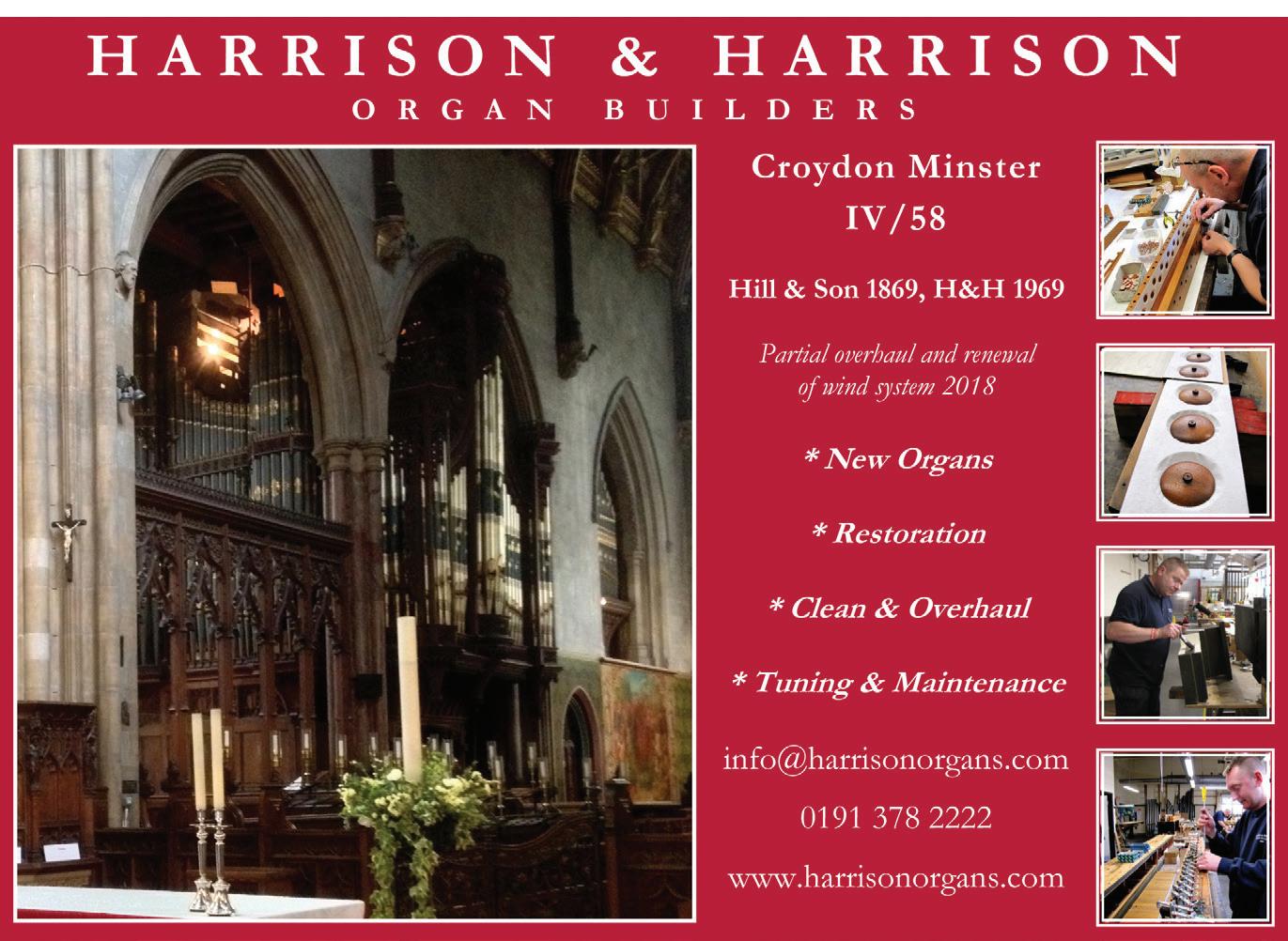
Lübeck; as an ever-more confident professional, discovering new music from Italy and France, and exploring by means of transcription and recomposition how best to use it to enrich the language of his own instrument; and as a mature and self-aware composer, in total command of the techniques, both performing and composing, needed to make the most of the power, subtlety and expressive potential of his chosen instrument. Running through the whole span is a very deep knowledge and love, both musical and theological, of the chorales which formed the bedrock of the liturgy of the Lutheran church of which he was a devoted member.
When embarking on a project such as this, one naturally wonders whether in fact you already know all the music by Bach that is worth performing, and whether the rest is best left alone. From an entirely practical point of view, it was a relief to discover that the music I didn’t know got easier to learn through the year, as I became even more accustomed to and immersed in Bach’s style. There were a few pieces I came across, mostly among the very early chorale preludes, that I will probably not dig out again, although even in those pieces there were very often small details that pointed forward to the richness and invention of Bach’s later music even while it was evident that the composer lacked the musical maturity to express them convincingly when they were written. But those pieces are easily outnumbered by the exciting new discoveries I have made, pieces which I aim to keep in my repertoire for many years to come – just in case the opportunity to repeat the whole series comes around again!


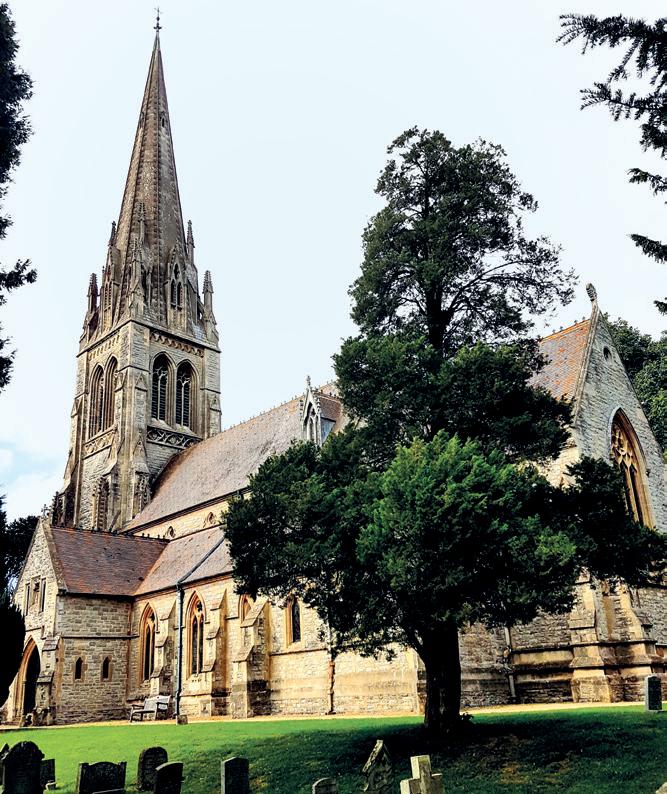
7October 2018 marked the centenary of the death of Sir Hubert Parry, who was born in 1848 and died in 1918, one month before the Armistice of the Great War. Parry was an outstanding figure in the musical world: a great composer (even the unmusical know ‘Jerusalem’), a writer on music, and an educator and administrator (he was Director of the Royal College of Music from 1895-1918 and Heather Professor of Music at Oxford from 1900–1908). He was also a historian and free thinker, whose keenness of vision was an inspiration to his many students and whose humility and integrity endeared him to all who met him. Parry wrote a great deal of church music: Delius is said to have remarked that Parry would have set the whole Bible to music had he lived long enough, yet his religious beliefs were far from orthodox.
The circumstances of Parry’s birth were dramatic. In early 1848 Thomas Gambier Parry of Highnam Court near Gloucester took his consumptive wife, Isabella, on medical advice to Bournemouth. Isabella died there, 12 days after giving birth to a son, Hubert. The bereft Thomas buried her at St Peter’s in the town and returned home with Hubert to join his other son, Clinton, aged eight, and daughter, Lucy, aged seven.
Thomas Gambier Parry was a High Churchman and philanthropist. Highnam did not have a church, and Thomas and Isabella had spoken of building one. After Isabella’s death he determined to build a church in memory of her and of the three of their children who had died in infancy. He threw himself into the project and commissioned the architect Henry Woodyer, a personal friend, to design a church in the Gothic Revival style. He himself decorated the church interior with frescoes of Biblical scenes, using his own spirit-fresco method to withstand the damp British climate. Dedicated to the Holy Innocents and with a bust of Isabella placed in the side chapel, it is now Grade I-listed and one of the most significant Victorian churches in the country.
Thomas Gambier Parry remarried in 1851; his new bride was Isabella’s first cousin Ethelinda Lear, a daughter of the Dean of Salisbury and mother to many subsequent children. Hubert’s early childhood was marked by the births of no fewer than five half-brothers and half-sisters. The three children of the first marriage took the name Parry, while those of the second eventually called themselves Gambier-Parry (hyphenated, unlike their father). Thomas would spend an hour on Sunday afternoons discussing the scriptures with his children, and Hubert grew up with a thorough knowledge of the Bible.
Hubert soon showed clear musical inclinations. At Twyford preparatory school near Winchester he was introduced to Samuel Sebastian Wesley, Organist of Winchester Cathedral and a friend of Hubert’s father. Wesley, who was later appointed Organist at Gloucester Cathedral, was a formative influence, giving Hubert a lifelong love of the music of J S Bach. After Twyford Hubert was sent to Eton, where he took music lessons with Sir George Elvey, Organist of St George’s Chapel, Windsor, and successfully sat the Oxford BMus examination, the youngest person who had ever done so. Elvey encouraged Hubert to compose, and often performed his early church music with the chapel choir. At Highnam Church in school holidays Hubert was taught harmony, counterpoint and piano by Edward Brind, the organist there.
The dominant, formative personality in Hubert’s childhood was his father – loving, selfless, energetic, driven, intelligent, artistic and highly principled. Hubert acquired these characteristics but with an inner anxiety and loneliness born of the loss of his mother, an independence of thought that in adulthood led to disagreement with his father over religion, and a vigour in physical pursuits bordering on the foolhardy. In 1866 Hubert went up to Exeter College Oxford, to read law and modern history, as his father intended him to have a commercial career; music was a suitable interest but not a
suitable profession for a gentleman’s son. Hubert wanted to further his compositional skills, and in the summer of 1866 his father arranged for him to study composition in Stuttgart with the expatriate composer Henry Hugo Pierson.
After graduation from Oxford and at the suggestion of his father, Parry and a partner set up an insurance business at Lloyd’s Register of Shipping in London. Although his heart was in music, Parry had an ulterior motive in going into business: he had fallen for Maud Herbert, a daughter of the late Sidney Herbert of Wilton House, First Baron of Lea, and Herbert’s widow was insistent that her daughter marry a man with a secure and good income, not one hoping to support himself through music. When Parry was invited to Wilton in 1871, he found that his entry into business had brought about a change of heart in Lady Herbert and he married Maud the following year.
Parry hated the work at Lloyd’s, but if work in the City was uncongenial, a big advantage of life in London was the
ability to go to concerts and meet important figures in the musical world: Parry was introduced to Clara Schumann, the distinguished pianist, composer and widow of Robert Schumann, and Joseph Joachim, the great violinist and friend of Brahms. He joined the Bach Choir as a bass, occasionally took its rehearsals, and conducted its performances when the conductor was indisposed.
He started lessons in piano technique from the brilliant pianist and writer on music Edward Dannreuther, at Dannreuther’s home in Bayswater. He did not just learn about piano technique from Dannreuther, but showed him compositions for valued comment and advice. Many of Parry’s chamber works were first performed in Dannreuther’s large studio. From around 1877 Parry also started writing articles for Grove’s Dictionary of Music & Musicians, and George Grove was sufficiently impressed to make him sub-editor. Meanwhile Parry’s business at Lloyd’s was doing increasingly badly, and it was a relief to him when he and his business partner decided to wind it up. In 1883 Parry accepted from Grove a professorship at the newly-established Royal College of Music, of which Grove was the first director, and he was also appointed Choragus at the University of Oxford, requiring him to lecture in music. Parry had truly entered the musical establishment. Upon Grove’s retirement Parry was appointed Director of the Royal College of Music and continued in that post for the rest of his life.
Parry’s first biographer wrote that up to the time he went to Oxford he was very devout and was moved by religious services and sermons, but it later became impossible for him
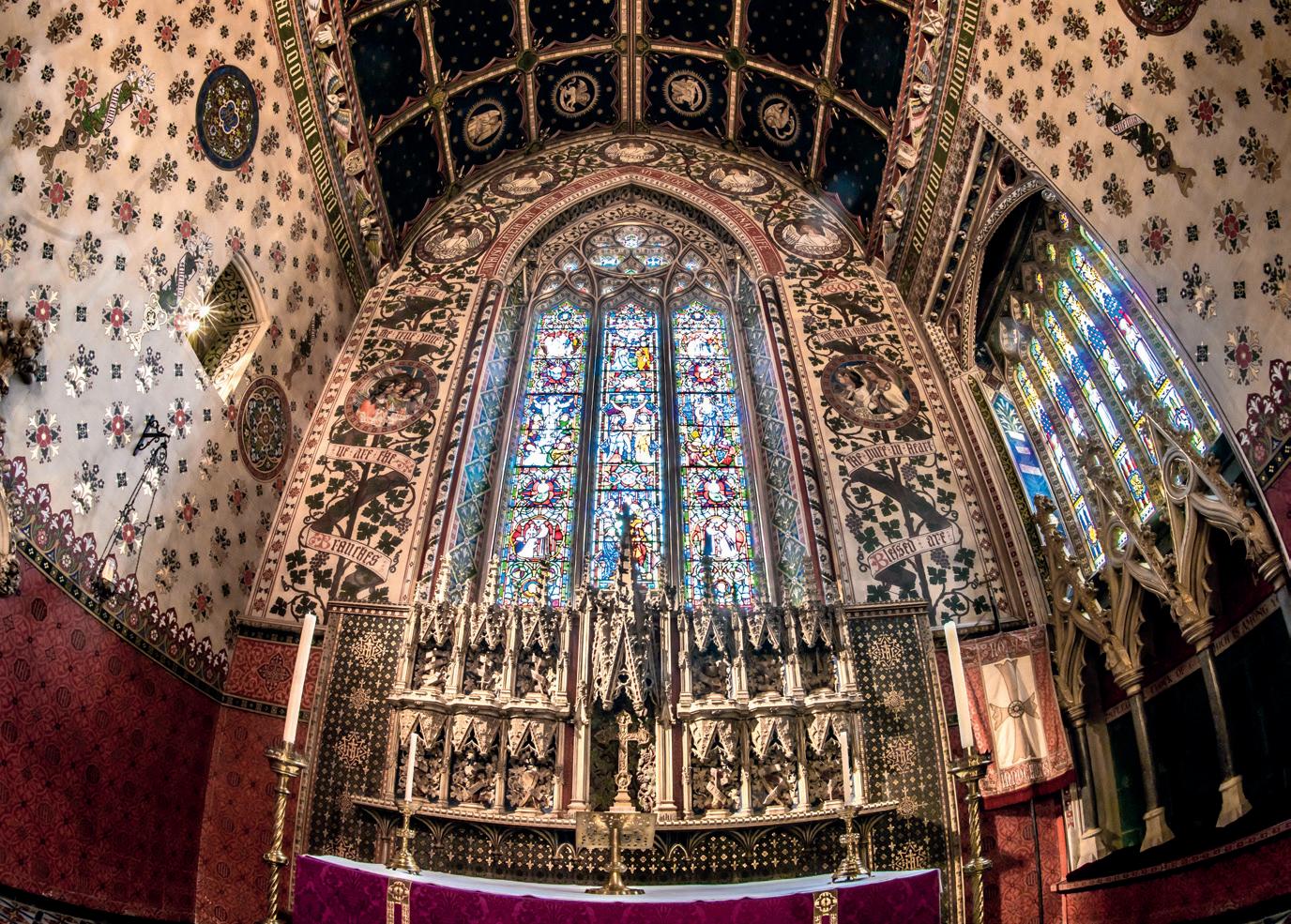
In Parry’s church
we hear the aspirational, majestic, solemn and tender qualities for which his nonsacred music is loved.Highnam Church interior Photo: Simon D Jenkins of Mumbles
to conform, as religion had become for him something that must be applied to life. He revered the character of Christ, and no music stirred him more than that of Bach, being inspired by fervent belief. Parry wrote church music throughout his compositional career. A son-in-law described him as the most religious man he had known, but Parry was in reality an agnostic theist: he accepted the existence of God (and believed that God is good), but rejected religious doctrine.
He was a great thinker: as his son-in-law put it, his mind was always biting. Parallel to what has been called an earthquake in the natural sciences during the 19th century, there was a radical questioning of established assumptions and ideologies. Parry was much alive to these developments and impelled by a natural curiosity to develop his own philosophy of life, as well as a deep-seated aspiration to help others. This he communicated in his college teachings, notably in his college addresses that were happily published after his death, and in the typescript of his last, unpublished book, Instinct and Character. What characterises Parry’s outlook is an unremitting, selfless honesty, a perpetual questing to make links and understand life in its complexity, and a sense of the spiritual beyond orthodox religion.
Parry’s church music has variety and includes at least 20 works. Prominent are the three oratorios, Judith (1888), Job (1892) and King Saul (1894), but there are four Te Deums (from 1868 to 1900), two Magnificats (1864 and 1897) and three orchestrated settings of the psalms, De Profundis (1891), God is our Hope (1913) and the magnificent processional anthem of 1902, I was Glad. A motet setting of Psalm 39 (Lord, let me know mine end) became one of Parry’s six late Songs of Farewell, which are highly acclaimed, and there are several other choral works with words from the Bible, sometimes augmented by Parry’s own.
In 1915 the hymn O Praise Ye the Lord (Laudate Dominum) was taken from an 1894 anthem Hear my words, ye people. Six years after Parry’s death, the fine music of Meshullemeth’s ballad from his oratorio Judith, ‘Long oft in Egypt’s plenteous land’, was set by a former pupil as the tune ‘Repton’ to words by the American Quaker poet John Whittier; it is one of the most popular hymns in the UK, ‘Dear Lord and Father of Mankind’.
Parry wrote oratorios partly because commissions for them from the regular choral festivals offered a ready platform for his music. When, in the early years of the 20th century, he felt constricted by the oratorio form, he wrote his ‘Ethical Cantatas’ to break the mould. These, which are largely forgotten today, include The Soul’s Ransom (1906) and The Vision of Life (1907), and have in the past had their enthusiastic adherents (such as the critic Felix Aprahamian and Sir Edward Elgar respectively). Mention must also be made of Parry’s organ music: the fantasias on hymn tunes and the three sets of chorale preludes that were published from 1912 to 1916.
Parry was an outstanding figure in the British musical establishment in the late 19th and early 20th centuries. He composed in every musical genre, although he had but one attempt at opera (Guenever, 1886, unpublished). He excelled as a composer for the human voice, and his choral music is marked by his facility for creating climax upon climax. His reputation suffered in his own time from unfair criticism of his oratorios from George Bernard Shaw, who believed that
Parry was wasting his time on them, famously calling Job, in spite of its popularity, ‘the most utter failure ever achieved by a thoroughly respectable musician’ and suggesting that Parry ‘burn the score’ and ‘throw in Judith when the blaze begins to flag’! He thought that Parry was not up to the dramatic challenge of oratorio and should confine himself in future to ‘absolute music’. Renewed interest in Parry’s music a century and a half after his birth has happily led to a critical reassessment.
It has been said that Parry’s approach to the composition of church music is best seen as that of the outsider looking in. It is true that he held no church appointments (he was a proficient organist) and came to reject religious dogma, but his church music is a strong and convincing part of his wide output, reflecting his special ability to write for the human voice as well as his moral earnestness. In Parry’s church music we hear the aspirational, majestic, solemn and tender qualities for which his non-sacred music is loved. It is a paradox that Parry was agnostic, yet set much of the Bible to music. Influenced always by the rational and repelled by dogma, he accepted so little of orthodox religion, yet what he accepted, the core ethical message and reverence for the spiritual dimension of life, he did wholeheartedly, and through his religious and ‘ethical’ music wished to enlarge the religion of others. Parry wrote in one of his notebooks that ‘Art is a form of devotion ... to the beautiful aspect of things, the things that minister to spiritual well-being – the truth.’
Michael Trott is a retired engineer with a lifelong interest in music, especially that of Parry and Elgar, and lives near Tewkesbury, midway between the childhood homes of these two British composers. He is also fortunate that this fine old town with a splendid abbey is home to two retired cathedral organists who have both recorded Parry’s organ music. An honorary life member of the Elgar Society, he has written several monographs on Elgar.
This article is based on information in the author’s book, Hubert Parry: A Life in Photographs (Brewin Books, 2018) (enquiries: M W Trott, 1 Shuthonger Manor, Shuthonger, Tewkesbury GL20 6EF, or mwtrott@hotmail.com).

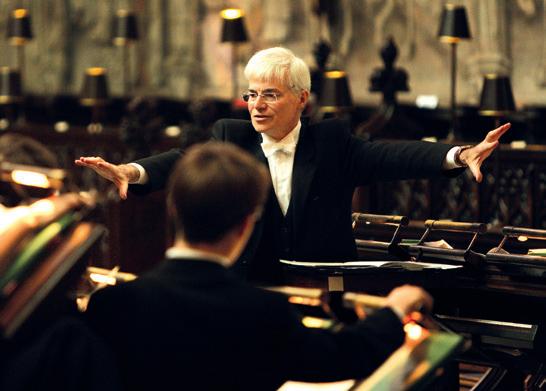

Iconsider myself very fortunate. Before they met each other, my parents said, “Whoever it is, they must love music.” Not just like it: love it. I believe that we both inherit and learn a love for music.
I don’t think my parents knew about choir schools. Happily, the wonderful state grammar school, Tiffin, was nearby where we lived, with the great John Walker in charge of the choirs. The charismatic and benignly dictatorial Brigadier J J Harper was headmaster, and he had stipulated that he required the choir to be held in ‘as high esteem as the First XV’. It was, and it still is. I teach there now, one period a week, to the Year 13 A Level music class. The current headmaster is always delighted to tell me about how much the choir is doing, and all the staff are happy for pupils to miss their lessons for music. The headmaster even asked me how he could get the choir to do yet more.
I remember standing in St Paul’s Cathedral in 1963, singing, ‘Go, in the name of Angels and Archangels’, with exultant excitement. I had no idea of the extent of John Walker’s ambition: to book St Paul’s Cathedral for Tiffin Choir to sing The Dream of Gerontius, for me, still, the greatest piece of English choral and orchestral music. We sang with the brilliant soloists of the day and a first-class orchestra. I still have the poster framed on my wall. That ambition is alive in Tiffin today with Matthew O’Malley and James Day.
That same headmaster, Brigadier J J Harper, enabled me to go to Durham, where, with a struggle, I changed from Maths and Physics to Music and then, in my third year, sang as a choral scholar in the glorious cathedral. Later, FCM’s chairman, my brother Peter (who was already at Cambridge), enabled me to sing for a year under Sir David Willcocks at King’s.
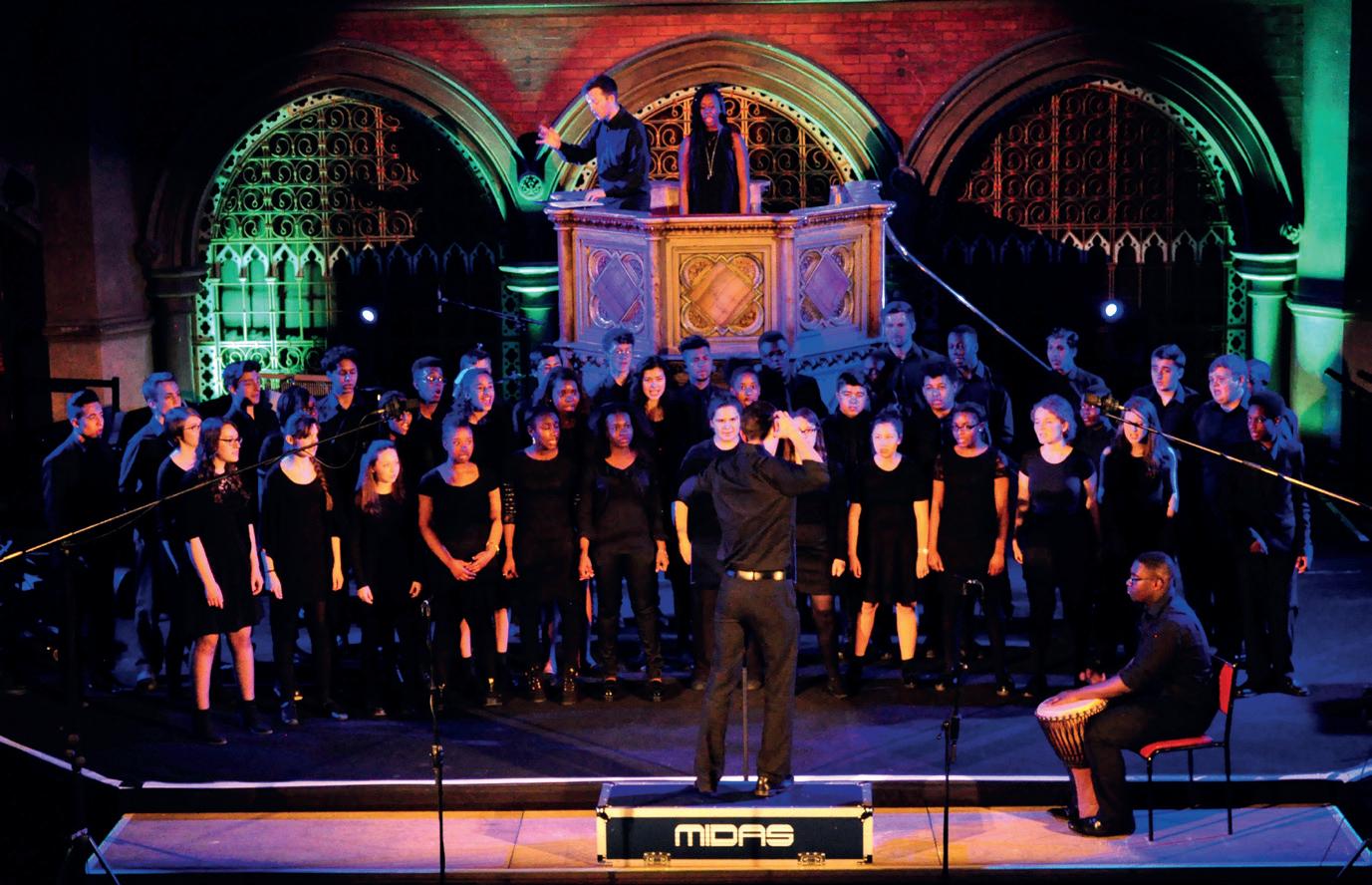
Aged 13, I already knew that I wanted to be a teacher. This was only because I loved the idea of bossing around large numbers of people, so it didn’t have much to do with helping others find their way. But I know I did care about others. For example, I so wanted our choirmaster, Johnny Walker, not to ruin his health by smoking that I went round to the chemist to investigate nicotine filters. That was me being a teacher. Actually, there was already a hint of my propensity for bossing around other teachers. When I was 13, I thought to myself, ‘Why should they all write reports on us? Why shouldn’t we write a report on them?’. For a whole day I spent my time during lessons not taking in what they were telling me (I didn’t take in that much, anyway), but analysing their teaching. Somewhere I have still got the report I wrote. I remember vividly the conclusion I came to. I told myself, ‘You know you want to teach, Ralph?’ Yes. ‘Well, just you remember that none of these people fool you. We all know how good their teaching is, whether they have adequately prepared it, how confident they are, and so on.’ Children know, whatever age they are! Parents of prospective music scholars to Eton used sometimes to express their understandable misgivings about boarding. I used to advise them to have a thorough look round the school and then simply to ask their son for his feelings in the car on the way home. Trust his judgement. And don’t be in the least offended if he says he’d like to spend some time away from home!
I had intended to start teaching music from scratch in a London comprehensive. I had no further ambition. But I was headhunted to run the music at a small independent secondary school, Pangbourne, where the music was at rock bottom. There was a choir of nine boys, with a waiting list of eight to leave it. After five years’ very hard work I proceeded to Uppingham, where in 1980 I started the
courses for prospective choral scholars which have now, 160 courses later, become the Eton Choral Courses. The moment I started at Eton in 1985 I knew that it was a very special place, extraordinarily well run, with both care and ambition for every boy and a broad, trusting ethos which pervaded every part of school life. I loved my 26 years there. My last big pieces at Eton were the Verdi Requiem sung in Eton College Chapel by 300 boys, and Tchaikovsky’s Symphony No. 4 performed by the school’s First Orchestra – just boys, no adults – and they played like demons.
I left Eton because I intended, if I could, to keep up music for the rest of my life. Again, I was immediately fortunate. An ex-pupil from Eton, Edward Watkins, who was teaching in London state schools, was determined to demonstrate that they could produce as good a choir as Eton College chapel choir. He said to me, “You know you told me that you’d like to do some state school teaching when you left Eton? Well, I’m going to get a choir together from ten schools around here for you to conduct. OK?” We call it Inner Voices. We went to Belgium recently where Allegri’s Miserere was on the programme. Good music is simply never questioned. The singers have never once doubted the quality repertoire. They get on and do it and love it. One of the great moments in our recent tour of Belgium was to hear some girls humming Tallis Salvator Mundi as they wandered out of supper. They would never have guessed how moved I was.
What is good music? It is the music that has been chosen over and over again. Gradually, over the years, the best music remains while the less good music has been forgotten about. The Junior Choral Courses are for 8 to 15-year-olds, started in 2012, and we choose a major work for each one – Elijah, Mozart’s Requiem, Haydn’s Nelson Mass and even the Bach Magnificat last summer with a Baroque orchestra, with the staff singing the lower parts. The better the music, the harder the notes can be. And so often, children tell us that it was the best week of their lives. This process is happening in several places, in spite of government cuts. A friend gleefully told me that he had witnessed a performance of Byrd’s Civitas in Edward Watkins’ West London Free School last month with the second tenor sung by a Muslim girl wearing a hijab.
I remember the tangible excitement of the children in one of the schools served by the Pimlico Musical Foundation as they sang ‘Surely, He has borne our griefs’. The vicar of St Gabriel’s, Pimlico (Betjeman described it as Pimlico Cathedral) and I founded the Pimlico Musical Foundation four years ago. Every child in each of the five primary schools gets a chance to sing in a choir where there wasn’t one before, and since September we have been running the Pimlico Children’s Choir. Regular singing in a choir enables the ones who will really have their lives changed to discover that. Recently, the Pimlico Musical Foundation Children’s Choir sang an hour’s programme with the Pimlico Musical Foundation Choral Society, a group of singers founded to sing with the children and support them. They sang Haydn’s The Heavens are telling and two movements from the Fauré Requiem. In December, another choir of mine, Old Royal Naval College Trinity Laban chapel choir, the only conservatoire chapel choir in the world, sang Vivaldi’s Gloria with them. They loved it: both choirs, the leaders and the led. Next September, the beginning of the Foundation’s fourth year, we will have what we shall call ‘foundation

scholars’ singing in St Gabriel’s Church for one Evensong each week. It is our ambition that this will be a proper, lasting foundation, and that the scholars will sing more and more services. But we have done this from the ground up. We started by getting every child in every Pimlico school singing regularly, and then choosing to be in a choir if they wished. This ensures that every child who would enjoy singing is given the opportunity. Enthusiasm is more important than ability in choosing children for the next stage.
My choirs now are the Old Royal Naval College Trinity Laban chapel choir (see the picture of our performance of Handel’s Dixit Dominus with the Symphony Orchestra of India), Queens’ College chapel choir in Cambridge, Pimlico Musical Foundation choirs, Inner Voices, Rodolfus Choir (part of the new and exciting Rodolfus Foundation) and, of course, all the choirs formed during the week-long choral courses.
These courses could, I think, become even more widespread as teaching provision becomes so much more flexible over the next ten or 20 years.
We must make great choral music available to everyone, not just those whose parents know about it. The only way of doing that is by giving all children a chance to sing in choirs, so that those who love it will have an opportunity to discover that. This is a long project, because there aren’t currently the teachers to go round, so we must keep our focus on the distant target.
I wrote this article while I was on a plane to Shanghai. In the past four years, three different Chinese organisations have asked me to provide courses along similar lines to the choral courses over here. The Chinese see at a distance the great benefit for all education of finding and nurturing a joy in
children’s lives, and we should all strive to emulate them in our quest to enable every child to love music and singing.
Ralph Allwood was the Precentor and Director of Music at Eton College in the UK until September 2011 and set up many musical events, including the Eton Choral Courses of which there are now seven a year. He previously headed the music departments at Pangbourne and Uppingham. He also conducts the Rodolfus Choir, a critically acclaimed group of singers aged 16–25, drawn principally from the Eton Choral Courses.
Ralph is also the conductor of the highly praised choir Inner Voices, a youth chamber choir based in London. Set up in 2011, the choir brings together great singers from a group of London state schools to sing music from across the genre boundaries.

On the occasion of their anniversary and

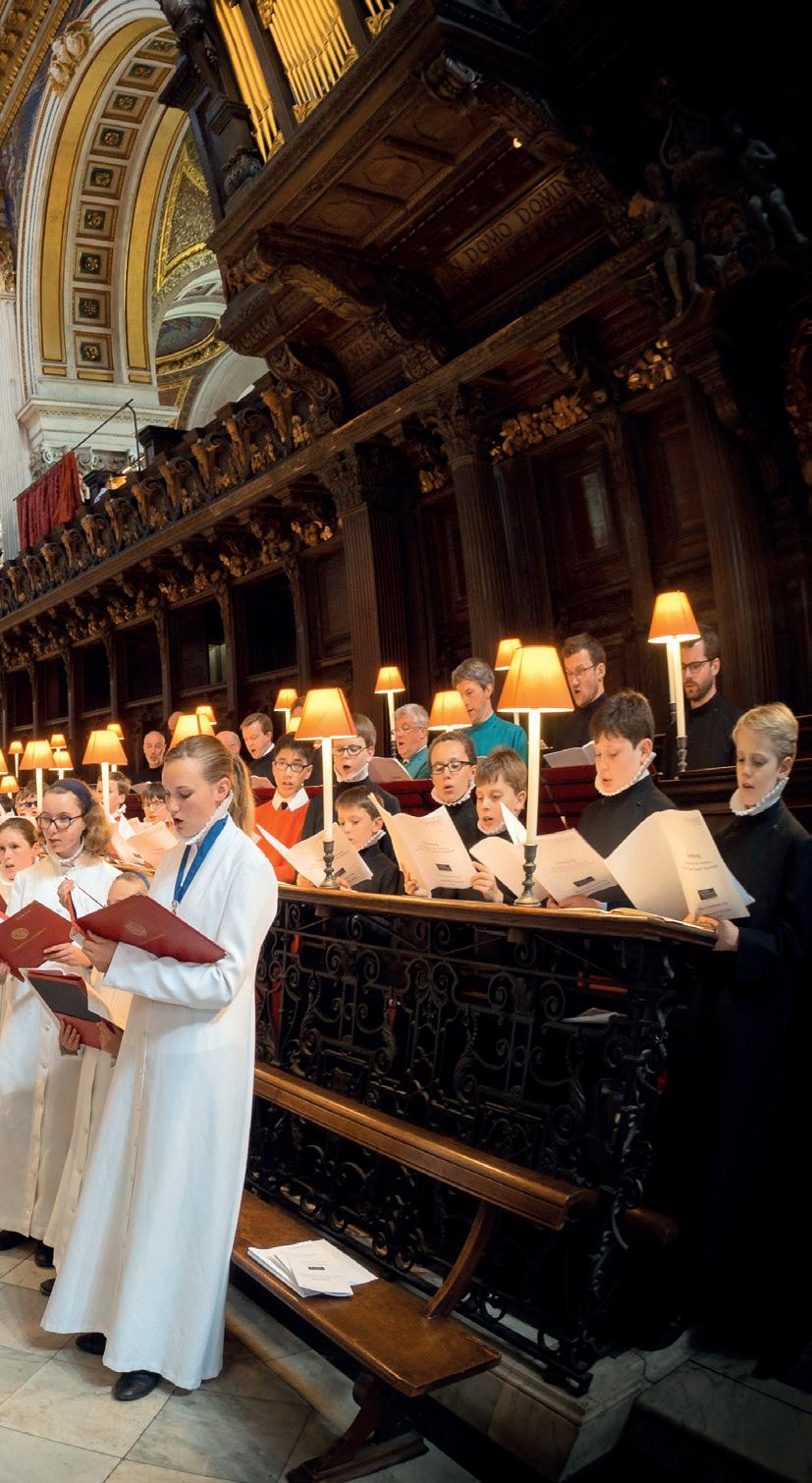
All photographs by Ash Mills
The Choir Schools’ Association (CSA) has much to celebrate and it is wonderful, looking back over its history, to note how much the organisation has grown, what it has achieved and the impact it has had, an impact which extends far beyond the reaches of the membership. The CSA has every reason to feel proud of the influence it exerts on young people, helping to forge a transformational experience in so many. It’s an experience that few will ever forget and for which many will be for ever grateful.
The CSA was established in response to a perceived threat to the existence of choir schools. It was the Revd W E Morgan of Westminster Abbey Choir School who, together with Mr C R Jelf of King’s College School and the Revd R H Couchman of St Paul’s Cathedral School, decided in 1918 that the time had come to be proactive, rather than await the unintended consequences of a new Education Act which they feared would impinge on, even destroy, our choral tradition. It would be nice to add that today proper forethought, planning and insight would never allow a repeat of such concerns amongst the CSA’s membership, and that the values and principles upon which our schools are based are much better understood and appreciated by legislators and politicians, but I suspect that the risks to CSA schools today are as great, if not greater, than they were in 1918.
In 1918 there were understandable and justifiable concerns from both politicians and educationalists about the effectiveness of educational reform in the UK – progress was simply not being made quickly enough to accommodate the needs of the country. One significant factor impeding this progress was the prevalence of child labour, and in response to this the MP Herbert Fisher, a member of Lloyd George’s coalition government, introduced an Education Act that raised the school leaving age to 14. Fisher’s Act, as it became known, included many other improvements to children’s lives, and also incorporated amendments to The Prevention of Cruelty to Children Act, 1904. Of particular note to the CSA’s founding heads would have been the inclusion within the amendments of the following specific restrictions: ‘the employment of boys under the age of fourteen years and of girls under the age of sixteen years for the purpose of singing, playing or performing, or being exhibited for profit’. Of course, choristers were paid for their choral duties, but fortunately these specific restrictions, whilst necessary to help improve the quality of state education, did not apply to choristers and therefore did not represent the threat that our founding heads feared. However, as a result of their unnecessary concerns, the meeting of minds and the sharing of ideas and experiences had been established, and the CSA was born!
Since 1918 there have been numerous other concerns that have occupied the thoughts and actions of the CSA. Some concerns have represented more significant threats than others, but rather than recite history I will point you in the direction of Richard White’s article on the website, ‘Some Key Events in CSA’s History’, which is well worth a read, as is Alan Mould’s book, The English Chorister, a History.
Last year I said: ‘If there are to be choir schools in another 100 years then we will need a CSA that continues to represent the interests and concerns of individual members, whilst also providing a unified front and a public voice on broader issues.’
There has been little over the last year that makes me feel these words were overly pessimistic. For those of us in the independent sector, there can be little doubt that we have few friends at the moment. Politicians of all shades seem hell bent on issuing ill-informed edicts based upon lazy stereotypes which purportedly seek to ensure that the independent sector does its bit to justify charitable status. In my more controversial moments, I cannot help feeling that ‘charitable status’ is a red herring, a stick with which to beat the sector, whilst the politicians’ real motive is to bully independent schools into helping make amends for the ill effects of successive government-imposed poorly thought-out initiatives on the state sector. These initiatives have long impaired the overall quality of state education, and undermined the efforts of hardworking teaching professionals.
The independent sector is an embarrassment to governments because its schools have the audacity to invest in and nurture a broad holistic education, not a narrow, results-driven curriculum, and in so doing these independent schools have highlighted the impact of a continuous stream of reforms imposed upon the state sector. We know that most state school headteachers and their staff value music and the creative arts as much as we do. They recognise the benefits of providing children with a broad range of opportunities, and fully appreciate the effects that such opportunities can have on children’s self-esteem. They know that music-making and singing have a multitude of positive effects on pupils and their learning. And yet, once again, we see the rug being pulled from under their feet so that the chances of state-educated pupils being introduced to an enriching, stimulating and fulfilling arts curriculum is constantly being diminished.
Instrumental music and choral singing should not be the preserve of the independent sector, any more than art or drama or sport should be.
When I was at school, and I went to what some might call a ‘bog standard’ comprehensive, school plays and orchestras were widespread, and pupils learning to play instruments was common. We know that this picture has significantly changed, and one has to ask whether there will be any such opportunities in state schools in the future. If there is not, there are no prizes for guessing who will be called upon to make amends. Current educational reforms (and I am talking about the Ebacc) and financial cuts in County Youth music provision are likely to have the same ill effects on music, and cause similar levels of polarity across the education sectors as the selling-off of school playing fields has had on competitive sport. The more state provision is cut, the greater the divide, and the louder the shouts from those doing the cutting, that independent schools must do more to level the playing field. Of course independent schools have a duty to support social mobility, and that is why many of them were established in the first place, but that duty should not be viewed as some form of compensatory response to the actions of government.
All schools in the CSA are engaged in outreach activities, so we see first hand how much children love having the opportunity to engage in music. In Hereford for example, a Christmas carol service is organised for hundreds of junior school pupils from across the county. Our Director of Music goes out to numerous schools and supports the staff in preparing the children to sing in this service. And do you know what the pupils all want to sing the most, the highlight of the carol

service? The Hallelujah Chorus. It is fantastic to see the concentration and focus on the faces of some 400 primary school pupils as they belt out Handel’s masterpiece. They love it, and I am proud to be part of this organisation that up and down the country is working hard to bring the joy of singing choral music to young people.
The CSA has a job to do: we have to support and strengthen those struggling to keep music alive in the hearts and minds of young people. We are expertly placed to do so, with hundreds of years of choral tradition behind us. If we do not rise to this challenge then we will all suffer as a result, and this is going to be a significant challenge in the coming years. Government funding comes and goes, as we saw with the Sing Up! initiative, so it is up to us, and others who feel the same way as we do, to keep the flame alight.
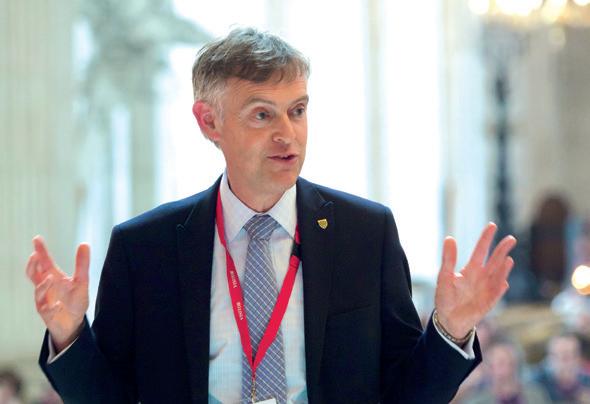
Another significant threat that many of us are going to have to face in the not too distant future is how to deal with chorister funding. Perhaps this is not such a problem for our state school members, but as we know, the common model today is for choral foundations to support the education of choristers in fee-paying choir schools. The CSA is proud to be able to help administer, and actively support, the funding of those choristers in financial need. However, with school fees rising year on year, and congregational numbers falling in the same way, and with the ever-increasing costs that cathedrals, chapels and churches face, I cannot see how they are going to be able to continue to financially support choristers. Funding models at many foundations, for example, are currently under review, as previous models have now become unsustainable. Clearly this has been a major problem in the past, as the chapter on ‘Threats and Support’ in Alan Mould’s book describes, but it seems inevitable that we are about to enter an unwelcome renaissance of this particular concern.

There will be other threats too, and we must continue to be vigilant about ensuring that the safeguarding of our choristers operates at the highest level and consistently across school, cathedral, church and chapel. I have no definitive answers, but I make the point because whilst today is about celebration, it would be remiss not to acknowledge the challenges facing us today; in the near future these are going to be every bit as significant as those prevalent in 1918.
But there is much to celebrate. Heads of schools in the CSA have the privilege of leading schools that educate the choristers of world-renowned choirs. Our schools are often located in some of the most historic and beautiful cities in the country. We support a choral tradition that extends back some 1400 years, and choristers, to quote from Alan Mould’s book, ‘are treasured as a unique part of our religious and cultural heritage, unmatched anywhere in the world’. The historic gravitas that cathedral, church and chapel foundations impose upon our schools makes them special places to teach and learn. A sense of history, purpose, compassion and belief all help to shape and add to the ethos of our schools. The aesthetic of the surroundings, and the importance and significance of the cathedral or church to the wider community also imprints upon the school’s character. We all know that cathedrals, churches and chapels can provide space and time as useful antidotes to modernity, and we know also that they are valuable allies to developing spirituality and mindfulness.
So, congratulations to the CSA, and to all it has achieved over the last 100 years to uphold the great tradition, and national treasure, of choral music.
Educated in the state sector, Paul Smith read Zoology at Manchester University before carrying out research on the behavioural ecology of small mammals at King’s College London – he’s an expert on the black rat! He taught at Rugby, King Edward’s School Birmingham, Haileybury School and Portsmouth Grammar School before succeeding Dr Howard Tomlinson as headmaster of Hereford Cathedral School. His tenure as CSA Chairman ended earlier this year in favour of Neil Chippington, headmaster of St John’s Choir School in Cambridge. Paul remains as Vice Chairman.
Born in Hereford in 1878, Percy Clarke Hull (or PC, as he became universally known) is the only ex-chorister of the cathedral apart from John Bull to have become Organist. He joined the choir in 1889 (the same year as G R Sinclair became Organist), and later became an articled pupil to Sinclair. PC was appointed Assistant Organist in 1896. In those days the post was a private arrangement between the organist and someone he paid out of his own stipend to deputise and assist. The Hereford chapter appointed PC a sub-canon in 1904 – a post they had revived in 1894 to allow for the employment of lay clerks – and this meant that he was entitled to a stipend from the College of Vicars Choral. The Vicars Choral were not enamoured of this arrangement, but it did relieve the organist of an appreciable financial burden. PC and Sinclair worked together very fruitfully until the summer of 1914, when PC embarked on a holiday in Germany. The two were never to see each other again.
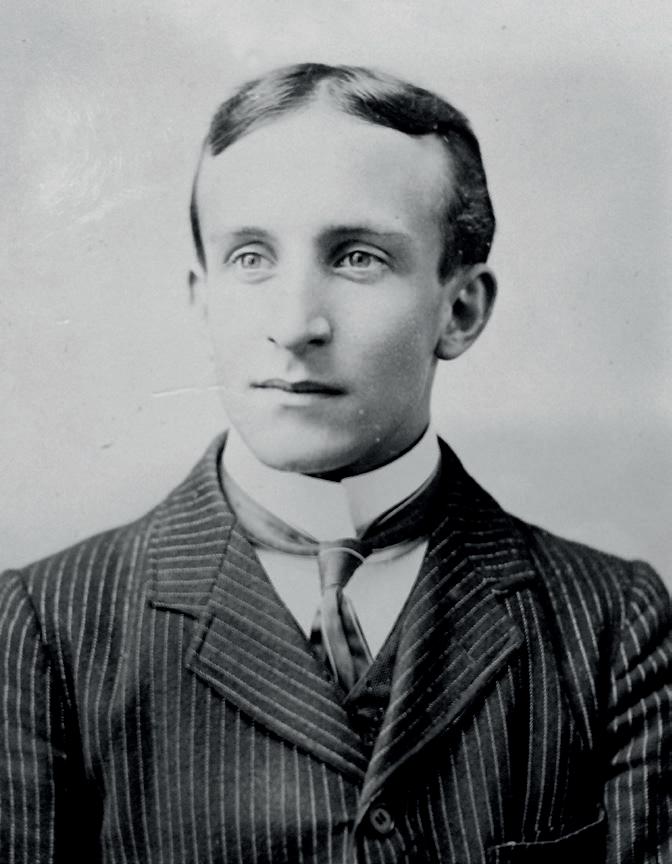
The story of PC’s ill-fated holiday and eventual internment is told in the two pocket diaries that he kept. The entries are necessarily brief, and here and there the pencil script is smudged or PC’s writing is hard to decipher. Nevertheless they form a fascinating record of how he fared in 1914 and 1915. If diaries were kept for the remainder of the Great War, they are lost. The two extant diaries are now part of the Liddle Collection in Leeds University Library, a collection that documents and preserves first-hand accounts of individuals who experienced the two World Wars.

PC set off for Germany on the same day that the Choir Holiday began, Monday 27 July. Sailing overnight to Flushing, he took a train to Freiburg, arriving there on the evening of Tuesday 28 July. This was exactly a month after the assassination of Archduke Ferdinand in Sarajevo. PC, always a man to pay close attention to detail, had taken advice from the Foreign Office before setting off on his planned holiday. Officials had assured him that he had nothing to worry about, but within
days of arriving in Freiburg he records: ‘Great excitement about war’. That same day, 31 July, he writes, ‘Dined at Schwarzwald with Giles’. But Giles – whoever he was – was clearly more than anxious because the next day we read that he ‘went to see Giles at 9am and found they had gone, leaving car behind’. On the way back from an afternoon walk that day he ‘heard that war had been declared with Russia’.
The situation developed quickly. Hull says that on 2 August petrol was held up and telephone and telegraph were no longer available. It was a beautiful day, but the police came to the hotel and seized all the panoramic cards. On 3 August he was stopped by a soldier while returning from an outing and asked for his passport, being told that he ‘looked interesting’. On the following day England declared war, and the day after that he moved to Baden Baden, arriving at his hotel there ‘after much excitement’. He fell in with the Revd F Bullock-Webster, the chaplain at the English church, and this seems to have helped him through a difficult situation: British, American and Canadian money was no longer being accepted anywhere. PC became involved with the English church, playing for services and conducting choir practices; on 9 August he gave a short recital after the evening service.
Life in Baden Baden settled into a pattern. PC lived at the Stadt-Baden Hotel, went for regular walks with other British detainees (often climbing to the old castle above the town), and paid regular visits to the baths. He also acquired a couple of young ladies as piano pupils – the Misses Butler and
Gaymuller – and seems to have been more than assiduous in giving them lessons. Playing for services and running the choir continued. Meanwhile, regulations tightened considerably: all letters had to be written in German and examined at the Post Office; post could only be collected between 10am and 12pm each day; it was forbidden to meet in crowds, or ride bicycles or motorcycles; a 9pm curfew was imposed. PC seems to have attempted to obtain an American passport, meeting the US Consul at the English church for this purpose on 11 August. It is not mentioned by him again, and clearly the attempt failed – the first of several to create some loophole to get himself home.

One cannot help but feel an air of resignation and loss of hope. The Americans – those with passports – all left on a special train a week after his attempt to join their number.
‘Bad toe!’ he notes on 21 August 21, ‘Not much walking’. As the autumn wears on, the diary entries become shorter and shorter, and whole days are left blank. On Sunday 1 October he wrote, ‘Played last service in church’. There is no record of him playing another one before his return to Hereford over four years later.
Within a week, he and the other British detainees were told to pack one bag, and taken to an ad hoc holding facility of some basic sort at Restatt. ‘Escorted to prison by soldiers,’ he writes. ‘Had beastly soup, no bread, then to bed at 7. Two hours
sleep! Very damp room about 16 yards long for 35 men.’ Food and health become major topics of the diary, and we gather that both affected him badly, constipation and stomach troubles being widely experienced by the detainees, and chest infections too. On Friday 20 September he noted: ‘Had a chat with Morrison-Cleater, consul at Mannheim; within 10 minutes he was carried out and died in an hour.’ With what German money they had they managed to buy coffee and sausages and other supplies from the gaoler’s wife.
Things changed on 28 October, ultimately for the better, when they packed their bags and were taken by train to Spandau. ‘Awful confusion! Had to walk and carry baggage over 1½ miles.’ That walk took him and the others to the Ruhleben Camp, which was to be home until almost the end of the war. The camp was originally a harness racing track north of the Berlin-Hamburg railway line laid out a few years previously. The camp detainees included male citizens of the Allied Powers living, studying, working or holidaying in Germany at the outbreak of World War I; there were between 4,000 and 5,500 prisoners at different times, most of them British. Quarters in the stable blocks were cramped; they averaged 27 stalls, each housing six men; the stable block lofts each housed about 200 men. PC was in the loft of Block (or Barrack) 8.
The German authorities adhered to the Geneva Convention and allowed the camp detainees to administer their own
internal affairs. Gradually, a mini-society evolved in the camp. There were roads named after London streets, a horticultural association, a cricket club and several football teams. Letters, books, sports equipment and a printing press were all allowed into the camp and the detainees organised their own police force, magazine (In Ruhleben Camp), library and postal service. The latter was handling over 6,000 pieces of mail a month when the German authorities closed it down in April 1916. In addition, a number of independent businesses, including a casino, also developed within the camp.
A group PC calls ‘the old men’ (anyone of 60 or above) was sent home at an early stage, and other groups angled for special treatment. One possible route home was to show that you were ordained, or in religious orders of some kind. This was an approach tried on PC’s behalf by friends in Hereford, at his instigation. Dean Leigh wrote to state that PC was a sub-canon of the cathedral, in the hope that this would be some sort of evidence of religious orders. He pressed the case through British and American channels. It was a line worth trying, even if it stretched the truth to breaking point. It did not work. On 5 April 1915 PC records: ‘Called to Room 11 and given document from Dean. Told officially my petition was refused.’ On 31 July, in an entry marked with a big star at its beginning and ending, he writes: ‘Read official letter from English government that nothing at present could be done about release.’ He was in for the long haul.
Like Sinclair, and many others at Hereford Cathedral in those days, including the dean, Hull was a Freemason. From Ruhleben he brought to the notice of the Grand Lodge the privations and sufferings of Freemasons interned at Ruhleben. A large sum of money was raised for their assistance. The Ruhleben Freemasons were more than appreciative of PC’s efforts on their behalf, and he was presented with a glowing testimonial by them, a copy of which he sent home to his

mother in Hereford. (In later years he was appointed Grand Organist of England.)
There was a flourishing musical life in the camp, and the magazine provides reports of numerous concerts and other musical activity. The strange thing is, so far as I’ve been able to research it, PC is not mentioned as involved in any of that. The same goes for his diaries, as far as they extend. There is no evidence of his participation in any musical activity whatsoever, and I found only one mention of attendance at a concert (with his remark that so-and-so was ‘an appalling accompanist’).
Several notable musicians were interned in the camp, some of them rounded up at Bayreuth. One was Edgar Bainton, whose anthem And I saw a new heaven is still regularly performed. In Ruhleben he was put in charge of all the musical activity, and the magazine features a cartoon of him conducting. In later years he became a great force in the developing musical life of Australia. Ernest MacMillan was there, later Canada’s only musical knight, and his contributions to the development of music in that country were vigorous and varied. MacMillan transcribed various pieces of music from memory with the help of four other musicians, including Benjamin Dale. MacMillan also gave lectures on each of Beethoven’s symphonies which were followed by piano duet performances played by him and Dale. Also in the camp was Arthur Benjamin (of Larry Adler harmonica concerto fame), later professor of piano at the Royal College of Music, and a composer and conductor in Canada. The detainees presented Trial by Jury, The Pirates of Penzance, The Yeomen of the Guard and The Gondoliers, all with full costumes and scenery.
Perhaps PC’s chronic health problems (his diaries give evidence of internal troubles from the moment of his arrest, and he was moved to a sanatorium in Holland in the spring of 1918) restricted his ability to get much involved. People who
remember him speak of his energy and ‘bounce’, so something must have been affecting him; perhaps he suffered a period of depression in his captivity. What we do know is that at his first Hereford Three Choirs Festival in 1921, works by Edgar Bainton and Benjamin Dale were performed, and also one by Frederick Keel, another Ruhleben internee. So it cannot be that he didn’t get on with his fellow musical prisoners.
The final page of his diary begins on Saturday 30 October 1915: ‘I feel rotten!’. Sunday 31, ‘In bed all day…’. Monday November 1 November, ‘Up at 11.30!’. The final entry is for Sunday 7 November 1915, after a week when he recorded the release of a number of others, but not himself.
G R Sinclair died suddenly in Birmingham on 7 February 1917, aged 53, after conducting a rehearsal of the Festival Chorus. The cathedral chapter’s initial view was that there should be an open competition to succeed him, and that view was only broken down over time under pressure from Elgar and others who thought that this was unjust to PC. Elgar wrote to PC in Holland in June 1918 to say: ‘We will welcome you home with enthusiasm and I trust the post of Organist in your own cathedral will be yours. I was only too glad to do what I could to further your claims…’. He believed that it was what Sinclair would have wanted.
Percy Hull was appointed Organist of Hereford Cathedral on Armistice Day, 11 November 1918, his wartime captivity finally at an end.
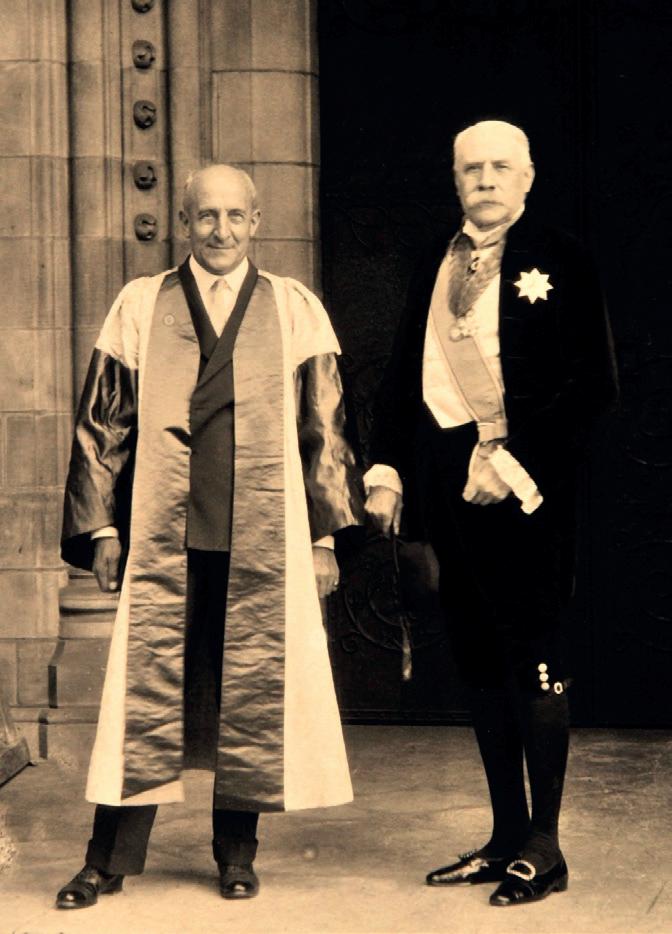
The Friends of Cathedral Music is looking for the following honorary officers:
• SECRETARY
• PRESS & PUBLIC RELATIONS MANAGER
A full job description for each post is available from Roger Bishton, the current Secretary, at secretary@fcm.org.uk
Applications should be sent to the Chairman, Peter Allwood, at chairman@fcm.org.uk by 31 December 2018
Ideally, the successful applicants will have experience of working in a charity or the arts, and must have an interest in sacred choral music. Please contact the Chairman if you would like an informal chat about either post.
The Three Choirs Festival at Hereford Cathedral this year ended on 4 August with a rousing performance of Brahms’s German Requiem dedicated to the memory of Donald Hunt, who died that afternoon and much of whose life had been intertwined with the festival, as chorister, conductor and director.
A wartime Gloucester chorister, Donald Frederick Hunt served as assistant to his mentor, Dr Herbert Sumsion, at Gloucester, until his appointment to St John’s, Torquay, in 1954. The move to Leeds Parish Church came in 1957, with a return to his more westerly roots as Master of the Choristers and Organist of Worcester Cathedral in 1975.
Additional to his focus as one of Britain’s leading church musicians, Dr Hunt had other substantial gifts — not least conducting, composing, speaking, and writing. He cultivated artistic and personal friendships with leading Continental musicians in Scandinavia, Germany and France; of those from the latter, he was particularly associated with Pierre Villette and Jean Langlais, both of whom were invited to Worcester: Villette to hear his choral music and Langlais to reopen the Worcester organ in 1978 after restoration.
In 1996 Hunt told the Church Times about how he became a musician at the age of 12 almost by accident. ‘One day Sumsion failed to appear for [choir] practice,’ he recalled. ‘We waited for almost half an hour, and finally the head chorister, a violinist rather than a keyboard player, asked me if I’d take the practice. So I launched in.’
Sumsion arrived a few minutes later, but stood outside the door, listening. Soon he had persuaded Donald and his parents that, rather than study medicine as had been the plan, the boy should be articled to him. ‘It amounted virtually to a four-year apprenticeship, progressing from voluntary to psalms to anthems,’ said Hunt.
When Hunt was summoned for National Service with the Royal Army Medical Corps, Sumsion was able to obtain a posting for him to Gloucester just before the city hosted the 1950 Three Choirs Festival. Hunt was charged with preparing the chorus for two important premieres, Howells’s Hymnus Paradisi and Finzi’s Intimations of Immortality
Hunt had long hoped to become organist of Gloucester, but when a vacancy occurred he was disappointed to be rejected by the Dean, who would only consider a graduate of Oxford or Cambridge. His appointment at Worcester Cathedral in 1975 brought with it triennial responsibility for the Three Choirs, the oldest festival in Europe. His first full iteration, in 1978, displayed his enthusiasm for French music with performances of works by Berlioz, Debussy and Messiaen.
An imaginative and visionary director of eight of these festivals, Hunt enjoyed a particularly fruitful partnership with John Sanders at Gloucester and Roy Massey at Hereford. Appointments at the Elgar Society and the Elgar Foundation
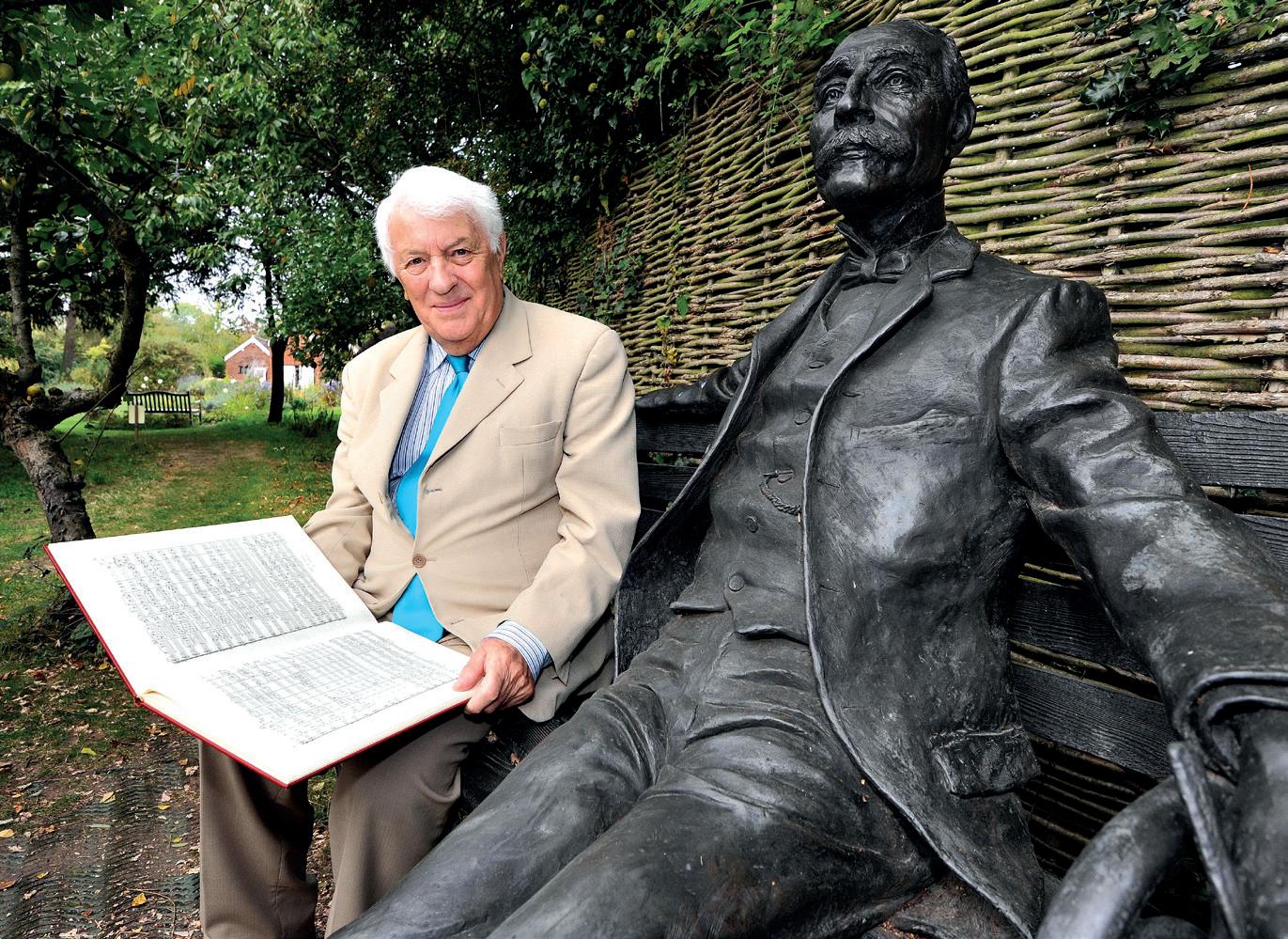
reflected an absorbing and lifelong interest in Elgar’s music: a couple of decades into ‘retirement’, in 2014, he emerged to universal acclaim as editor of the entirety of the part-songs for Novello’s Elgar complete edition and, only last year, as the editor of 12 of Elgar’s sacred pieces from Cramer Music with a foreword by the Most Revd Bernard Longley, Archbishop of Birmingham. He directed his own Elgar Chorale and was principal of the Elgar School of Music.
with their two sons and two daughters, were always the most gracious of Worcester festival hosts, as also at the Elgar 150thanniversary festival in 2007. At these, Donald’s administrative acumen and personal stamina were much in evidence.
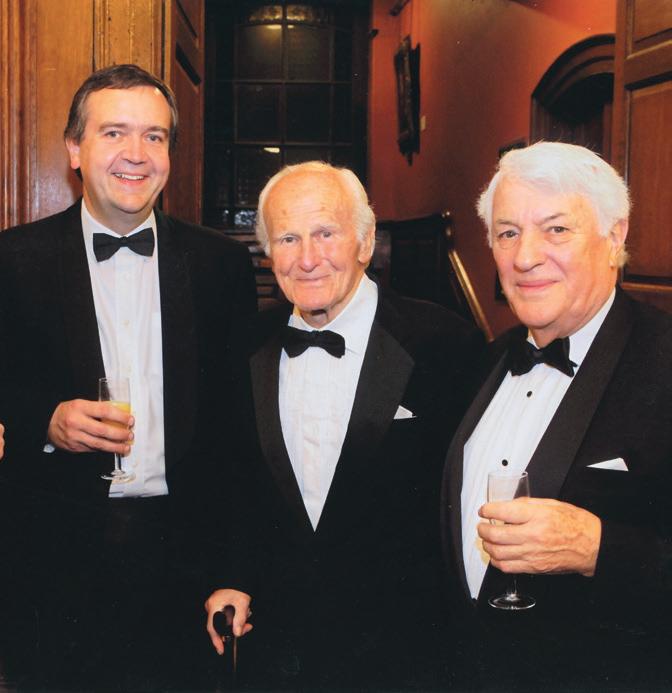
Away from music Donald tended the family’s glorious garden in Worcester or immersed himself in poetry. He had a great skill with words, was a fine public speaker and wrote his own volume of reminiscence and recollection, Festival Memories (1996), as well as Elgar and the Three Choirs Festival (1999).
Dr Roy Massey adds: At Worcester, Donald maintained a splendid standard in the daily choral services and continued to develop the work of the excellent Worcester Festival Choral Society.
He also exerted enormous influence on the development of the Three Choirs Festival at this period, directing eight Worcester festivals with conspicuous success and bringing much imagination and expertise to the deliberations of the triumvirate of organists at the head of the enterprise.
His performances of the music of Elgar were unusually authoritative, as was his advocacy of music by French composers, which was another great love of his. The chorus loved him, the orchestras respected him, and his boy choristers would have lain down and died for him.
A veteran of innumerable choral broadcasts and recordings, Hunt also recorded fine interpretations of Elgar’s organ oeuvre, music by Sumsion, and earlier solo LPs from the Town Hall and Parish Church in Leeds. Honours came in the form of a Leeds Doctorate of Music in 1975 and an MA from the University of Worcester in 2010. He was appointed OBE in 1993. In the educational field, he held posts at Leeds Girls’ High School and Leeds College of Music.
Significant community involvement featured in each appointment. Hunt founded the Gloucester St Cecilia Singers, still a flourishing group directed by successive Gloucester assistant organists. At Leeds, he took over major responsibilities with the Leeds Festival Chorus and Leeds Philharmonic Society. His long service to Halifax Choral Society (1957-88), in succession to his immediate LPC precursor, Dr Melville Cook, was greatly valued, and he involved himself in much other choral endeavour both within the county and farther afield.
Composing began in earnest in Leeds and flourished thereafter; Hymnus Paschalis from 1995 was written for a concert by the Worcester Cathedral choir when two other choirs, from Breda and Haarlem, joined with Worcester (this was repeated for Donald’s final Worcester Festival in 1996).
Inspired by an ancient chant in a hymnal from the Stanbrook nuns, Hymnus is a glorious setting of scenes from the Easter story enhanced by historic texts and melodies, exquisitely arranged for voices and organ or small orchestra. Hunt’s other church music, which includes settings of the Evening Canticles (1972), a Missa Brevis (1973) and several joyful works for Christmastide, was rich and varied.
Donald’s wife of more than 60 years, Jo, a valued veteran of his adult choral groups from the Gloucester days, together
Besides composing and writing books, Hunt also avidly followed his favourite football team (Leeds United), had been a regular at the Worcester Warriors’ rugby league games and was a life member of Worcestershire County Cricket Club. On the last day of his life, just before the start of Brahms’s German Requiem, he was following England’s fortunes in the Test match against India.
Donald Hunt was a great friend, a fine musician, and a muchloved man.
With thanks to Simon Lindley, Roy Massey, and others.
Away from music Donald tended the family’s glorious garden in Worcester or immersed himself in poetry. He had a great skill with words, was a fine public speaker and wrote his own volume of reminiscence and recollection, Festival Memories (1996), as well as Elgar and the Three Choirs Festival (1999).Adrian Lucas, David Willcocks and Donald Hunt
Rochester Cathedral Choir
Dirs: Scott Farrell, Claire Innes-Hopkins
Organ: James Norrey
Stainer I saw the Lord; Ireland Greater love; Wilby If ye love me; Bach Jesu, joy of man’s desiring; Wesley Blessed be the God and Father; Grieg Ave maris stella; Haydn Insanae et vanae curae; Rheinberger Abendlied; Elgar The Spirit of the Lord; arr Donald Webster Hilariter; Mendelssohn Ave Maria; Goodall The Lord is my shepherd; Mawby Ave verum corpus; Moore Through the day thy love has spared us; Stopford Bring us, O Lord God; Handel Hallelujah.
REGENT REGCD 512 TT 79:35
The subtitle of this disc (Favourite anthems from Rochester Cathedral) precisely sums up what it has to offer us – music ranging from Stainer’s I saw the Lord to Hallelujah from Handel’s Messiah via Grieg’s Ave maris stella and Howard Goodall’s The Lord is my shepherd. Anyone wanting an introduction to ‘traditional’ music written for the Christian church during the last 300 years need look no further. Featuring both the boys’ and girls’ choirs separately and together with the lay clerks we can imagine ourselves in the cathedral at Evensong participating in worship which has been offered for centuries even if ‘there are [only] one or two present in’ the Lord’s name. There will be many alternative performances of these pieces available but here they all are on one disc to inspire the next generation of choristers to take up the job!
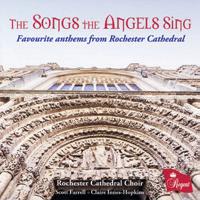 Nicholas Kerrison
Nicholas Kerrison
Tewkesbury Abbey Schola Cantorum
Dir: Simon Bell
Organ: Carleton Etherington Dupré Ave Maria; Dove Missa brevis; Poulenc Salve Regina; Biebl Ave Maria; Radcliffe Preces and Responses; Michael Peterson Psalm 132; Ives M&N Edington Service; Moore Emmanuel; Stanford Te Deum in C; Peeters Toccata, Fugue & Hymne sur ‘Ave maris stella’.
REGENT REGCD 510
Recent recordings from the Schola Cantorum of Tewkesbury Abbey have been carefully themed, and this disc is no exception, featuring music likely to have been performed in a service for the Assumption of the Blessed Virgin Mary (to whom the Abbey is dedicated). Dupré’s Ave Maria serves as an introit. It is the third of four rarely sung motets and the only one of the set written for upper voices. It is beautifully performed, and enhanced by an equal vibrato amongst the boys’ voices in superbly shaped phrases. The quality of the treble line is similarly demonstrated in Poulenc’s Salve Regina. Jonathan Dove’s Missa Brevis is given a most convincing
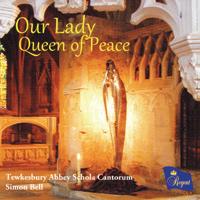
performance, especially in the Gloria with its jagged and rhythmic writing. There are occasions when the downward scalic writing in the highly ethereal Kyrie reveals a slight lack of treble support, but conversely the ascending legato line in the Sanctus is well controlled, floating effectively against the busy writing in the lower parts.
The inclusion of the well-rehearsed Radcliffe Responses within the music for Evensong is especially welcome, as is the fluid interpretation of Psalm 132, set to a chant by Michael Peterson; this serves as a tribute to the person who founded the Abbey choir in 1973.
The choir, and especially the trebles, are capable of a huge dynamic range that is well demonstrated in the contrasts within Ives’s Edington Service. Philip Moore’s highly effective yet rarely performed Emmanuel is a welcome addition. Requiring two choirs, SATB and SSA, it seems appropriate that the girls from Dean Close School form the latter group.
The Stanford Te Deum, although a fine piece, does feel a little out of place within a disc of mostly contemporary writing. Moreover, it is only in this piece that the singing feels over-robust.
As ever, Carlton Etherington’s accompaniments are splendid and enhance a disc well worth a place on the shelf.
David ThornePaweł Łukaszewski
Tenebrae
Dir: Nigel Short Cantate Domino; Shakespeare sonnets; Daylight declines; Responsoria Tenebrae; Lamentationes; Beati.
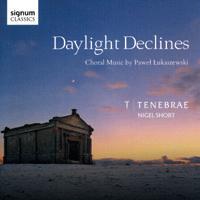
SIGCD521 TT 69:45
Paweł Łukaszewski is 50 years of age, teaches at the Chopin Institute in Warsaw, and has been described as composing church music in ‘an aggressively anti-modern style’. Antimodern his style may be, but to your reviewer it seems more than a little influenced by the contemporary and fashionable soundworld of Gorecki, Pärt and co., unkindly stigmatised by some as slow and boring. Apart from the exultant, highly rhythmic Cantate Domino with which this CD’s programme begins, the music is indeed for the most part slow; but certain words in his texts draw forth flashes of drama and colour, proof of the composer’s impressive command of choral sonority. This inability to see the wood for the verbal trees suits the Tenebrae Responsories well, but it rather distorts the Shakespeare settings and imparts an overblown quality to the Lamentations, where one was left longing for the restraint of Tallis and even dear old homely Bairstow. Daylight Declines –from which this CD takes its name – is a refreshing contrast, a simple, sweet Evening Hymn. Sadly, the programme ends with a setting of the Beatitudes so subdued as to leave the
listener wondering whether there is any blessedness at all in being peacemakers, children of God, or anything else. Such reservations aside, I would strongly commend this as a CD of great interest, wonderfully well sung.
Timothy Storey
Londinium Chamber Choir
Dir: Andrew Griffiths
Warlock The Full Heart; Rawsthorne Four Seasonal Songs; Ireland The Hills; Bax I sing of a Maiden that is makeless; Mater ora filium; Bush Like rivers flowing; Lidice; Delius On Craig Ddu; Lutyens Verses of love; Moeran Songs of Springtime; Walton Where does the uttered music go; Ireland Twilight night.
SOMM CD0180 TT 75:26
I confess to not having a clue what the title of this disc meant until I started reading the notes inside! The George public house, adjacent to the old Queen’s Hall in Great Portland Street, was apparently a popular destination for many professional musicians, so much so that they were often late for rehearsals! Sir Henry Wood was frequently heard to complain about ‘that bloody Gluepot’, and the nickname has stuck. Amongst the musical elite gathering there in the middle of the last century were many, if not all, of the composers represented on this disc. Much of the music was new to me and therefore this debut album by Londinium, which I am sure is the first of many to come, was particularly interesting. Founded in 2005, one of the choir’s commitments is to perform music which may be seen as ‘unjustly neglected or rarely performed, particularly music from the 20th century’, and Londinium gives us here a real insight into an era of British music-making which is not often explored. Recorded in All Hallows Church, Gospel Oak, the choir is on fine form in tackling some challenging music which most definitely deserves greater exposure. I suspect that the two pieces by Arnold Bax are the most well known, but the pieces which particularly stand out for me are those by Delius and Lutyens. Nevertheless, all the music would be very useful additions to a good choir’s repertoire. This is an excellent first disc both for the quality of the singing and the ‘unjustly neglected’ repertoire it has revealed.
Nicholas KerrisonChoir of Westminster Abbey
Dir: James O’Donnell
Ninefold Kyrie; Alleluia Ora pro nobis; Hac clara die turma; Ave Maria, ancilla Trinitatis; Missa Videte miraculum.
HYPERION CD A68192 TT 62:40
This recording is an especial treat. So often these days music of this period, the early 16th century, is largely the preserve of the specialist chamber groups like Stile Antico and The Cardinall’s Musick. On this disc, however, it is performed by a liturgical choir of boys and men. It is wonderful to listen to the high treble parts being sung with such assurance by the Abbey boys. How one would love to time-travel to hear how their counterparts in the 16th century would have coped with this music.
Nicholas Ludford was associated with Westminster, working at St Stephen’s as verger and organist, and then at St Margaret’s, both as singer and organist. These two
establishments were devoted followers of the Blessed Virgin Mary, and offered a daily Lady Mass. The music on this CD gives the listener an excellent taste of the richness of the repertoire that honoured Mary.

The Abbey choir are on top form, the boys especially exhibiting remarkable stamina in sustaining the high tessitura of their music. There is admirable support too from the men of the choir, who provide a sonority that gloriously underpins the polyphony. James O’Donnell allows the music to flow most naturally, and is to be warmly applauded for preparing the choir so well for this project which, to this listener, is a triumph.
Roger Judd
Choir of Trinity College, Cambridge Orchestra of the Age of Enlightenment
Dir: Stephen Layton
Katherine Watson, Helen Charlston, Iestyn Davies, Gwilym Bowen, Neil Davies.
HYPERION CDA 68181/2 TT 107:43
This is simply glorious. Five top-class soloists, a crack orchestra, an extraordinarily brilliant choir, and a director who knows exactly how the piece should flow, and who clearly relishes the superb cast of singers and players he has around him. This is music-making of the very highest quality, and I neither need to, or will, say any more.
Roger JuddThe Choir of King’s College, Cambridge
Dir: Stephen Cleobury
Rorate coeli; Vigilate; Hodie beata Virgo Maria; Senex puerum portabat; Ne irascaris, Domine; Civitas sancti tui; Terra tremuit; Haec dies; Tollite portas; Ascendit Deus; Factus est repente; Non vos relinquam orphanos; O lux beata Trinitas; Laudibus in sanctis; Ave verum corpus; Sacerdotes Domini; Justorum animae; O quam gloriosum; Ave Maria.
KINGS KGS0024
For nearly nine decades Byrd and King’s have been inseparable. Byrd and his contemporaries were a mainstay of the repertoire introduced by Boris Ord in the 1930s and maintained by his successor David Willcocks, who even used ‘Byrd and his Contemporaries’ as the title and theme of an LP. His recordings of the Masses for three, four and five voices and the Great Service are legendary. It was of course anglicised and romanticised Byrd, sung in Latin as permitted by statute (it being assumed that a university congregation would understand Latin) but sung by a choir chiefly concerned with the Offices of Morning and Evening Prayer. The tradition is still most faithfully maintained by Dr Cleobury, but things are different nowadays, for The Cardinall’s Musick and others have taught us to like our Byrd neat, trim and brisk. One might observe that the performances under review are indeed neat and trim but perhaps too brisk, an approach well suited to bright and jubilant music such as Haec dies, but which leaves us longing for the music to be driven a little less hard; Rorate coeli could well have been allowed to unfold its majesty and joy at a slightly more relaxed pace. Penitential or devotional texts also needed more time and space. Despite such reservations, I would commend this CD for its ingeniously chosen

programme which takes us through the whole liturgical year, renewing our acquaintance with a number of old favourites and introducing us to music which we are glad to meet for the first time. As ever, I must salute the great skill of this wonderful choir.
Timothy StoreyThe MIN Ensemble
Treble: Aksel Rykkvin
Dir: Mark Bennett
Handel Concerto in F; Eternal source of light divine; Passacaille; What passion cannot music raise and quell; Alla caccia; Albinoni Vien con nuova orribil guerra; Ritter Ciaccona à 7; Rameau Ritournelle; Entrée d’Abaris; Tristes apprêts; Ballet figure and Air; Orage; Je ne sais quel ennui me presse; Chaconne.
SIGNUM SIGCD 26 TT 63:47
The Norwegian boy soprano Aksel recorded a disc of Baroque arias on the Signum label in 2016 with the Orchestra of the Age of Enlightenment. His work continued with the trumpeter Mark Bennett, the result of which was an expansion of projects for voice and trumpet. After very little negotiation a recording was planned in 2017 with the MIN Ensemble, a Norwegian group using both Baroque and modern instruments. This disc mostly features this ensemble with Mark Bennett and only six tracks are devoted to the talent of Aksel, whose vocal maturity, superb tuning and breath control are quite outstanding. Especially inspiring is his interpretation of Handel’s Eternal Source of Light Divine and Albinoni’s Vien con nueva orbil guerra, both of which serve as a legacy to his soprano voice which lasted only six weeks after the recording session in July 2017!
 David Thorne
David Thorne

Tenebrae & BBC SO
Dir: Nigel Short Stravinsky Symphony of Psalms; Schoenberg Friede auf Erden; Bernstein Chichester Psalms; Zemlinsky Psalm 23.
SIGNUM SIGCD492 TT 60:28
Four 20th-century works are presented here, each with its own challenge, but Tenebrae and the BBC Symphony Orchestra of course rise to the difficulties they present. The Symphony of Psalms (or at least the last movement of it) has been a set work for an A Level Music exam board for some years and every student will know that Stravinsky is never one to do things conventionally – no violins or clarinets and certainly no organ (“the thing never breathes”!), even if there is mention of the organ in Psalm 150. The pungent and biting sounds of the oboes and bassoons get the attention of the listener from the first few notes, and the BBC SO wind and brass players are certainly up to the mark in this recording. The Tenebrae singers are excellent and although I initially found the recording very close (made in the Maida Vale studio) the balance is first rate. For Schoenberg’s Friede auf Erden the recording location is St Augustine’s Church in Kilburn, and the acoustic of this magnificent building suits the intense a cappella piece much better than a recording studio. The piece is perhaps the most challenging of the whole disc. Undeterred by the difficulties, Tenebrae produce a performance of remarkable assurance
and intense emotion. Webern asked Schoenberg in 1928: “Do you know how beautiful it is? Unprecedented! What a sound!” What a sound indeed in this recording!
It’s back to Maida Vale for the remaining works on this disc. The incisive rhythms in the first movement of The Chichester Psalms are exhilarating and this rhythmic charge continues in the ‘Why do the nations’ section of the second movement. The percussion playing here is superbly crisp, though again some may wish for a less close recording. David Allsopp is the countertenor, singing with an excellent sense of line. This sense of line is also a feature of the performance of the beautiful melody of the last movement, the ending of which is stunning. I confess to not knowing Zemlinsky’s Psalm 23 prior to listening to this new release but I will certainly be listening to it again. The performance rounds off an excellent disc full of admirable singing and playing.
Nicholas KerrisonGabrieli Consort
Dir: Paul McCreesh
Leighton Of a rose is all my song; Tallis Videte miraculum; Warlock As dew in Aprylle; White Magnificat; MacMillan Ave maris stella; Sheppard Ave maris stella; Park Ave maris stella; Wylkynson Salve Regina; Howells Salve Regina; Lane There is no rose; Martin A Rose Magnificat.
WINGED LION/HYPERION SIGCD536 TT 77:52
Another winner from the Gabrielis. The programming is superb, with an ear-catching mix of ancient and modern. The singing, as one has grown to expect with this group, is flawless. Do they ever sing out of tune? Or is the ensemble ever less than tight? These are the slightly irreverent thoughts I have occasionally.
The old encompasses Thomas Tallis, Robert White, John Sheppard and Robert Wylkynson, and each displays a quite exceptional grasp of choral scoring; the Salve Regina by Wylkynson especially being totally brilliant.
The not-so-modern takes in Herbert Howells, Kenneth Leighton and Peter Warlock, and the up-to-date Owain Park, James MacMillan, Jonathan Lane and the composer of the CD title piece, Mathew Martin. Parks’s setting of Ave Maris Stella is a beautiful gem. This CD is thoroughly to be recommended.
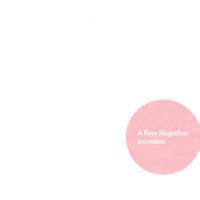 Roger Judd
Roger Judd
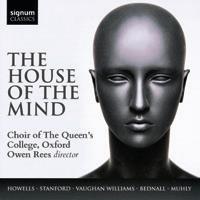
Dir: Owen Rees
Howells Behold, O God our defender; A hymn for St Cecilia; God be in my head; The house of the mind; Like as the hart; Regina caeli; Salve regina; Bednall O Lord, I am not haughty; Alma redemptoris mater; Ave regina caelorum; Vaughan Williams The souls of the righteous; Stanford Lighten our darkness; Muhly Like as the hart; John Scott Behold, O God our defender; Hadley My beloved spake.
SIGNUM SIGCD491 TT 66:01
The first piece on this disc was written for the coronation of our present Queen in 1953 and is one of a number of the lesser-known works by Herbert Howells. We so often hear Like as the hart or O pray for the peace of Jerusalem along with the numerous settings of the evening canticles but here we
have some rarities, and very welcome they are. The choir of Queen’s College Oxford under the direction of Owen Rees gives us seven works by Howells alongside music by composers who taught or influenced him (Stanford, Vaughan Williams), or worked alongside him (Hadley), and others who have in themselves been influenced by his music – John Scott’s setting of Behold, O God our defender and Nico Muhly’s of Like as the hart provide interesting similarities and homage but also striking contrasts, particularly in Muhly’s setting with its solo violin and percussion. It was in 1916 that Howells wrote within one week four Latin motets for Richard Terry’s choir at Westminster Cathedral. Two of these survive – Salve Regina and Regina caeli – which show Howells’ ability in using the reverberant acoustics of Westminster Cathedral, a feature of his style which would be exploited in the canticle settings for places such King’s College Cambridge, Gloucester Cathedral and St Paul’s Cathedral later in his life. One hundred years later Owen Rees asked David Bednall to compose new settings of the other two Marian texts set by Howells and these, along with all the other pieces on this disc, are beautifully sung by the college choir with sensitive work by the two organists. This is a welcome disc of some lesser-known repertoire.
Nicholas KerrisonThe Choir of Keble College, Oxford
Instruments of Time & Truth
Dir: Matthew Martin
Hayes Overture: The Passions; Chorus: Thy wide extended pow’r; O worship the Lord; Psalm 23: Lo! My shepherd’s hand divine; Lord, how long wilt thou be angry; Organ Concerto in G; Lord, thou hast been our refuge; Psalm 120: To God I cry’d with anguish stung; O be joyful in God, all ye lands; Sinfonia: The Fall of Jericho; Chorus: Whom then does Jericho deride; The Hundredth Psalm; William Walond: Voluntary in G. CRD 3534 TT 79:12
This recording was a bit of a revelation. Who knew that William Hayes was such an interesting composer? At least, he comes across as such with these really sparkling performances. The choir of Keble College (stiffened by a sprinkling of professionals) is on excellent form, and at times they display a quite brilliant virtuosity. With such persuasive performances as these one can imagine Hayes’s star will rise. The Instruments of Time & Truth is made up of many well-known names in the period instrument scene, and they contribute greatly to the success of this disc. The principal keyboard player is one Edward Higginbottom, putting retirement to good use! Keble’s director of music, Matthew Martin, as well as directing these forces with such distinction, is also the nimble-fingered soloist in Hayes’s organ concerto.
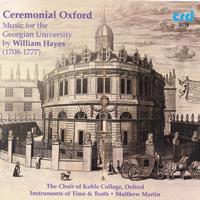
A terrific CD, and most warmly recommended.

The Sixteen
Dir: Harry Christophers
Settings by Alissa Firsova, Tõnu Kõrvits, Claudio Casciolini, Matthew Martin, Domenico Scarlatti, and plainsong CORO COR16127
There is a hidden agenda to this CD, which is issued as part of a project to restore the ancient Latin texts of the Roman Church to present-day devotional use. Stabat mater dolorosa is a poem of 20 three-line stanzas (metre 8.8.7) which meditates on Our Lady’s sorrow at the foot of the cross. On account of its length it has rarely been set complete; and of the settings sung in this programme only the traditional plainchant presents it in full. Three newly-commissioned settings are included; Alissa Firsova and Tõnu Kõrvits lay claim to the lineage and influence of Russia and Estonia respectively, and it is therefore hardly surprising that the new settings commissioned from them for this recording are in the dense, tonally static and slow-paced style currently so fashionable. A few words go a long way in such music, so not many stanzas see light of day. Matthew Martin’s setting is both original and impressive, adding English verse by the Dean of Canterbury as a devotional ‘running commentary’. Of the other composers represented here, Casciolini is hardly in the first division, but Scarlatti’s setting is an acknowledged masterpiece which adds welcome gravitas to this anthology. Only the listener can judge whether this CD succeeds in meeting its devotional and musical objectives, but I am glad to say that the performances are very good and worthy of serious musicians’ attention.
Timothy StoreyVaughan Williams
Choir of St John’s College,
Cambridge
Dir: Andrew Nethsingha
Organ: Joseph Wicks Mass in G minor; Te Deum in G; O vos omnes; Antiphon from ‘Five Mystical Songs’; Rhosymedre; O taste and see; Prayer to the Father of Heaven; O, clap your hands; Lord, thou hast been our refuge.
SIGNUM SIGCD541 TT 67:32
This recording has justifiably received many accolades. Andrew Nethsingha’s reflections printed in the booklet reveal the considerable attention he has given to the interpretation of the works, a number of which were written in the aftermath and despair of the First World War. I much admire both the outstanding quality of the treble line and the excellent sense of ensemble. Soloists positioned in a different part of the building and away from the main choir are used to great effect, enhancing the wide dynamic range of the Mass in G minor This aspect of the recording so much matches the antiphonal writing which forms the mainstay of the Vaughan Williams Fantasia on a theme of Thomas Tallis. There is a timeless feel to the whole performance which is especially prominent at the beginning of the ‘Kyrie’. The achievement of the textural contrasts throughout the work results in a most committed interpretation, whether in the relaxed pianissimo sections or in far more dynamic and rhythmic moments where the singers display remarkable accuracy and uniformity.
 Roger Judd
Roger Judd
Much of Vaughan Williams’s sacred music is also represented on this disc: the highly vibrant Antiphon from the Five Mystical Songs; the very effective setting of O clap your hands; then there’s the Te Deum in G, sung with much grandeur – and I enjoyed the effect of the trumpet fanfare (not specifically marked in the vocal score). Vaughan Williams composed three organ preludes, the second based on the hymn tune Rhosymedre, and it is a joy to hear it played so stylistically by Joseph Wicks. Apart from O taste and see, the motets are less well known.
The choice of Lord, thou hast been our refuge is a most fitting conclusion. Its reflective opening yet most positive ending with trumpet obbligato played by David Blackadder is totally appropriate in a disc consisting of so much soul searching.
David ThorneThe Gesualdo Six

Dir: Owain Park
Tallis Suscipe quaeso, Domine; Loquebantur variis linguis; If ye love me; Byrd Vigilate; Miserere mei, Deus; Ne irascaris, Domine; Tomkins When David heard; Sheppard Libera nos, salva nos I; Libera nos, salva nos II; White, Christe, qui lux es et dies I; Dunstable Veni Sancte Spiritus; Morley Haec dies; Taverner Quemadmodum; Cornysh Ave Maria, mater Dei; Gibbons O Lord, in thy wrath rebuke me not; Parsons Deliver me from mine enemies.
The Gesualdo Six are a male-voice group (two each of countertenor, tenor and bass) and there are actually seven of them when the conductor adds an extra voice; nor do they always sing music by Gesualdo. I hope this makes things clear! I can now turn to the serious business of informing you that this is a CD of rare quality, the very first note arresting our attention with a countertenor tone of great beauty. It is no surprise to discover that the son of the renowned Michael Chance is one of the singers. From this point also, Mrs Storey’s countenance was wreathed in a beatific smile of pure enjoyment as we listened to this admirably constructed programme; and we agreed that we had never heard better performances of the three Byrd motets, Vigilate being sung with great energy and dramatic power, and Civitas sancti tui, the magnificent second part of Ne irascaris, given at a properly slow tempo with great pathos and expression. There is not a bad track anywhere, though of course there are imperfections; much of the music has been transposed down to ‘men’s voices’ pitch, with If ye love me seeming as a result to have been sung under water, and the opening plainsong of Libera nos, salva nos I pitched so low as to suggest the rumblings of some prehistoric monster. Such frivolity aside, (Mrs Storey and) I have no hesitation in recommending this as an anthology of the highest quality, excellently sung and recorded.
Timothy StoreyThe Cardinall’s Musick
Dir: Andrew Carwood
Tallis Suscipe quaeso Domine; Gaude gloriosa; Sancte Deus; Ave, rosa sine spinis; Ave, Dei patris filia; Salve intemerata virgo; O nata lux.
The votive antiphon, unique to 16th-century English music, became a regular feature of Catholic services either as an addition to the daily Office or for special occasions. These Latin motets, usually in honour of the Virgin Mary, may also pay tribute to Christ, or to a saint. This disc is a compilation of the six antiphons recorded separately between 2005 and 2016 in the Fitzalan Chapel of Arundel Castle by The Cardinall’s Musick under the direction of Andrew Carwood. It is certainly designed for a niche market! The monumental works abound in contrapuntal writing, require virtuosic

specialist performers, and trace the development of Tallis’s compositional technique. They were written over a massive span of time ranging from the reign of Henry VIII and the Reformation to the era of Protestant Elizabeth I, whilst still embracing the Catholic Mary. Both text and music reflect the particular leanings of the individual monarchs. However, there is no concealing the fact that these are extravagant works which serve more as a vehicle for the solo singers and ensembles to demonstrate their virtuosity. This is especially evident in the excessively high soprano writing which I feel suits the ‘live’ performance rather better than domestic surroundings! Nevertheless, there are a number of musically splendid renditions, one of the most prominent being Gaude gloriosa which rivals the sonorous writing of Tallis’s 40-part Spem in alium. The performers just take the soaring lines in their stride with pure radiancy and energy. Recommended as an excellent introduction to a significant form of early vocal writing whilst highly rated in its own right.
David Thorne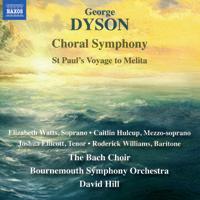
The Bach Choir
Bournemouth Symphony Orchestra
Dir: David Hill
Choral Symphony, St Paul’s Voyage to Melita NAXOS 8.557720
The libraries of our ancient universities contain a veritable treasure trove of ‘exercises’ submitted as part of the requirements for a doctorate in music, and though not every such composition could claim to be great, one would love to hear the prentice efforts of Sir Edward Bairstow, Dr Sidney Campbell, Sir Adrian Boult, Sir Malcolm Sargent and a whole host of organists and academics. A sacred or secular cantata for soloists, choir and orchestra was usually demanded, to exhibit the candidate’s mastery of various tricks of the compositional trade. A late change in the requirements for the Durham doctorate allowed a symphony to be submitted, an option eagerly taken by Drs Jackson and Wills; Francis Jackson’s symphony has been performed several times in York, and Arthur Wills has converted his slow movement into an elegy for organ, but otherwise only Vaughan Williams’s Cambridge doctoral exercise, his Mass in G major, has been honoured with performance and a recording by the Bach Choir. I would venture to say that Dyson’s Choral Symphony, submitted for his Oxford doctorate, was much more worthy of the performers’ attention. It is a finely-constructed, colourful setting of Psalm 107 which takes full advantage of the text’s dramatic possibilities of going down to the sea in ships, staggering like a drunken man and finally being brought to a safe haven. The vocal and orchestral writing is inevitably somewhat derivative; the subject of the fugue in Reubke’s Sonata on the 94th Psalm is often heard, and there is more than a suspicion of Parry in the mighty choral effects, while the voice of Richard Strauss is ever-present.
St Paul’s Voyage to Melita is a tougher proposition. The listener needs keen eyesight to follow the text, which is lengthy and again abounds in shipwreck, tempest and ultimate deliverance. Commissioned for the Three Choirs Festival, it is by no means a conventional sacred cantata, and much of its effect is derived from the high quality of the orchestral writing. The performances of these two works are of the highest order, and I heartily recommend this fascinating CD to anyone who would like to discover more of the composer of Dyson in D
See also the article about these pieces on p15 Timothy Storey
Choir of Bristol Cathedral
Dir: Mark Lee
Organ: Paul Walton
Byrd Vigilate; MacMillan O radiant dawn; Beamish In the stillness; James Whitbourn Hodie; Tallis Videte miraculum; Sumsion In exile; Leighton Drop, drop slow tears; Bruckner Christus factus est; Ave Maria; Casals O vos omnes; Sanders The Reproaches; Widor Surrexit a mortuis; Vaughan Williams Valiant-for-truth; Bednall O clap your hands.
REGENT REGCD 514
This CD is the tenth in the series ‘A Year at ...’ and it marks the first by Regent with Bristol Cathedral Choir. ‘A Year at ...’ offers the opportunity for such a wide range of musical styles and emotions: we have music from Pre-Reformation times through to our own century and from England, Spain, France, Austria and... Bristol itself, with the first recording of David Bednall’s anthem O clap your hands written shortly before the recording sessions. The choir is one of few cathedral choirs in the UK to feature boys and girls singing together permanently and, together with the six lay clerks and four choral scholars, they approach this very varied programme of music with sensitivity and an excellent range of dynamics. I particularly enjoyed Sally Beamish’s In the stillness (which was included in Choirbook for the Queen of 2011) and the performance of Sumsion’s In exile. It is also good to see the inclusion of John Sanders’ Reproaches which, as the notes to the disc suggest, ‘now takes its place alongside those of the old masters’.

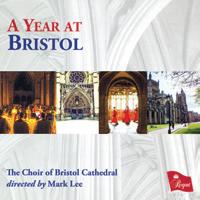 Nicholas Kerrison
Nicholas Kerrison
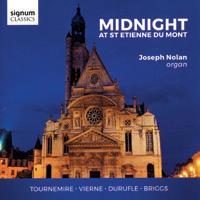
Organ: Joseph Nolan
Tournemire trans Duruflé Improvisation sur le ‘Te Deum’; Vierne Fantômes from 24 Pièces de fantaisie; Scherzo from Symphony No. 6; Finale from Symphonie No. 5; Duruflé Suite Op. 5; Briggs Le Tombeau de Duruflé.
SIGNUM SIGCD 470 TT 78:35
Joseph Nolan was awarded the Canon Bark Prize at the RCM as the most promising organ student. He continued his postgraduate work with Marie-Claire Alain and Gillian Weir before being appointed Organist and Master of the Choristers at St George’s Cathedral in Perth, Western Australia. His fame as a recording artist is growing rapidly, and his set of discs featuring the Widor symphonies on the Signum label has received critical acclaim. This particular release for Signum was recorded at the church of St Etienne du Mont, Paris, where Maurice Duruflé was organiste titulaire between 1929 and 1986. As Nolan states in the liner notes, recording the complete works of Duruflé was not an option: this is now reserved only for titular organists, hence the choice of his Suite Op. 5
The dark and somewhat moody atmospheric opening of the Prelude is superbly captured and contrasts with the
macabre yet melodic Sicilienne, which features a number of solo stops juxtaposed against the combination of sustained and rather more intricate writing. Nolan’s performance of the Toccata is exceedingly electric, almost to the extent that the important passage-work is lost in a flurry of the excitement.
Whilst David Briggs’s Le Tombeau de Duruflé is completely suitable for the instrument, would these plainsong-based pieces have worked better within a liturgical context? The 11 miniatures fill a good deal of this disc and do not always make for easy listening. However, the two movements from Vierne’s Symphonies Nos. 5 and 6 reveal this composer in a far less melancholic mood. They are very fine and rarely heard in their own right and easily equal any of his 24 Pi ѐces de fantaisie Certainly a significant release!
David Thorne
Transcriptions by Edwin Lemare and Jonathan Vaughn
Organ: Jonathan Vaughn St Mary Redcliffe, Bristol
Arr Vaughn Finale from Symphony No. 4; Nutcracker Suite; arr Lemare Andante cantabile from Symphony No. 5; Nocturne in C sharp minor; Fantasy-Overture to Romeo and Juliet.
REGENT REGCD 494 TT 69:43
Gone are the days when orchestral works transcribed for the organ were dismissed as ‘examples of misapplied skill’, and it is now both customary and respectable to use them to leaven a programme of organ music. As we listen to this admirably recorded disc we can enjoy familiar music in transcriptions by Edwin Lemare, the late-Victorian arch-High Priest of this art, and by the player himself. Not one’s least enjoyment is in hearing playing of the highest order on an instrument perhaps not expressly designed for this repertoire, but the opulent tonal qualities of which suit it so well, and which have long been admired as a supreme example of Arthur Harrison’s genius. Organ-lovers will treasure this CD, but one may well question the wisdom of a programme consisting entirely of transcriptions. There are delectable moments such as the Sugar Plum Fairy, and Romeo and Juliet succeeds admirably, but the essentially static nature of organ tone is illsuited to lengthy symphonic movements.
Timothy StoreyRoger Sayer
The organ of the Temple Church
Sonatas in E flat minor, F minor, B minor, G sharp minor, D flat major, C minor, A major, C major, D major, D minor, A minor, F major, E minor, F sharp major, G minor, B flat minor, E flat major, Fantasie-Sonatas in B major, A flat major; Pastoral-Sonata in G major.
PRIORY PRCD 1165
We know that, immediately after his death, the music of J S Bach fell out of favour with the emergence of the new Classical style, and it took some considerable time for a renewed interest to emerge, mainly through the encouragement and enthusiasm of Mendelssohn. Today, of course, Bach’s place in musical history is assured and his music is heard worldwide. The same cannot be said of quite a number of composers. When was the last time you heard a Hindemith organ sonata in a recital, or one by Rheinberger? Contrast this with Harvey
Grace, a great enthusiast for Rheinberger, who considered that most organists ‘will agree that the 20 sonatas and the 100 detached pieces ... are second in importance only to Bach’s organ music’. So it was with great interest that I began to listen to Roger Sayer’s performances of the 20 sonatas. In an article in the Organ magazine in 2017 Roger said: “Rheinberger made a huge contribution to the organ repertoire. The music is powerful, profound and honest, and the counterpoint is particularly fine. In every sonata the tapestry of lines within lines is evident, and one does not need to look very far to be impressed by this. Like Brahms, Rheinberger manages to combine beauty with compositional excellence.” The Temple Church, where Mr Sayer has been Musical Director since 2013, is the ideal venue for recording this music. The fine melodic lines and counterpoint shine through in each sonata and the colours and character of the excellent Harrison & Harrison organ have been captured well by Priory. Roger Sayer’s performances show a clear commitment to the value of this music and the whole is a welcome addition to the catalogue which may lead to a greater appreciation of the composer’s music.
Nicholas KerrisonDavid Halls plays the organ of Salisbury Cathedral
Preludes and Fugues in C minor BWV 546; A major BWV 536; B minor BWV 544; A minor BWV 543; C major BWV 545; E minor BWV 548; Alla breve in D major BWV 589.
The liner notes from this Priory disc state that there have rarely been recordings featuring the works of Bach played on British cathedral organs even though a good number of listeners will probably hear Bach played regularly before and after services. A number of recent recordings are of course available featuring either historic organs or those recorded on more recent instruments.

The works played here on the fine 1877 Willis organ of Salisbury Cathedral vary in proportion and style and make up a well-balanced programme. The majestic performance of the C minor Prelude which opens the disc captures the grandeur of the building and the rich tonal qualities of the instrument. Although there seems to be a slight lack of impetus in the triplet figuration following the impressive beginning, the momentum certainly picks up towards the end of the fugue. Acclimatising to the registration in the Prelude and Fugue in A takes a little more time. Perhaps a more consistent, lighter texture would have been welcome. The phrasing in the Fugue is clearly noticeable despite the size of the building. The registration used in the B minor Prelude and Fugue is similar, although the upper work in the central section of the Fugue is more effective whilst the build-up in registration reflects most convincingly the monumental writing in the final section.
My slight disappointment is a seeming lack of contrast in the extended middle section of ‘The Wedge’ (E minor) fugue; only towards the very end is there a really prominent crescendo.
David Halls’s well-crafted performances, revealing his insight into Baroque interpretation, enables the counterpoint to come across very effectively on an instrument certainly not designed for this repertoire.
David ThorneChristmas CDs which arrived too late for a full review:
The Choir of Oriel College, Oxford
Dir: David Maw
Organ: Alexander Pott and Johnson Lau
Stainer arr Maw Come thou long-expected Jesus; Mendelssohn I waited for the Lord; Goldschmidt A tender shoot; arr Maw The Holly and the Ivy; I saw three ships; Gigout Rhapsodie sur des Noëls; arr Willcocks Ding! dong! Merrily on high; Sing lullaby; arr Hesketh God rest ye merry, gentlemen; arr Novello Adeste fideles; Dupré
From heaven above came angels; Lumen ad revelationem; Victoria O magnum mysterium; Daquin Noël étranger; Lasso Omnes de Saba; arr Wood Past three o’clock; Ermend Bonnal Noël landais; Luca Marenzio Tribus miraculis; Bach Herr Gott, nun schleuß BWV 617; Bingham Oriel Magnificat; František Tuma Canticum Simeonis; Byrd Senex puerum portabat; Wood Hail, gladdening light!
The Sixteen
Dir: Harry Christophers
Anon Resonemus laudibus; Sweelinck Hodie Christus Natus est; Handl Omnes de Saba; Resonet in laudibus; Eccard Resonet in laudibus; Plainsong Veni, veni, Emmanuel; Crudelis Herodes; Kirbye Vox in Rama; Lassus Videntes stellam Magi; Omnes de Saba; Resonet in laudibus; Tallis Videte miraculum; Dering Quem vidistis, pastores?; Byrd O magnum mysterium; This day Christ was born; Victoria Quem vidistis, pastores?; Sheppard Reges Tharsis; Guerrero Pastores loquebantur; Philips O beatum et sacrosanctum diem.
Choir of St John’s College, Cambridge
Dir: Andrew Nethsingha
Organ: Joseph Wicks
Britten A hymn of St Columba; James Burton Tomorrow shall be my dancing day; Vaughan Williams arr C Robinson The truth sent from above; Ian Shaw Adam lay ybounden; I sing of a maiden; Trad arr Cleobury The cherry tree carol; James Long Vigilate; Palestrina Fuit homo missus a Deo; Gibbons This is the record of John; Archer The linden tree carol; John Joubert There is no rose; Tim Watts The birth of speech; Trad arr Pettman The angel Gabriel from heaven came; F Jackson I know a flower; Alan Bullard Glory to the Christ Child; Paul Comeau Lux mundi; Trad arr Willcocks Tomorrow shall be my dancing day; Bingham The clouded heaven; Bednall Noe, noe.
The Girl Choristers and Lay Clerks of Ely Cathedral
Dir: Sarah MacDonald
Organ: Aaron Shilson
Trad arr Armstrong Deck the hall; Edwards No small wonder; Adam arr MacDonald O holy Night; Joubert There is no Rose; Warlock arr Maurice Jacobson Come to Bethlehem; Trad arr Alex Berry Away in a manger; Annabel Rooney Glorificamus Deum; Richard Peat Corpus Christi Carol; Trad arr MacDonald The Cherry Tree Carol; The holly and the ivy; Rubbra A Hymn to the Virgin; Bernard Trafford Sir Christèmas; Mealor A spotless rose; Lole Love came down at Christmas; Peter Gritton Follow that star; Matthew Larkin Adam lay ybounden; Rutter What sweeter music; Gary Higginson St Godric’s Hymn; Wood arr Oxley Mater ora filium; Stopford A Christmas blessing; William Kirkpatrick arr Gary Cole Away in a manger; Todd My Lord has come; Ben Parry Three angels.
The Choir of King’s College, Cambridge
Dir: David Willcocks, Philip Ledger, Stephen Cleobury 2 CD set
It’s a common myth that only the rich and famous leave money to charity when they die. The reality is that without gifts left in wills by people ‘like you and me’, many of the charities we know and support today wouldn’t be able to exist. Thankfully, 74% of the UK population support charities, and a good number say they’d happily leave a gift in their will once family and friends have been provided for.
The problem is that ‘the way to hell is paved with good intentions’, and most people do not leave any money to charity in their wills. Are you one of these? And if so, did you know that a reduced rate of inheritance tax (IHT), 36% instead of 40%, is applied to estates leaving 10% or more of their total to charity? This means, in essence, that on an estate worth, for example, £500,000, instead of paying IHT of £70,000, the tax would be £56,700. 10% of the estate – once the nil band of tax is removed – would be £17,500, which you could leave to the charity or charities of your choice, and the reduction in funds payable to family and friends would be only £4200.
Without a charitable bequest
If you consider that most charities would not survive without legacies, that a reduced rate of IHT will apply to your estate if you give 10% of it to charity, and that you are ensuring the vital work of your chosen charity can continue, it makes very good sense to donate 10% to charity in your will. The icing on the cake is that the taxman gets a lot less of your hard-earned cash than would be the case if you were to leave a smaller percentage.
If you have already made a will, as many if not most of us have, it’s still quite easy to change or add to it by writing a codicil. Sometimes it’s simpler to make a new will, and you’d do well to speak to a solicitor, but the benefits to whatever charity you choose to support (which clearly we hope will be FCM) will be worth the extra effort this requires.
Example:
With a 10% charitable bequest
including nil rate band
receives £56,700 instead of £70,000, and beneficiaries receive only £4200 less
A Pecuniary Gift
I give the sum of £ _____________ (in figures and words) to the Friends of Cathedral Music (FCM) (registered charity No. 285121). I direct that the receipt of the Treasurer of FCM shall be a sufficient discharge to my executors.

A Residuary Gift
I give the whole (or a _____% share) of the residue of my estate to the Friends of Cathedral Music (registered charity No. 285121). I direct that the receipt of the Treasurer of FCM shall be a sufficient discharge to my executors.
Please remember Friends of Cathedral Music in your will and help us to secure our priceless heritage for future generations

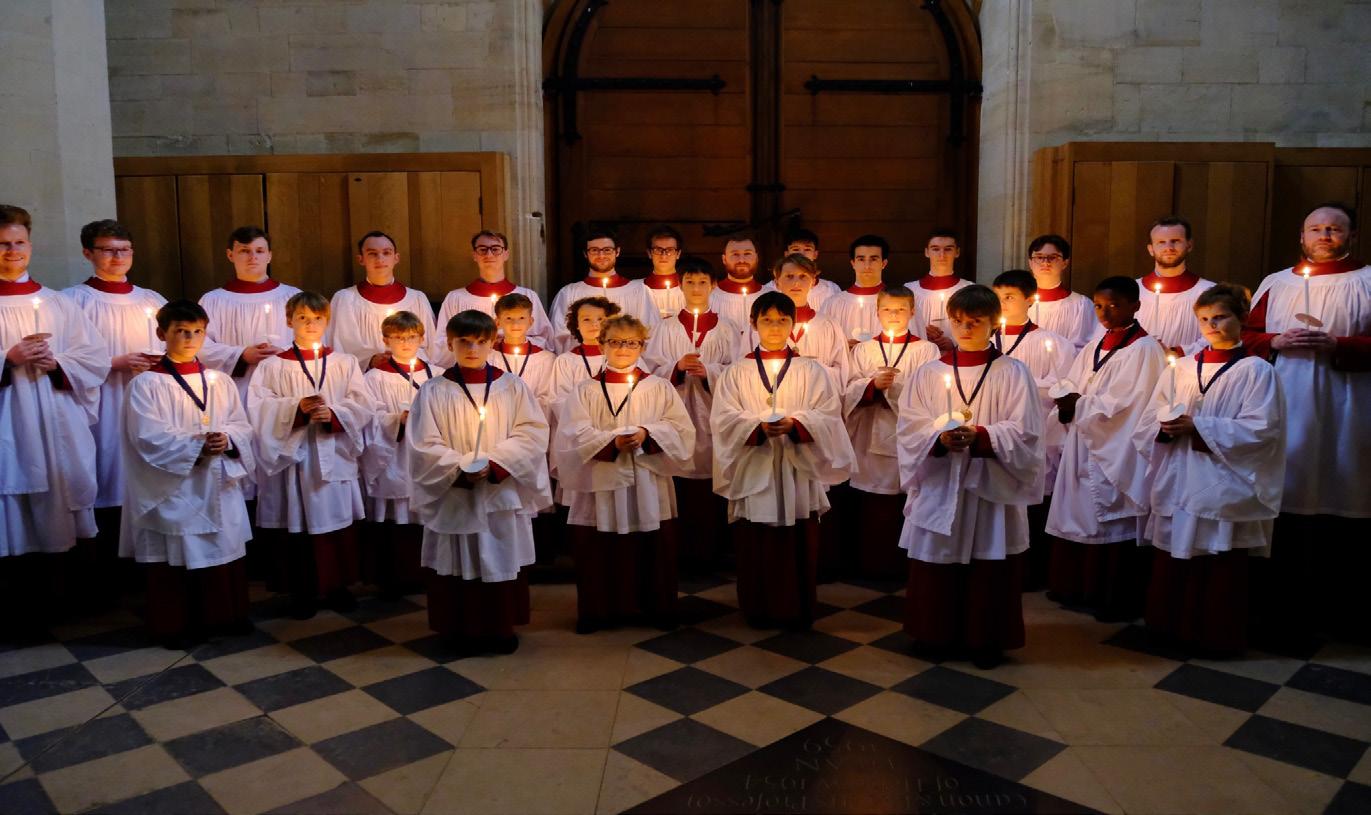
Westminster Cathedral
Wed 19 & Thurs 20 December 7.30pm
Westminster Cathedral Choir and Orchestra with conductor Mar tin Baker
Tickets available from Ticketmaster : 0844 844 0444 or www ticketmaster
We provide all types of new instruments

The Girl Choristers and Lay Clerks of Ely Cathedral directed by Sarah MacDonald
We can give unbiased advice for all your requirements
Hillside Organ Works Carrhill Road, Mossley, Lancashire OL5 0SE Tel: 01457 833 009
www.georgesixsmithandsonltd.co.uk
REGCD527





New carols, new arrangements, and a selection of beautiful and exhilarating Christmas favourites
Recorded in the glorious acoustic of Ely Cathedral, this disc offers twenty-three immediately attractive and captivating carols for Christmas
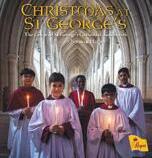
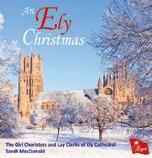
Of particular interest are first recordings of original new carols by Ben Parry, Gary Higginson, Matthew Larkin, Annabel Rooney, and the instantly-memorable winner of the BBC Radio Three Carol Competition 2017, ‘Sir Christèmas’ by Bernard Trafford
The Choir of St George’s Cathedral, Southwark directed by Norman Harper
An unusual selection of choral music for Christmas, framed by four of the great Christmas hymns, and six Gregorian antiphons for the two main Masses of the nativity celebration – Christmas Midnight Mass and the Mass for Christmas Day

The recording features first recordings of new carols and arrangements by Francis Duffy, Timothy Craig Harrison, Christian Strover, and Norman Harper, together with a rare recording of James MacMillan’s motet In splendoribus sanctorum with its virtuoso trumpet interludes, brilliantly played by Simon Desbruslais
The Choir of Lincoln Cathedral
directed by Aric Prentice
The latest addition to the Regent ‘A year at ’ series marks our first recording with the Choir of Lincoln Cathedral
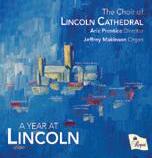
Music by Bingham, Blatchly, Brahms, Byrd, Chilcott, Elgar, Finzi, Lloyd, Hawes, Mendelssohn, Parsons, Tallis, Wood, Taverner, Vaughan Williams, Wesley, and Wilberg
VIRTUOSO ORGAN DUETS
The Oxbridge Organ Duo Benedict Lewis-Smith, Julian Collings
Organ of Blackburn Cathedral
Boléro Maurice Ravel transcribed Andrew Senn
Paean Stephen Paulus

The Firebird Igor Stravinsky transcribed Guy Bovet

REGENT RECORDS, PO Box 528,Wolverhampton, WV3 9YW
Tel: 01902 424377 www regentrecords com (with secure online ordering)
Retail distribution by RSK Entertainment Ltd, Tel: 01488 608900, info@rskentertainment co uk
Available in the USA from the Organ Historical Society www ohscatalog org
